








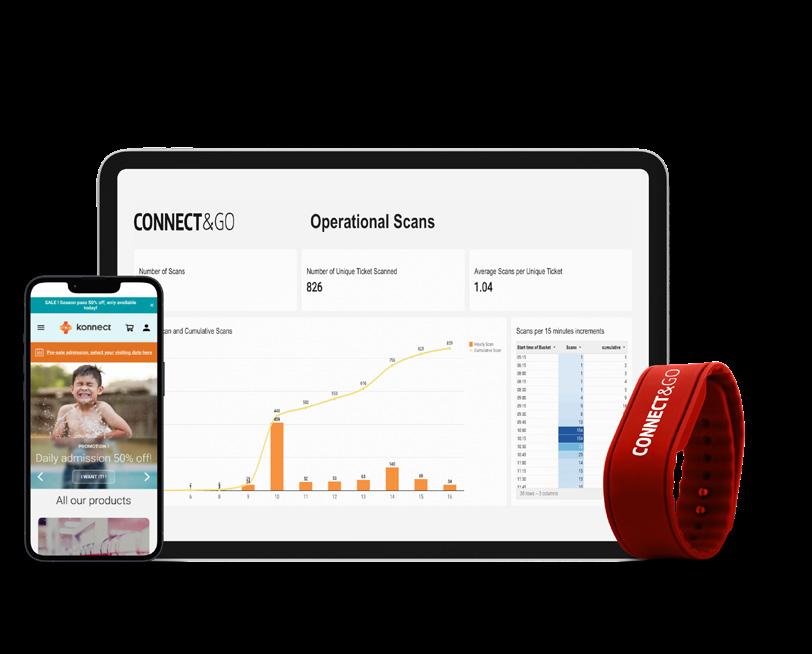
That gives you everything you need to manage your venue seamlessly while focusing on what matters the most: your guests.
MEET US BOOTH #1840 NOV. 19-22 IN ORLANDO


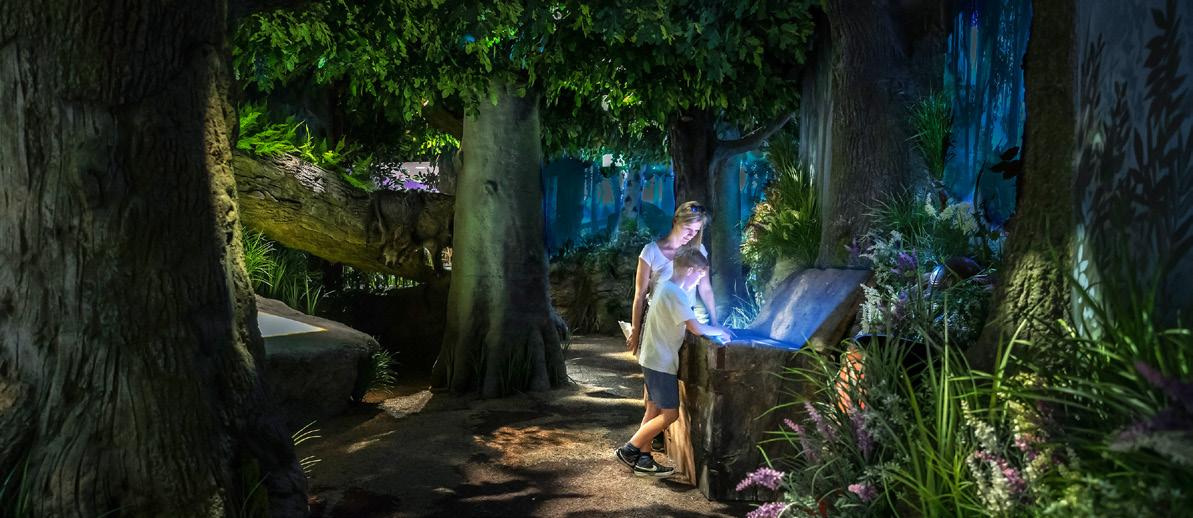


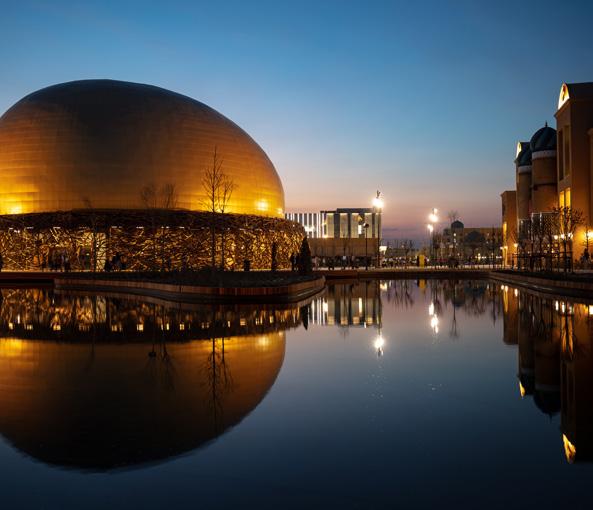

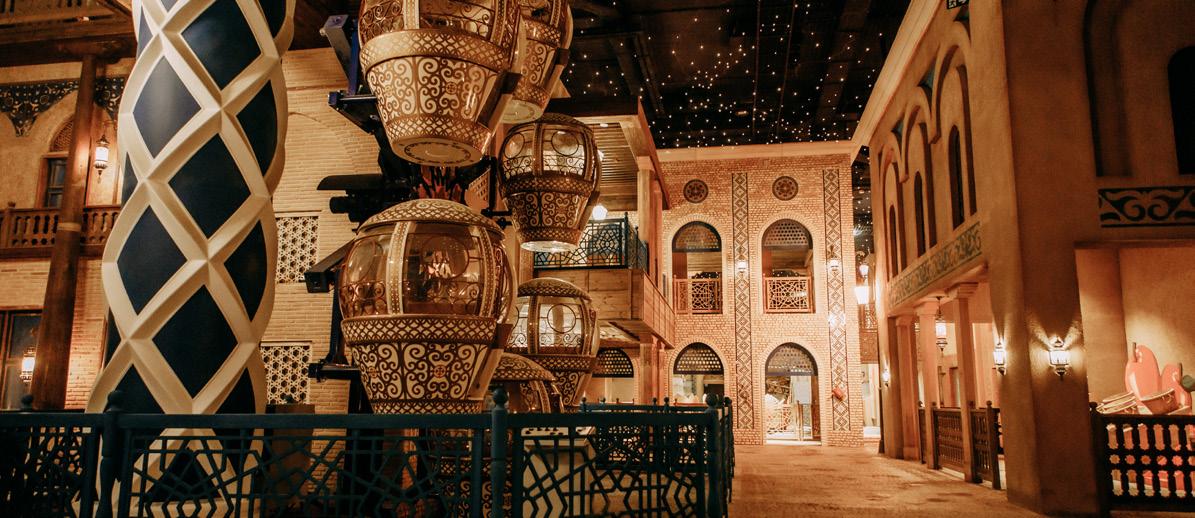

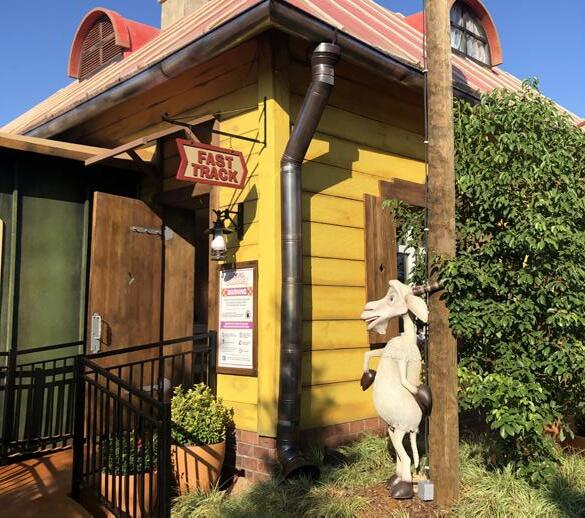







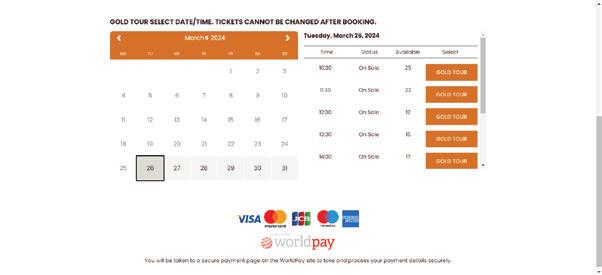







18
24

32
Don MacBain composes an original score for an outside-the-box project
Flying in new directions by Joe Kleiman
Flyover in Chicago combines Brogent’s reliable flying theater hardware with the latest in storytelling technology
Imagine’s extraordinary evolution by Judith Rubin
Founder Tom Zaller takes Imagine to its 15th anniversary and beyond
Operational technology disruption by Andrew Friedenthal
Connect&GO looks to move from disruptive past to customer-led future
Taking the spotlight interview by David Green
Visual Terrain’s Lisa Passamonte Green celebrates 30 years of lighting design for themed entertainment
More than just a show interview by Becci Knowles
RWS Global Senior Executive Creative Directors Jason Sparks and Damien Gray discuss how technology is transforming the audience experience and enhancing artist performance
36
38
200 days and counting by Jim Ogul
Expo 2025 Osaka nears its grand opening date in April, with additional expos in the pipeline
Celebrating 50 years of creative excellence by Wendy M. Grant
Adirondack’s journey from the theater stage to the world stage
45 The IPM story by Gabrielle Russon
InPark Magazine celebrates its 20th anniversary
50 Play in new ways interview by Keith Miller
Hasbro continues its successful LBE ventures with a treasury of brands
54 Top of the Rock soars to new heights by Gene Jeffers
Creating a compelling guest experience within iconic Rockefeller Center
59 Thrills for all by Jordan Zauha
Vekoma Rides excites the young and young-at-heart
63 The man behind the magic by Becci Knowles
Brian Paiva’s Octopus Design Studio extends its tentacles into new markets and innovations
68 Gantom’s inner light by Jordan Zauha
CEO Philip Hernandez’s focus on innovation helps guide the lighting manufacturer
73 Thrill rides and children’s slides by Joe Kleiman
WhiteWater creates custom attractions for two leading waterparks
78 Smoky Mountain memories by Judith Rubin
Technologies converge to tell the story of a cultural icon inside the immersive Dolly Parton Experience

InPark Magazine (ISSN 15531767) is published by Martin Chronicles Publishing, LLC. 2349 E Ohio Ave. Milwaukee, WI 53207, USA. Shipping address: 2349 E Ohio Ave. Milwaukee, WI 53207, USA. Phone: +1-262-4127107. Printing by Johnson Press of America.
Contents © 2024 InPark Magazine. All rights reserved. Nothing in the magazine may be reproduced or used in any manner without the prior written permission of the magazine. InPark Magazine is not responsible for unsolicited manuscripts, photographs or illustrations. Such material must be accompanied by a selfaddressed and stamped envelope to be returned.
Postmaster: Send address changes to InPark Magazine 2349 E Ohio Ave. Milwaukee, WI 53207, USA. Subscriptions are available annually for $45 per year ($70 international). Opinions expressed in editorial matter are not necessarily those of InPark Magazine or its publishers, Martin Chronicles Publishing, LLC.
“We need to reintroduce ourselves,” says Tom Zaller, Founder and CEO of Imagine, now celebrating its 15th anniversary.
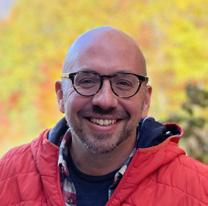
Ifind it hard to believe that this issue marks InPark Magazine’s 20th anniversary. Key moments and events in my memory feel like they happened just a few years ago, but no, it’s more like 15-20 years ago!
I’m proud of what InPark has become over the decades, shaped by people and voices I am forever indebted to. The early days were surrounded by friends and family that did everything from write articles to put labels on envelopes. Bill St. Yves, the late Jeanne Lundgren, Laurice Marier, Brian Szaks, Kim & Mitch Rily, Jason Paul Collum, Stefan Lawrence, Vince Christy and Damian Christianson were critical to getting InPark going. More recently, it’s been the wisdom and efforts of Judith Rubin, Joe Kleiman, Jordan Zauha, Keaton Jadwin, Andy Vila and many others that have kept InPark sustained through a major recession, global pandemic and the general ebb and flow of the themed entertainment industry. (I am sure I have missed names, and for that I apologize.)
Of course, my parents have been there for all of it, and their love, support and resources have been critical. The same is true for my partner, Paul Williams. I am so incredibly grateful for all the help everyone has provided through the years.
One accomplishment I’m particularly proud of (largely thanks to Judy’s help) is the cadre of writers we now rely on for crafting the wonderful editorial content InPark is recognized for. They collectively are responsible for maintaning InPark’s reputation in the industry and they are a pleasure to work with.
Their hard work for this issue has become somewhat of a celebration of anniversaries! Our cover story, Imagine Exhibitions, is celebrating 15 years (p. 18), Creative Studio Berlin is 5 (p. 3), Visual Terrain is turning 30 (p. 29), Technifex is 40 (p. 7), and Adirondack Studios is kicking off their 50th anniversary (p. 38). It’s great to be in such highly-esteemed company.
Of course, I encourage you to read Gabrielle Russon’s article about the start and growth of IPM on page 45. InPark’s origin story is a pretty good one, though I might be a bit biased.
None of this would be possible without the collection of clients supporting the magazine, as well as our wonderful readers. Without both parties we would cease to exist. Thanks to all of you!
Please continue to enjoy InPark, share your copy of the magazine with a colleague, and sign up for a free subscription online at inparkmagazine.com
Thank you,

Martin founded InPark Magazine in 2004, combining years of experience working in themed entertainment with a passion for writing and design.

PUBLISHER
Martin Palicki
EDITORIAL ADVISOR
Judith Rubin
SENIOR CORRESPONDENT
Joe Kleiman
NEWS EDITOR
Jordan Zauha
Raised in San Diego on theme parks, zoos, and IMAX films, Joe Kleiman would expand his childhood loves into two decades as a projectionist and theater director within the giant screen industry. In addition to his work in commercial and museum operations, Joe has volunteered his time to animal husbandry at leading facilities in California and Texas and has played a leading management role for a number of performing arts companies. Joe has been news editor at InPark Magazine since 2011, becoming the publication’s senior correspondent in 2021. Follow on Instagram @JalekAvant
CONTRIBUTORS
Andrew Friedenthal
Wendy M. Grant
David Green
Gene Jeffers
Becci Knowles
Keith Miller
Jim Ogul
Judith Rubin
Gabrielle Russon
Jordan Zauha
DESIGN
Keaton Jadwin
EDITORIAL ASSISTANCE
Jordan Zauha



InPark News highlights new projects and products in the industry. To include your news item in print, contact Marty via news@inparkmagazine.com.
Cinnamoroll’s Little Big Adventure in Puroland flies high with Alterface technologies
Alterface technologies have united the iconic Cinnamoroll character with adoring fans at the Discovery Theater in Sanrio Puroland theme park in Tokyo. Cinnamoroll is famous for endearing and inspirational quotes, many of which carry deep meanings about the importance of friendship, kindness and never giving up on your dreams. In a first for Asia, a pair of synchronized theaters offer interactive gameplay and special effects for guests as they embark on Cinnamoroll’s Little Big Adventure, a 5-minute romp through the sky chasing rainbows and overcoming obstacles together.
“This is Puroland park’s first new attraction in more than a decade,” says Stéphane Battaille, CEO of Alterface. “It is a delightful story-based ride with audience engagement at key moments that asks and answers several questions: Why is a rainbow so beautiful? What is it made of? The adventure creates a strong emotional connection between the guests, the lovable game characters and this sense of wonder.”
The gameplay in Cinnamoroll’s Little Big Adventure strikes a perfect balance between storytelling and interactive engagement. While there is a competitive element that encourages guests to use their Magic Star Wands to overcome obstacles, the focus remains on the narrative journey rather than pure shooting mechanics. This approach ensures that the emphasis stays on the emotional connection and the unfolding adventure, allowing guests to immerse themselves fully in the story while still enjoying moments of friendly competition.
Each of the two theaters boasts 35 motion-based seats, including two spaces designated for wheelchairs and a frontof-house bench for small children. Interactive opportunities and special effects create an exciting experiential environment as guests team up with Cinnamoroll and his companions in their quest for rainbows. As the ride progresses, guests become essential helpers with their Magic Star Wands, targeting a series of obstacles. Scores for effectiveness with the devices are kept at each seat, and the most accurate helpers are rewarded with their faces projected on the theater screen at the end of the experience.
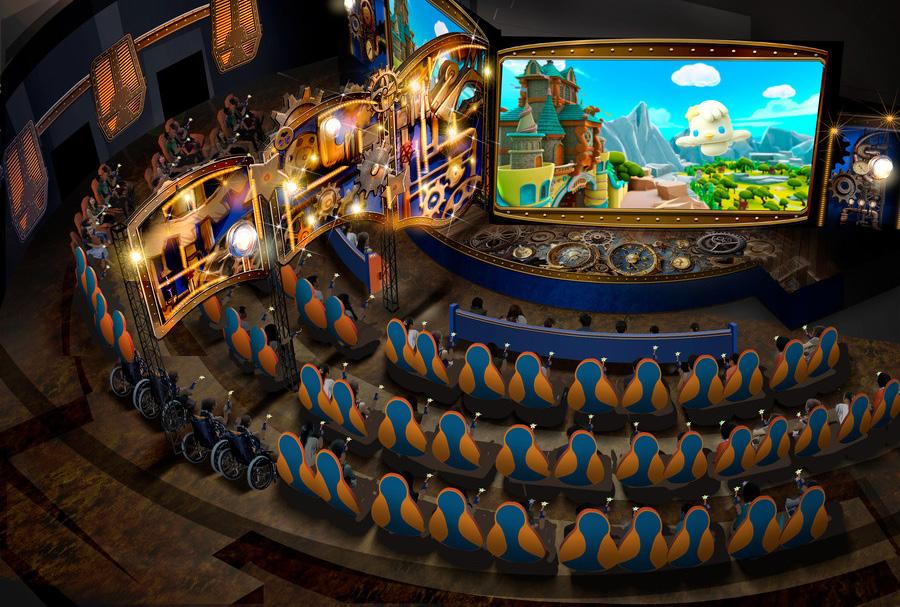

This dual theater approach offers many advantages, from providing unique, interactive guest experiences and a huge capacity of 600+ people per hour throughput within a compact location, from maximizing staff utilization and ensuring a good return on investment.
“‘Believe in yourself and anything is possible,’ Cinnamoroll has told his fans,” says Battaille. “At Alterface we believe in making any interactive experience possible. Every IP character deserves to be brought to life for their fans. Our team and our patented technologies have made that happen for Sanrio and Cinnamoroll through this unique dual screen approach to entertaining and engaging guests. We can’t wait for our next challenge.” •











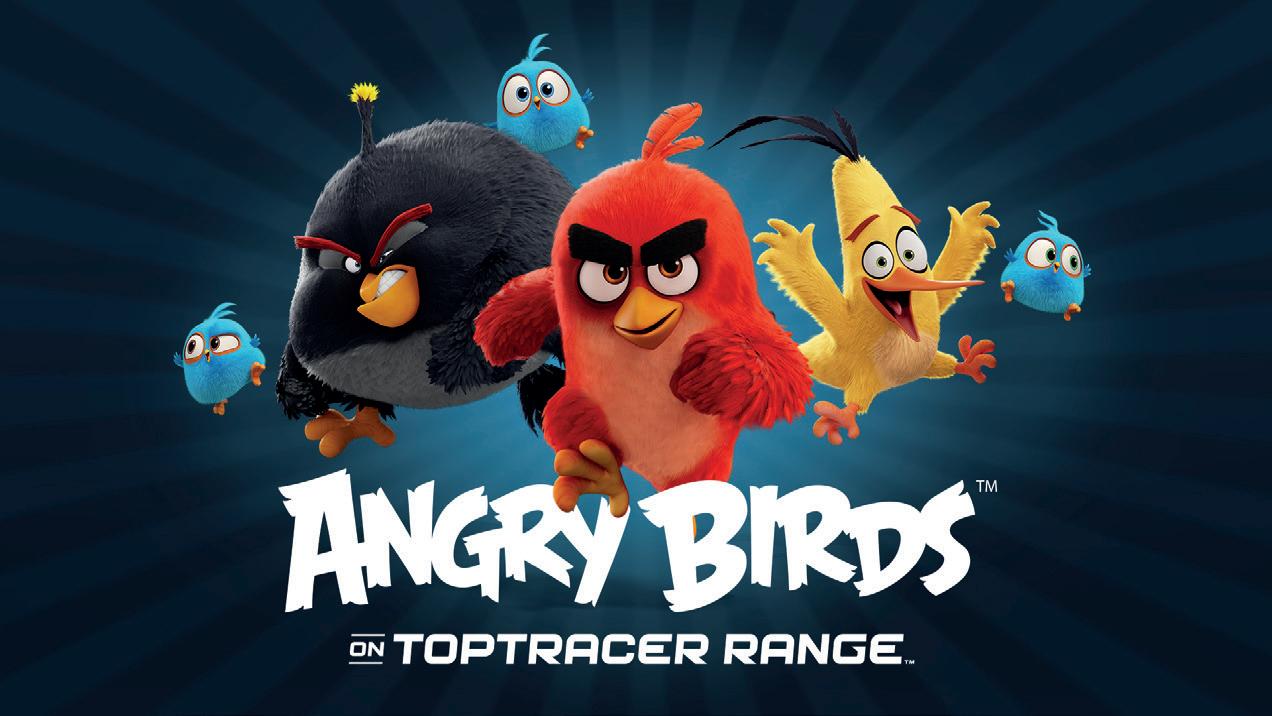
Don MacBain composes an original score for an outside-the-box project
by Gabrielle Russon
Don MacBain sat quietly, thinking about the beautiful, sparkling gems on display in the meditative silence of the Mineral Gallery at the Petroleum Museum in Midland, Texas. The room’s centerpiece, holding court over a hundred exquisite specimens, is a geode the size of a boulder, so enormous it can’t be moved without a forklift. Some of the surrounding displays feature polished, gemlike stones, but the most stunning are uneven and more natural, with glimmering crystals cascading down rough rock edges.
MacBain couldn’t help but wonder: what sort of soundtrack could complement such a space? How can one write a score suiting its mineral marvels and the hushed presence of Mother Nature? What might the formation of a geode sound like, as sonic texture and as music? MacBain sat down at his electronic keyboard and got to work.
The award-nominated media producer, whose 40-year career spans feature films and digital effects in animation, is finally focusing on his true passion: music. He sees museums as having an untapped opportunity to strengthen existing exhibits by adding specially tailored music that accompanies and accentuates the works on display, creating new sensory experiences for guests. For the industry, it’s more proof to the value of reinvestment and improvement, even for existing exhibits.

Some museums license musical soundtracks to create a maximum emotional effect. Other museums take it a step further and hire composers to create custom music personalized for the exhibit. At the Petroleum Museum, MacBain composed an original score called “Meditation on a Geode” that began playing in a 30-minute loop this year. “We have a pretty unique claim: What you’re hearing was custom scored for us, and you’re not going to hear it anywhere else,” said Bryan Grant, the museum’s executive director.

Grant always assumed the Mineral Gallery had been complete when he stepped into his role last year. The low-lit room was a peaceful and meditative environment where the beautiful rocks were the main focus. What else did the museum need? Nothing, Grant figured.
However, MacBain had a vision that he pitched directly to the museum after he previously produced 100 pieces of their media a decade ago [see InPark issue #60, “A well-oiled process”]. Hearing the sounds of the oil industry during his previous experience on-location doing media production gave him a reference point for the potential soundscape for the Mineral Gallery. Music would enhance the meditative feeling of the room, MacBain believed.
“Now that the soundtrack is there I don’t know how we managed without it,” Grant said. “Don’s music feels like you’re in this underground cave with all these amazing crystals. You feel it as soon as you walk into the room, transporting you to a different spot even though you’re standing in the middle of the Petroleum Museum.”
Although the music is captivating, Grant felt it was important that the score be cohesive with the room – allowing the geodes to still be the stars. The music is neither overpowering nor too loud nor is it too quiet to go unnoticed.
Grant said he hadn’t considered using a soundtrack in a museum before this point. If a board member would have encouraged him to add music, Grant said he likely would have considered buying open licensed stock music online and then trying to find one piece that worked. Instead, working directly with a composer meant the Petroleum Museum received a custom piece of music for the gallery and its atmosphere.

The space features MacBain’s music playing from SONOS speakers hidden above the gem cases, but he also installed three specially tuned windchimes concealed in different areas of the gallery, activated by oscillating fans and adding to the constantly-changing soundscape.
MacBain also chose to add an Acolyte Instruments handpan drum that visitors can softly play while in the exhibit space. The drum plays in the D-minor Celtic scale and matches an audio patch of the drum MacBain integrated into his score, so that no matter what guests play on the drum it fits with the music.
“It provided a very hands-on analog interactive way for people that come through the museum to be able to have a little bit of fun and interact within that gallery,” MacBain said. “Each time somebody walks through this gallery, they’re going to get a completely different experience sonically. Maybe nobody’s playing the drums, or maybe a couple kids are having a jam session.”
The Petroleum Museum tells the local community’s deeprooted oil history. Even though museum staff want to bring in art (as part of STEAM, which also includes science, technology, engineering and math) that can be difficult considering the museum’s industry-focused theme. Then along came the drum and MacBain’s musical score.
MacBain wants to reinvent museums and work with clients who understand the power music can have connecting emotionally with visitors and keeping them engaged to grow attendance. “It’s thinking outside the box,” MacBain said of his latest venture giving museums a new sound.
An artist at work
MacBain composed “Meditations on a Geode” on the synth in his studio. “Once I sit down, and then if something fascinates
me, I’m gone for hours. I’m just in the zone,” MacBain said. “It’s just when I put myself in that space, if something inspires me, then it sort of takes hold and I just go with it.”
He explained the creativity behind his original score which took about four months to complete and was ultimately produced at Margarita Mix, a commercial recording studio in Santa Monica.
He wanted his music to feel “like you’re in a cavernous space, so it has this metallic spaceship hum that goes through it. Then I began imagining the crystals forming and folding in on each other.” He also found inspiration in learning how geodes form from flowing and cooling lava, which actually pulses somewhat like a heartbeat.
Grant sensed MacBain’s devotion to his work as the composer traveled to Texas and handled the installation of the project. “You could tell he was passionate about what he does,” Grant said. “You could almost see a sense of joy in him. He’s not just collecting a paycheck.”
For nearly 40 years, MacBain worked as a producer in movies, commercials and theme parks. Some of his major projects included being production supervisor on the cult classic “Starship Troopers” and being the digital producer on the flying theater at Ferrari World Abu Dhabi as well as also producing Ferrari Land’s flying theater film at PortAventura World in Spain [see InPark issue #69, “Flying Dreams: Eyes in the skies”].
But few people he worked with knew his passion for playing music and that he is a classically trained piano player. “He’s a very accomplished musician, and it’s always been a very big part of his life. Even though he is spending a lot of his time producing, there was always a studio and a bunch of instruments nearby,” said his close friend and collaborator Cecilia González-Andrieu. “Whenever he walked in the door in my house, the first thing he would do would be to walk over to the piano.”
MacBain has occasionally shown off his composition talents over the years, such as when he created a corporate theme for Wells Fargo or developed the film score for “Full Clip” starring rapper Busta Rhymes.
MacBain’s love of music developed early. At age five, he picked out “Twinkle, Twinkle Little Star” and was able to mimic, by ear, his older sister’s lessons on the piano. His talents surprised his family, and his mom soon had him paired with his own piano teacher. He majored in Communication Arts (B.A. - Film Production) with a minor in music at Loyola Marymount University in Los Angeles which is where he met González-Andrieu. Early on, MacBain showed a level of sophistication and professionalism that stood out among the other college students, González-Andrieu said. He was juggling


his studies and singing in the chorus while he also worked on commercial shoots as a production assistant and production coordinator.
“He is one of these rare but wonderful creatures who has really classical training,” she said, calling MacBain an “extraordinary pianist.”
During the height of the AIDS crisis, González-Andrieu produced a public service announcement to encourage love and acceptance – a radical message at that time. MacBain composed the score. She talked about the storyboard and her vision and then let MacBain create. He was in control of the music and González-Andrieu said she trusted him completely. “He was the master,” she said. The result was a PSA with an emotional punch where she was proud of getting the message out, not to mention its nomination for a Clio Award.
“All the music that he did was always really effective in getting your heart involved and pulling you into a place where you were emotionally invested in what you were watching,” González-Andrieu said. “His music excels at that.”
The museum opportunity
As museums continue to reinvent how music is incorporated into their spaces, the Petroleum Museum’s executive director said MacBain’s music adds a finalizing touch to the Mineral Gallery. “It completed a sensory experience in the room that I didn’t know needed completing,” said Grant. “This is what

this environment needed to be all along. It really does complete the space.”
For MacBain, it’s the first in a string of musical projects he hopes to create, drawing on his vast experience in multiple disciplines. “Both film and theme parks have long understood the importance of music,” MacBain explained. “I think there’s a huge opportunity for museums to enhance both new and existing exhibits with music to add additional dimensions to the guest experience.”
MacBain is certain the market is only going to expand. “As museums increasingly need to compete with other visitor experiences, soundscapes are a proven way to re-energize spaces and draw in more guests. And that increased attendance should be music to any museum director’s ears.” •
To reach Don MacBain, you can write to him at info@BackGroundSongs.com, or visit his music website BackGroundSongs.com
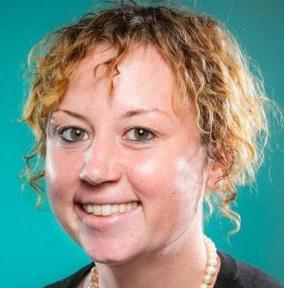
Gabrielle Russon is a freelance journalist who lives in Orlando. She previously covered the business of theme parks for the Orlando Sentinel, earning several statewide and regional honors for her coverage over theme park injuries, the economic challenges facing theme park workers and the pandemic’s impact on the tourism industry. A Michigan native, she is a Michigan State University graduate and has worked at the Sarasota Herald-Tribune, the Toledo Blade, the Kalamazoo Gazette and the Elkhart Truth during her newspaper career. In her spare time, she loves visiting Orlando’s theme parks and running marathons.


Flyover in Chicago combines Brogent’s reliable flying theater hardware with the latest in storytelling technology
by Joe Kleiman
Atwo-year collaborative effort between creative designers, engineers, and filmmakers transformed a 48,000-squarefoot IMAX theater perched above Lake Michigan on Chicago’s historic Navy Pier into Flyover in Chicago, the latest flying theater attraction in Pursuit’s Flyover portfolio. At their core, flying theaters combine a narrative- or locale-based film with a complex ride system designed to simulate the thrill of flight, and Flyover in Chicago marks advances in both areas.
On the film side, Flyover employed the latest in advanced drone technology, with one of Hollywood’s leading pilots at the controls, to create a new take on the Chicago landscape. Creative director Rick Rothschild of FAR Out! Creative sees the production as the latest evolution of the flying film format. “We were able to take the traditional flying theater film style and adapt it to showcase Chicago’s urban beauty,” he says.
On the hardware front, Brogent’s latest iteration of its i-Ride ride system provides the synchronized motion and special effects required to give guests that feeling of flight. i-Ride offers a full six degrees of motion while suspending riders as close to the screen as possible. Brogent has supplied hardware at
all of Flyover’s venues since the chain’s first installation in Vancouver in 2013. For Flyover in Chicago’s signature film, Believe Chicago, Brogent created a custom motion profile featuring brand new movements to perfectly match the unique flying patterns of the drone camera.
To learn more about the creation of Flyover in Chicago, InPark Magazine spoke with representatives from the development and operations team:
• Lisa Adams, COO and executive producer, Flyover Attractions
• Eric Sambell, global director, construction and entertainment technology, Flyover Attractions
• Derek Poitras, general manager, Flyover in Chicago
• Stefan Rothaug, director of sales & marketing, Brogent
• Rick Rothschild, creative director, FAR Out! Creative
• David Mossop, writer, director and creative associate, Sherpas Cinemas
• Kevin Murphy, senior VP, Kraftwerk Living Technologies


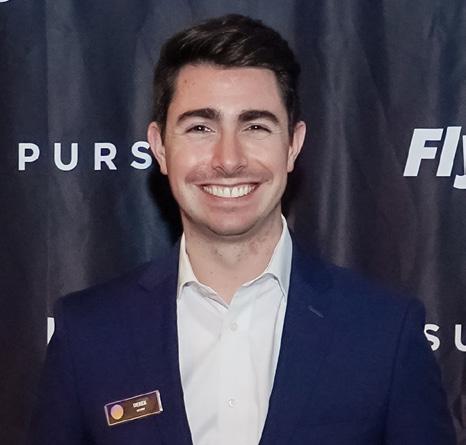

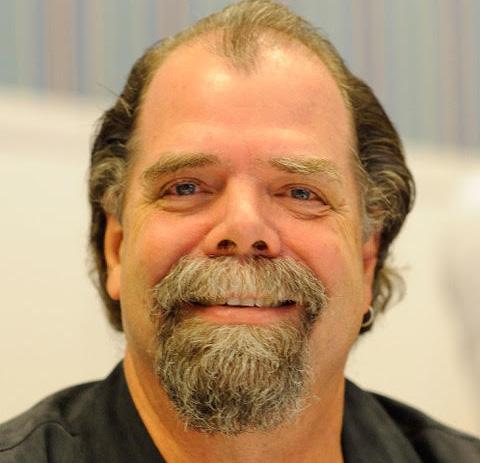


Tell us a little about the guest experience.
Derek Poitras: Flyover in Chicago is divided into three acts that total about 30 minutes, with the ride itself being nearly 10 minutes long. Guests begin in the gallery, which provides a brief introduction to the city. They then go up a flight of stairs to the preshow room, which is similar to our Iceland and Las Vegas venues. A series of screens surround the room, with a circular screen in the middle, viewable from both sides. By essentially standardizing the preshow area, we can easily swap out the different preshow films. The preshow features the people of Chicago, many of which appear in the ride film. Finally, guests transition to the gateway to view a safety video and be routed into groups.
To make the experience more accessible, we have elevators and for those with mobility devices, we can shut off one of the gondola units and they can enjoy the experience without motion, while accompanied by one of our team members.
What is the gondola configuration for this venue?
Stefan Rothaug: Because this is such a large space, we were able to fit in three levels of seating, with three gondolas per row. There are between five and eight seats on each of the gondolas, for a total of 61 seats.
What’s neat about this theater, as with Vancouver, which is also a former IMAX space on a pier, is that it’s 100% electric and this new ride model hangs from I-beams above. Older versions utilized hydraulic support footers for each gondola, so this really shows the potential of the i-Ride system.
What is unique about Chicago’s film experience?
Lisa Adams: We thought about doing a film about America, which would have been very broad in scope. One of the typical flying theater motifs involves gliding through canyons or large bodies of water. Our director Dave Mossop came up with the idea of using Chicago skyscrapers as canyon walls and the Chicago River and Lake Michigan providing the bodies of water.

The preshow introduces guests to the people, places and culture of Chicago through twelve projectors and multiple screen configurations.
David Mossop: We wanted to do this in one single take. It actually is fourteen different shots, three from helicopter, the rest from drone, edited together in one single shot. We like to think of it as a weekend in the city because you start at sunrise, then night falls, then it’s day again. We did that because some scenes worked better in different times of day, like the flyby of the Joffrey Ballet studios. If we had done that during daytime, all you’d see would be glass reflecting at the drone. But because we shot it at night, you can see the dancers performing in front of you illuminated by the light of the two studio spaces.
Our secret weapon was Gabe Kocher, who has a natural eye for drone photography. He is frequently hired for Hollywood blockbusters because he just instinctively can get these amazing shots.
Rick Rothschild: There are points where we take guests from one part of the city to another and we wanted it to be seamless. In the past flying theater films, we would just do a direct cut between scenes or come up with a thematic transition. For example, in the Iceland film, a church steeple blends into a mountain peak. For Chicago, we tried to keep the transitions as practical as possible. We used existing tunnels or we created structures that the drone would fly into, and then we’d move that structure to a new location and the drone would fly out of it somewhere else. So the transitions between locations are cohesive.
To make the experience as exciting, yet comfortable as possible, we also brought in Dr. Eric Muth, who is a leading expert on motion sickness. He reviewed the animatics [a series


The production crew filming with the drone at night on the streets of Chicago. Pilot Gabriel Kocher wears a VR headset while director David Mossop views the action on a monitor.
of images played in order, used as an animated storyboard] with David and gave us a few tips on adjusting the flight path. The final product very closely matched the timing and motion of the adjusted animatics.
Mossop: The film’s narrative is the musical culture of Chicago. Guests see real musicians performing as they fly through the city. It took a year of mapping everything out and creating an animatic for this to work.
What’s neat is that the Chicago film links varying musical styles from the blues to classical to hip hop. While prepping for the film, I was watching Baz Luhrmann’s movie Elvis and realized that Elliott Wheeler’s score was linking together a cornucopia of styles, just like we wanted to do. I told Lisa, “When you look for a composer, this is the kind of thing you want to keep in mind.” So she contacts Elliott directly. It turns out they’re both Australian and they got along great, and he composed the music for our film.
Rothschild: Music makes all the difference on an attraction, and I appreciate all the composers I’ve worked with going back to Jerry Goldsmith for Soarin’ [the first flying theater Rothschild helped create for Disney California Adventure]. What Wheeler captured was not serendipitous; it was a result of spending a year with David, starting with the animatics. Because of this, everything was finely orchestrated by the final stage of the shoot and the whole ride experience syncopates with the counts and rhythms of the score.
How has advancing technology impacted the experience?
Eric Sambell: One of the main things is the progression of projector technology. In Vancouver, we had a single 4K projector with a fish-eye lens in front of the ride aligned with the screen. When we opened Iceland in 2019, we used an 8K equivalent three-projector lamp-based system because the public’s expectations had increased. The Chicago location uses three Christie Griffyn 4K RGB laser projectors, which meets the Rec. 2020 standards for the color spectrum. A huge advantage for us is that the laser projectors don’t require dedicated cooling.
When we were planning for Chicago, we also realized it was time to upgrade Vancouver to match our new standard. Image quality is better – and there’s no need to add catwalks, which would have been challenging and expensive.
Kevin Murphy: This is Kraftwerk Living Technologies’ third installment for Flyover, and we also carried out the refurbishment and upgrade in Vancouver.
In addition to the change from lamp-based projectors to RGB laser projection, the Chicago location features 34.4 channels of audio, utilizing the IOSONO spatial audio system, which creates a three-dimensional sound environment within the dome. This is an upgrade we have also made in Vancouver.
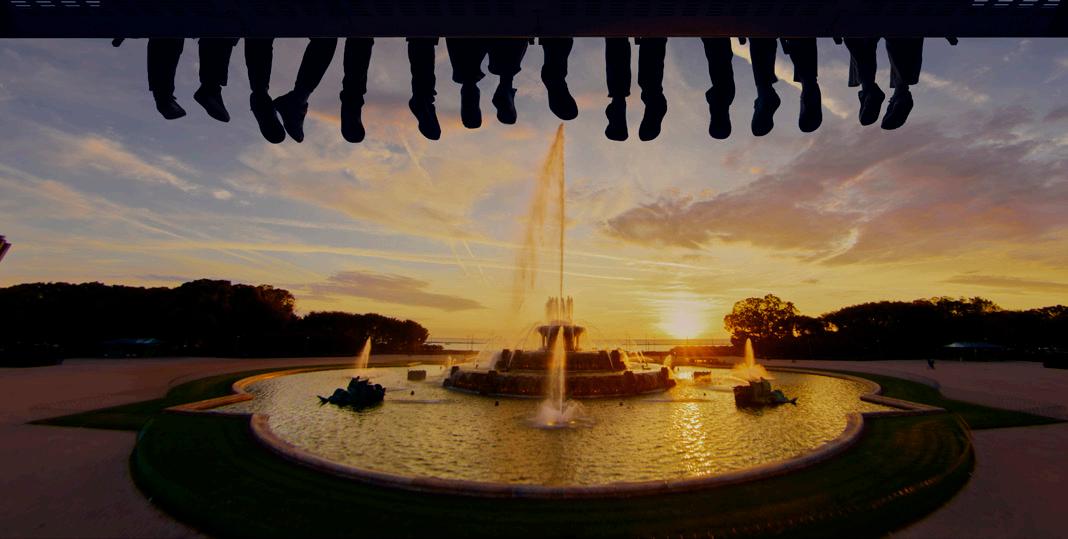
It’s been over a decade since we opened Vancouver and, at the time, we thought it would just be a single film about Canada that would play yearround. We now have four locations, with a fifth licensed location at Mall of America. We felt this was the right time to ask who we are, where we are, and where we’re going.
Flyover is now the name of the experience. Instead of FlyOver Chicago – our original naming structure – it’s Flyover in Chicago, and we’ve adjusted our other locations to match. We’ve also given each of the films their own titles, so our Canada film is now called Awaken Canada.
There are four pillars to the Flyover brand: epic places, captivating stories, immersive experiences, and exhilarating flying rides. To accomplish this, we’re creating a library of original content, and our films are rotating among the locations. Believe Chicago, which opened March 1 at Flyover in Chicago, is already showing in Iceland and Las Vegas.
-Lisa Adams, COO and executive producer, Flyover Attractions
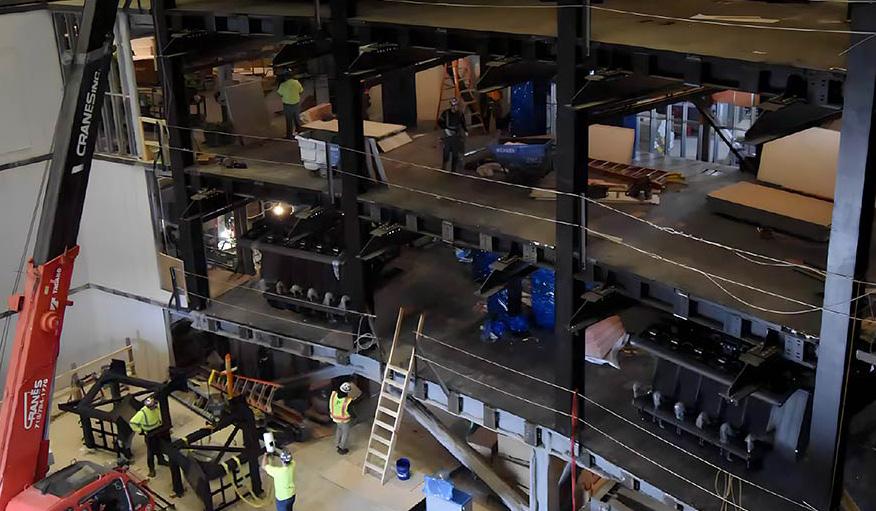
Chicago was also our first time bidding and winning the integration of the preshow, which uses four Christie and eight Panasonic projectors and JBL audio. As with Iceland and Las Vegas, the preshow AV systems are managed by the ISAAC platform from Smart Monkeys, Inc. and in all the main theaters the AV and media replay is carried out with BRAINSALT media systems.
How does Brogent’s ride system impact the guest experience and what was done differently this time?
Rothschild: I have worked with Brogent on many projects including as creative director on Bermuda Storm at Chimelong Spaceship, which was honored with a Thea Award this year by the Themed Entertainment Association. In Bermuda Storm, the ride consists of a huge 304-seat motion base “boat” from Brogent [the v-Ride Vessel]. I appreciate Brogent because they are true innovators in the space, and their systems are ideal tools for storytelling. With their i-Ride, having the simulator divided into individual units allows for versatility based on the size of the space, whether it’s a small 40-seat theater under a parking garage in Las Vegas, or the much larger former IMAX spaces in Vancouver and Chicago.
Rothaug: Even though we’re known for our motion simulators, it is motion programming software that is truly the core of Brogent Technologies. The theater is large in Chicago, with nine individual gondola units, each one with a different perspective. We solve this with our software by being able to modify the motion programming per individual gondola. We can have a gondola on the top floor pitch more than those below in order to provide the best angle of view. The motion can also vary per gondola based on what the viewing experience is in its location – whether it is centered to the screen or to the sides.
With the drone, the flight path is very different than with films shot by helicopter or plane. For instance, there are lots of tight turnarounds in the film, and that fits i-Ride very well. The creative and technical teams were far more daring with this movie in trying to get new types of motion out of our system, and it shows. •
For more information on Brogent, visit brogent.com.
For more information on Flyover in Chicago, visit experienceflyover.com/chicago/
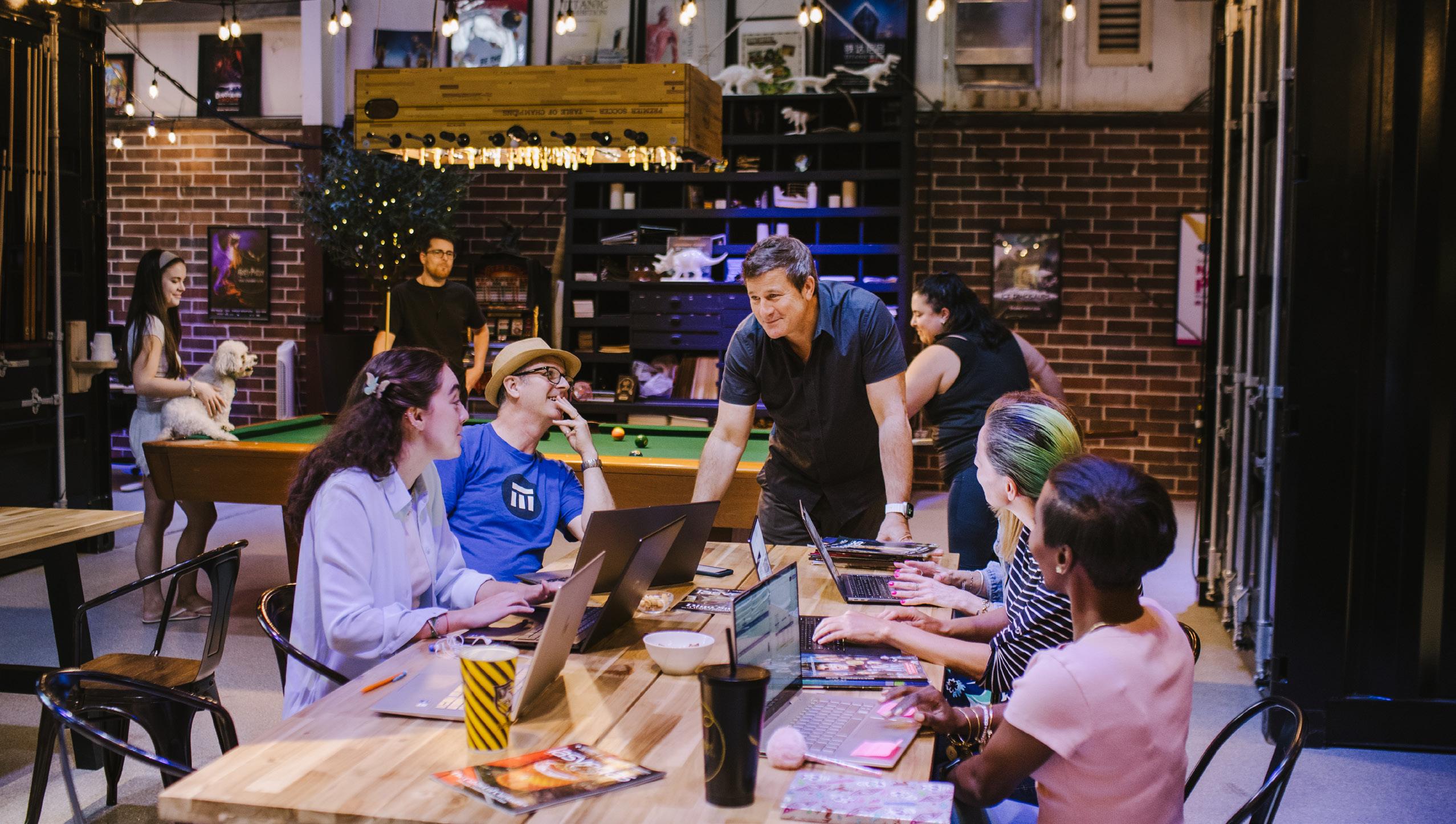
“We need to re-introduce ourselves,” says Tom Zaller (center), Founder and CEO of Imagine, now celebrating its 15th anniversary. All photos courtesy Imagine
by Judith Rubin
WhenTom Zaller founded Imagine Exhibitions fifteen years ago, his business philosophy was simple: “Create great experiences; treat our clients, colleagues, and partners with respect; and have fun. The rest will take care of itself.” While this mantra has served Zaller and the company well since its inception, Imagine has grown significantly over a decade and has quietly transformed from a modest exhibition company to a global force in the museum and attractions sector.
Imagine has always preferred to let its work speak for itself, focusing on delivering world-class experiences rather than self-promotion. Now, as it celebrates its 15th anniversary, the company is ready to share the story behind its growth.
“We need to reintroduce ourselves,” says Zaller, Imagine’s CEO and Founder.
From its Atlanta headquarters, Imagine has spent years perfecting the art of creating, designing, and operating exhibitions and attractions across the globe. With expertise in master planning, exhibition design, production, retail design, and marketing, the company has been a behind-the-scenes force driving attendance and delighting audiences worldwide. But that’s just the beginning.
Imagine’s four service divisions – Studio, Exhibitions, Retail, and Operations – are now poised to bring their proven methods to new markets and clients. With this “re-



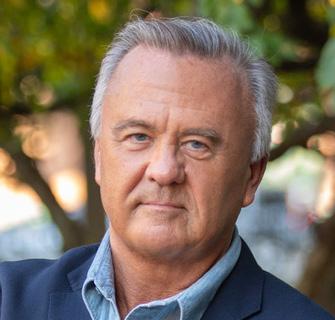


imagining,” the company has renewed its focus on a more holistic approach, offering comprehensive services for both clients and guests. As part of this transformation, Imagine has dropped “Exhibitions” from its name to better reflect the full scope of its capabilities, embracing its expanded role beyond exhibitions to include design, production, operations, and retail management on a global scale.
In the background of Zaller’s eclectic office hangs a sign that reflects his straightforward leadership philosophy: “Work Hard and Be Kind.” It’s a principle he instills in his growing team, which now includes over 125 full-time employees and 150 site staff supporting projects worldwide.
This expansion has been driven by bringing in industry veterans with deep expertise from major operators and design firms. Their knowledge and experience have opened doors for Imagine, allowing the company to broaden its offerings and continue its steady growth across global markets.
“Once you scale to a certain level, you can offer these services outward to a pretty diverse client base. They are all industryadjacent,” says Zaller. “And because we understand and operate in global markets, we are able to develop a project in any part of the world.”
“This is our next big leap,” says COO & VP of Sales Debbie Donohue, who has been with the company since its inception. “It positions us to continue to be leaders in the global experiential industry. We offer A-to-Z turnkey services for new and existing clients from museums to studios to artists and beyond.”
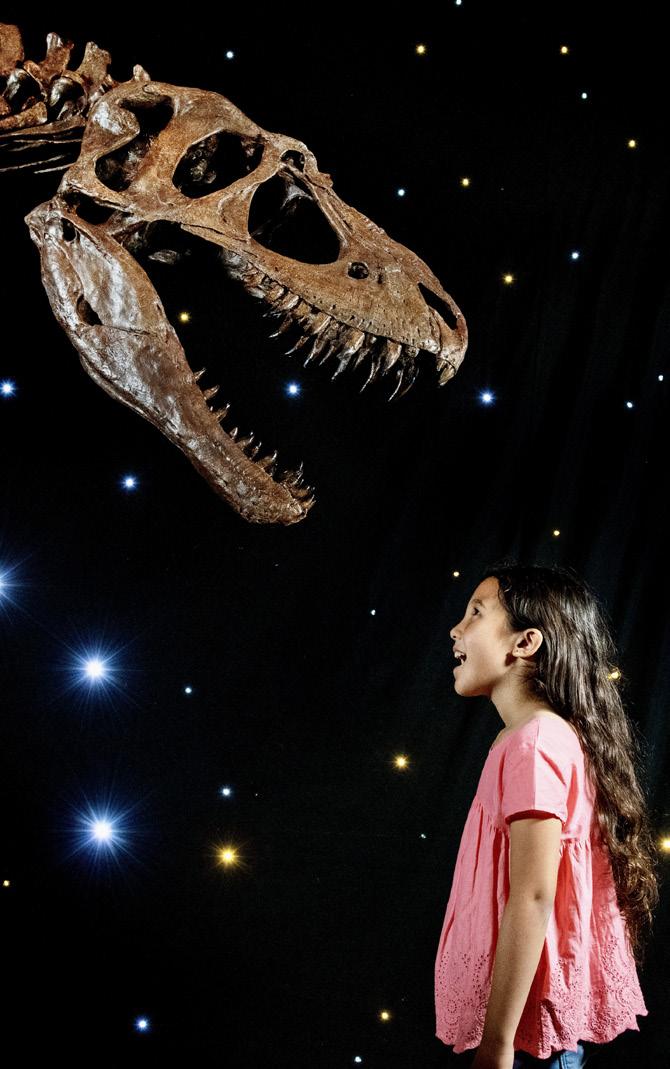
“It’s a straightforward equation,” says Shawn McCoy, who joined Imagine in 2023 to take the reins of its expanded Studio division as Senior Vice President of Business Development and Creative Strategy. “Imagine specializes in creating visitor experiences that captivate audiences, operate efficiently, drive attendance, and generate revenue. These are the key parameters of a successful attraction, whether it’s focused on education or entertainment, permanent or temporary, or based in a major destination or regional market.”
A global portfolio with a blockbuster appeal
Since launching Imagine, Zaller and his team have created a catalog of over 40 experiences, from Discovering King Tut’s Tomb to themed bars like The Cabinet of Curiosities and The Lock in Las Vegas. Imagine’s current headliner, Harry Potter™: The Exhibition, has been a global sensation. Conceptualized, designed, and produced by Imagine in partnership with Warner Bros. Discovery Global Themed Entertainment, it’s now captivating audiences in Boston, Madrid, Macao, and São Paulo. Beyond the magic of the exhibition itself, Imagine’s team has created immersive retail environments, bespoke merchandise, and even themed food and beverage experiences to complete the world of Harry Potter for fans.
But Harry Potter is just the latest in a line of popular exhibitions. From Downton Abbey: The Exhibition to Jurassic World: The Exhibition and Titanic: The Exhibition, Imagine has developed a portfolio of experiences that set new standards in the industry. The company’s outdoor exhibit, TROLLS: Save the Humans by Thomas Dambo, showcases its
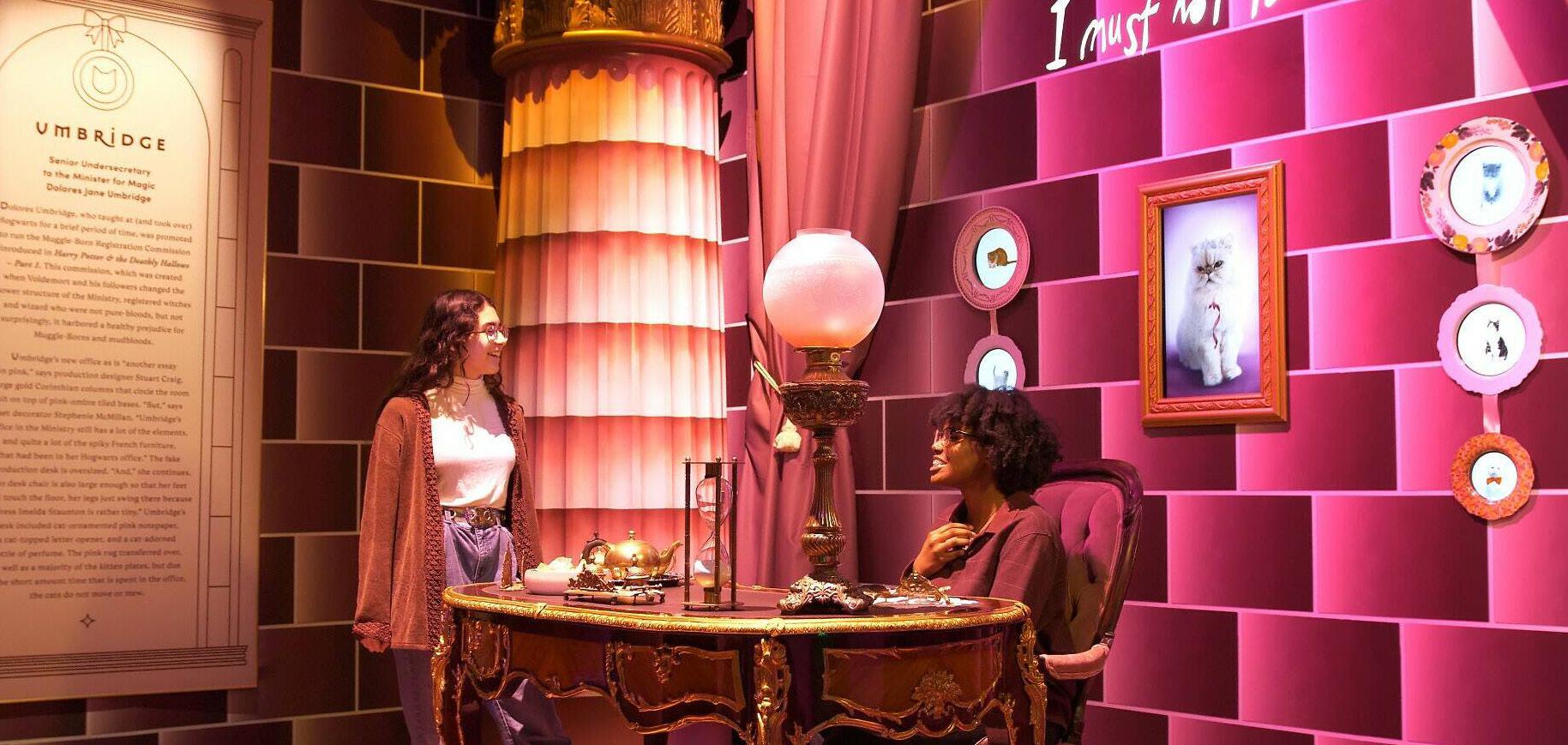
range by bringing environmental storytelling to life in openair settings. Imagine’s portfolio of both indoor and outdoor experiences continues to grow with new partnerships.
Imagine’s projects reflect broader trends in the attractions industry: museums are turning to traveling exhibitions to drive attendance; branded experiences are extending the reach of intellectual properties; and retail has become an integral part of the guest journey, adding both depth and revenue to the visitor experience.
For 15 years, Imagine has played a pivotal role in shaping these trends, always with an owner’s perspective. “We have a hand in every aspect of the creation and implementation of a project. And because we own and operate a number of attractions ourselves, that makes a huge difference in our perspective and approach,” Zaller explains. “Budgeting, project feasibility, revenue generation, throughput, ticket sales, retail sales, creative excellence, authenticity, market penetration, ROI and the overall guest experience are all just as important to us as they are to the client, the owner, the operator, the licensor.”
Zaller Dollars: The heart of the Exhibitions division Blockbuster traveling exhibitions are the major driver of attendance at top museums around the world, a fact made abundantly clear in the figures published each year in the TEA/ AECOM Museum Index.
At the core of Imagine’s success is its Exhibitions division, which started it all. Zaller’s early career in theater and live entertainment laid the foundation for what Imagine would become. He worked on everything from rigging for The Grateful Dead to carpentry for David Copperfield before a
pivotal moment came with his work on Titanic: The Exhibit. It was, as he describes, a life-changing experience that set the course for his future.
Twelve years ago, Imagine embarked on its first licensed project with Angry Birds, followed by a collaboration with Lionsgate to help develop and tour an exhibition based on The Hunger Games. Subsequently, the company collaborated with NBCUniversal to tour Downton Abbey: The Exhibition and then with Universal Studios Consumer Products to develop the popular Jurassic World touring exhibition, later sold to Neon.
In crafting authentic IP-based experiences, Imagine emphasizes collaboration among all teams, to represent the IP and brand in the best way possible. This teamwork ensures that every experience remains true to the essence of the intellectual property while adhering to branding guidelines. By maintaining open lines of communication and aligning on a cohesive creative vision, the team guarantees that each attraction reflects the authenticity and integrity of the brand. This commitment underscores Imagine’s dedication to honoring the legacy of each brand while creating immersive experiences that engage and delight guests.
“We create, produce, promote, and operate exhibitions around the world and are truly a one-stop provider,” says Zaller. “Imagine is a partner – not just a supplier or a contractor or designer, but a partner – helping developers, operators, and museums drive attendance and revenue while collaborating with cultural institutions to provide engaging educational experiences for their
communities that help fulfill their missions. We can do this because we understand the whole picture and our senior team has decades of experience.”
Each of these projects has carried Zaller’s signature entrepreneurial spirit and attention to detail, what his team affectionately calls “Zaller Dollars” – the practice of getting the most value for clients and audiences alike.
“We’re good at allocating resources and making smart choices to optimize budgets and still make the best experience possible,” says Zaller.
Driving attendance and creating memories
At Imagine, success goes far beyond ticket sales – it’s about crafting experiences that make lasting impressions and foster meaningful connections. While driving attendance is a primary focus, the broader vision centers on storytelling and creating opportunities for guests to build lasting memories. The most successful attractions are those that bring people together, offering a shared experience that resonates well beyond their visit.
This deeper connection sets Imagine apart. By focusing on the emotional impact of its exhibitions, the goal is to create moments that inspire and engage guests on a personal level. These are the experiences that spark conversations, bring families and friends together, and build bonds between individuals who share common interests.
To engage a diverse audience, Imagine employs a datadriven marketing approach, carefully tailoring strategies to the specific characteristics of each market. Whether operating in a major global destination or a regional hub,
tactics are adjusted to connect with local audiences in authentic and relevant ways. By understanding the cultural and demographic nuances of each location and by building relationships with local partners, the marketing ensures messaging speaks directly to the needs and interests of the guests.
“The goal is to do more than just sell tickets,” says Laurie Squire, Vice President of Marketing & Communications. “It’s about creating stories that resonate with people and building moments that they take with them – memories that become part of their lives. That’s what keeps them coming back, and that’s why the approach is constantly evolving to meet their needs.”
Adaptability has been a key driver of Imagine’s success. With projects spanning the globe, the company has developed a keen understanding of how to engage different audiences, whether they’re seeking entertainment, education, or a blend of both. This flexibility extends to every aspect of its operations, from exhibition design to marketing and promotions, continuously evolving to meet changing expectations and emerging trends.
This focus on innovation and change, combined with a commitment to creating meaningful experiences, has been central to Imagine’s ongoing growth and success. “Being successful in this industry means you do have to continue to evolve and adapt,” adds Donohue. “We have always been able to quickly pivot and be flexible – a company cultural trait – that helps us to continue to think in new and creative ways and stay relevant and remain as a leader for the past decade plus. Our hardworking nimble culture helps fuel the company’s continued growth.”
Imagine has spent years perfecting the art of creating, designing, and operating exhibitions and attractions.
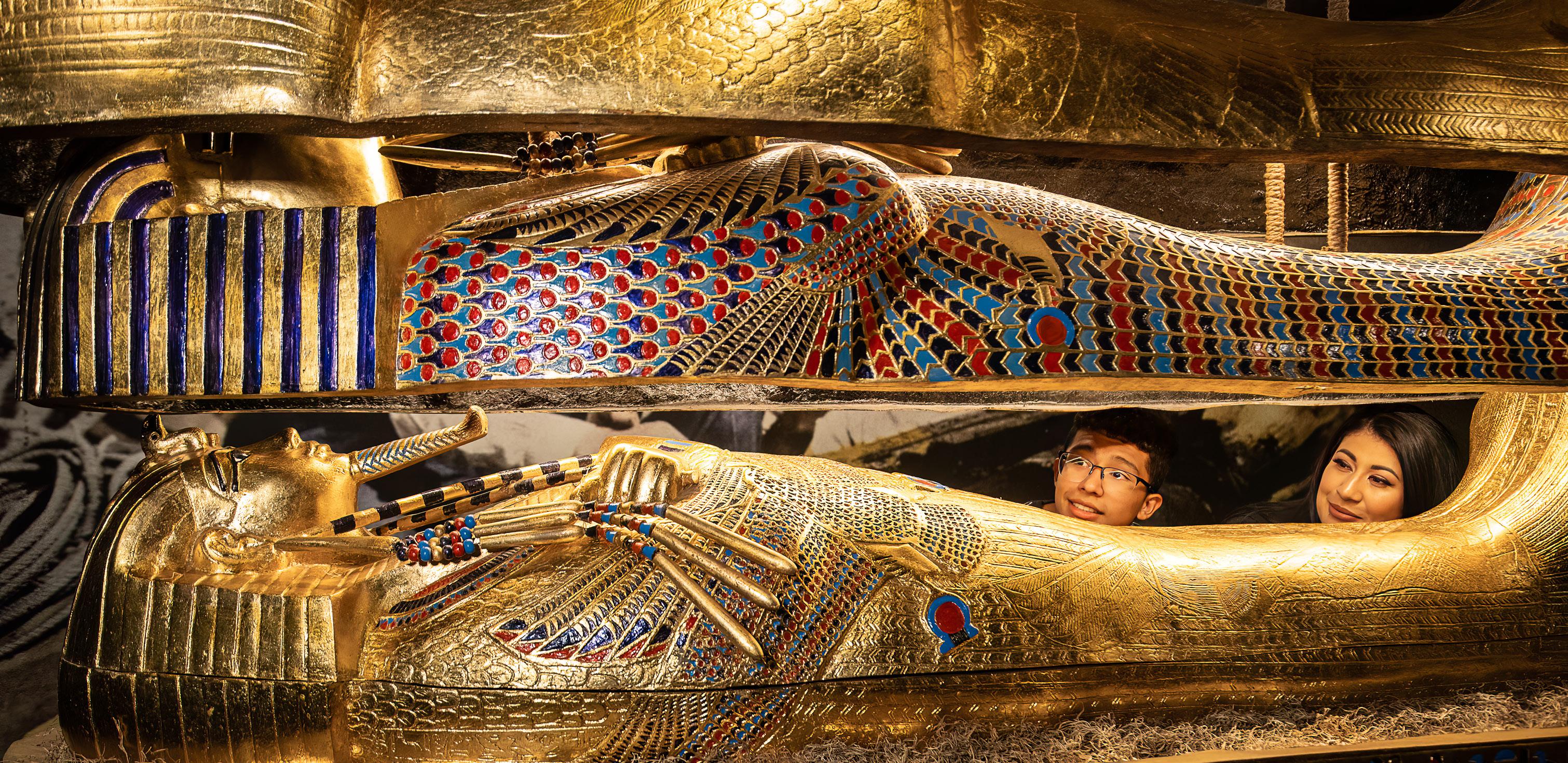


For Imagine, retail goes far beyond simply selling products; it’s a vital extension of the storytelling that shapes the guest experience. As each exhibition crafts a narrative that engages and inspires, the retail component continues that story, allowing visitors to take a tangible piece of the experience home with them. The result is a deepened connection between guests and the exhibition.
Leading the charge is Bill Pinkston, Senior Vice President of Retail, who joined the team in 2021 after working with major brands like Warner Bros. Discovery and Miral Experiences.
Pinkston and his team are the driving force behind the retail side of the Harry Potter exhibitions that Imagine is currently touring in four cities worldwide. As they travel to a series of venues within their regions, Pinkston’s team keep their stores “staffed, supplied, and full of dynamic products.”
Curating a successful line of merchandise, Pinkston explains, entails designing and producing some custom items in combination with acquiring some existing items. “Retail is an extension of the story, so the first thing with any project is to evaluate the story and identify the key themes to build around, then work with the client to make sure we hit the right themes.”
With exhibits touring in all parts of the world, there are regional aspects and tastes to consider, as well as local regulations and duties that affect imports and suppliers. “We have to do our homework,” says Pinkston. There are also logistics of shipping, storage, and replenishing stock that keep Imagine’s retail team busy throughout the year.
Within Imagine’s Retail division, the merchandising team handles product development, working closely with the brand or IP to ensure every piece of merchandise goes through the approval process. The logistics team helps with the delivery of goods, while the operations side handles all installations, HR, staffing, and inventory management. Once open, the analysis team watches the flow of goods, noting the most popular items, so that the product offerings can be adjusted to maximize revenue. Exhibition and sales staff are mostly locally driven.
Seeing the retail component as part of the guest experience, putting creative resources into its development, and applying high standards result in a more cohesive and immersive guest experience that extends the length of stay and raises per-cap spending. These bespoke curated retail stores are the best in the business and is one of the ways that Imagine has continued to evolve its experiences for visitors.
The Studio: Trending now One of the most popular program offerings at the IAAPA Expo in Orlando, drawing capacity audiences year after year, is the annual “Emerging Trends” session, presented by McCoy since 2011. McCoy’s expertise has also attracted the attention of mainstream media, with interviews with such outlets as Forbes, USA Today and CNN.
Over the past 30 years, McCoy has become known within the museum and attractions communities for his thoughtful, creative leadership, leading projects for major brands, IPs, studios and cultural destinations. He is now leading Imagine’s expanded Studio division, along with Executive Director of Design Rick O’Connell, who oversees a creative team of some 15 people.
“Rick and I are so fortunate to work with such a talented group of people who put their heart and soul into every project,” says McCoy.

Working on his first Titanic exhibit led Tom Zaller to the new business model that would define his future direction and company.
“Over the past several years, we have built up a team made up of designers and producers with great experience and backgrounds, including those formerly with Universal, Disney, and other major operators, so our studio is adept at creating environments and experiences that are entertaining and resonate with audiences.”
Over the past year, Imagine has been awarded numerous projects with major brands, studios and museums, many of which will be announced within the coming weeks and months.
“What new ways will be created for audiences to connect with IP or interact with content? What new artists could we represent? There’s no end to it,” muses Donohue. Creative spirit and innovation are the constants of change. “The reason I have been with the company for 15 years is that we are always working on new projects, I am always learning new things, and we are always growing.”
As Imagine steps into its next chapter, the team remains committed to innovation and creativity. With exciting projects on the horizon and a growing list of partnerships with major brands, museums, and IP owners, the future looks bright. But for Zaller, the greatest reward remains the same. “I really don’t
know what the future holds,” says Zaller. “But what I do know is that having the opportunity to work with a great group of people to create experiences that bring a bit of inspiration and fun to the world is really a privilege. I mean, I think I’ve got the greatest job in the world.” • Visit www.theimagineteam.com.
As Imagine celebrates its 15-year milestone, team members will be at the IAAPA Expo in Orlando to meet and talk about projects and possibilities. Shawn McCoy will also be presenting his annual “Emerging Trends” session on Monday, November 18th at 4 p.m., as well as moderating a panel with a variety of industry executives entitled Transforming IP into Tangible Magic: The Art of Immersive Attractions on Thursday, November 21 at 10:00 a.m.

Judith Rubin is editorial adviser and contributor to InPark. With more than three decades chronicling the attractions industry, her former roles include InPark editor, TEA publicist/director of publications, and editor of the TEA/AECOM Theme Index. https://www.linkedin. com/in/judithrubin/.
Connect&GO’s scan reporting allows its clients to get in-depth data on the actual behavior of their
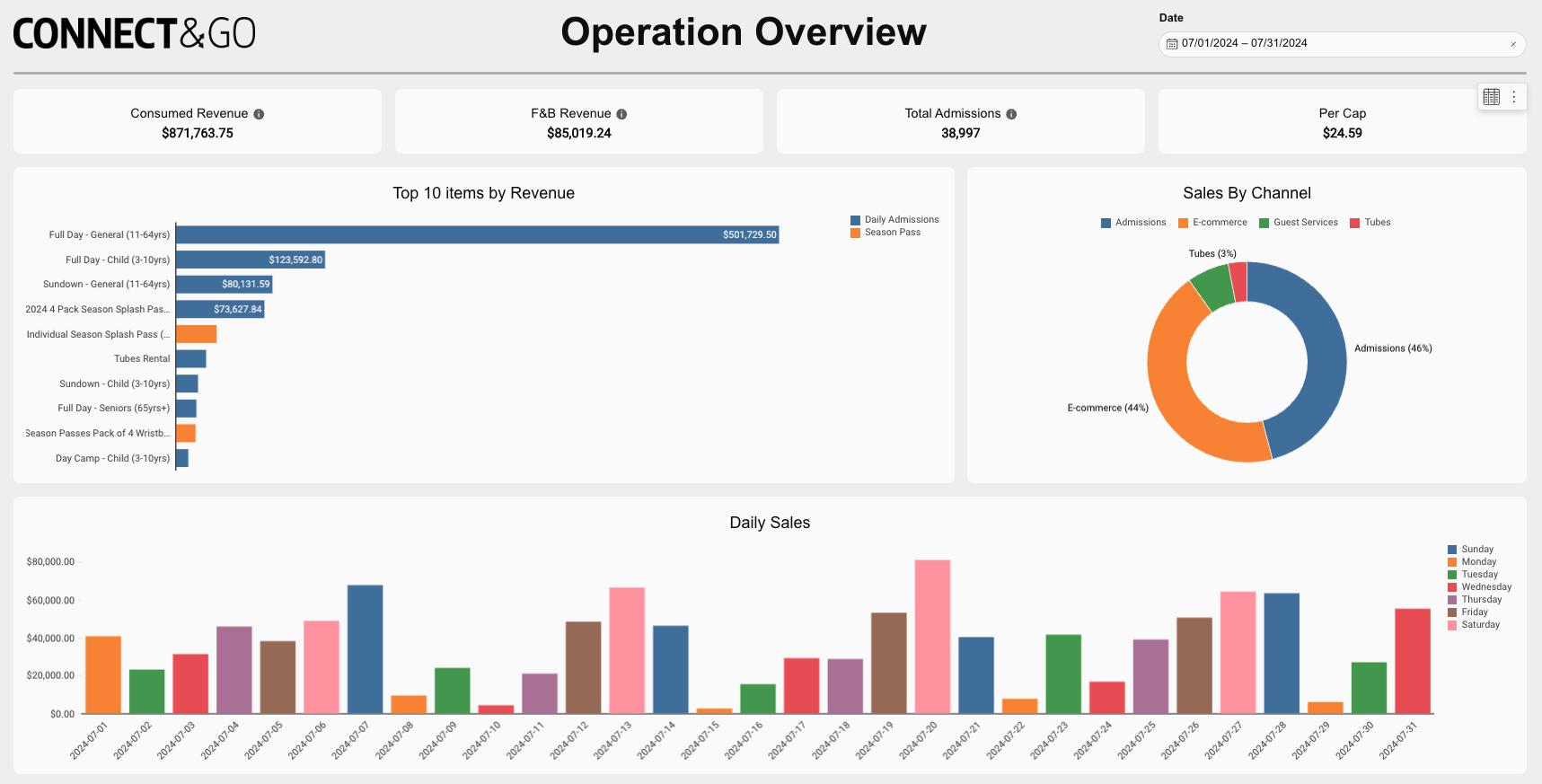

Connect&GO looks to move from disruptive past to customer-led future
by Andrew Friedenthal
Behindevery instance of a streamlined attraction or event lies a complex technical apparatus that relies on specialized software to ensure everything runs smoothly. For over a decade now, the software at various attractions venues like theme parks, waterparks, recreational parks, zoos, aquariums & cultural attractions (including the Super Bowl, the Olympic Games, F1, and Comic-Con) has come from Connect&GO.
Today, as the entire world turns its eyes towards the disruptive power and potential of AI across every industry, Connect&GO remains readier than ever to continue innovating with a customer-led approach to growth that promises to deliver new solutions for attractions management.
According to Connect&GO co-founder Anthony Palermo, what has differentiated the company from other software vendors in the attractions space is something that has been in its DNA since the beginning.
“Our approach has always been different,” he notes. “We don’t just look at technology for technology’s sake. We don’t look at technology as layers of an experience. We look at technology as something that heightens an experience.”
Palermo acknowledges that the attractions industry, a field that embraces the newest and most innovative technology when it comes to putting on a show, can tend to be rather conservative when it comes to adopting new generations of behindthe-scenes software. However, he sees this as something that might be changing alongside a larger generational shift in the industry.

“The clients that call us don’t want us to do what their old technology was doing for them,” he explains. “People are calling us because they want to do something new. They want to think differently. There’s also a huge wave of newer people that have come into the industry from other fields who are expecting better, cleaner interfaces and easier technology to work with.
Connect&GO is uniquely poised to take advantage of this moment, according to co-founder and CEO Dominic Gagnon. “Connect&GO has established itself as a disruptive force in

attractions management,” he argues, “leveraging unique expertise gained from deploying our technology at major events. This experience has given us a unique perspective to adapt our solutions to complex entertainment venues that now integrate multiple facets.”
What’s more, the company intends to move forward by leveraging this experience along with existing client relationships in order to develop a growth strategy that is entirely customer-led. According to Gagnon, “For us, innovation means constantly reinventing our approach, listening to our customers, and creating solutions that not only solve existing problems but also redefine industry standards. It’s a user-centered approach that focuses on efficiency, simplicity, and accessibility, integrating humancentered design principles and advanced technologies.”
The customer takes the lead “We don’t develop features in isolation,” Gagnon explains. “Instead, we work closely with our clients, integrating their needs and challenges directly into our product development strategy.”
What this means in practice is that Connect&GO’s growth path relies upon responding directly to customer and client needs. According to Palermo, what enables this approach to work is the company’s access to guest data, the unique ways it allows clients to leverage that information, and the proximity Connect&GO’s team has to its clients.
“Today we have so many touch points and data that we can understand people just by reading and analyzing that data,” he explains. “We have their purchasing behavior, we have their engagement behavior, and we have – in a sense – their multidimensional experiential behavior.”
Analysis of this kind of information provides full insight into guest behavior patterns. Palermo continues, “We can now start to see what people are doing before they come to an attraction or event. What are they doing when they’re on site? When are they arriving? What type of person is coming? How much are they spending? And what seems to be the thing that is making them happiest and feels the most rewarding in regard to the investment of however much money they spent on our experience?”
With this information in hand, Connect&GO clients are now able “to allow the behavior of their guests to tell a story,” according to Palermo. However, that story is also important to the software company itself as it determines what offerings to develop and present to clients. “Let’s stop wasting our time

trying to develop technology that we think is best. Let’s develop technology where we see the highest level of engagement and the highest level of satisfaction for employees. What we’re trying to do really is understand, analyze, and develop with that customer engagement in mind. And we try to put ourselves in the guest’s shoes. We’re all about watching people and understanding how they behave.”
That focus on customer needs, though, applies to individual client projects as much as it does to company growth. According to Gagnon, “A standout example is our collaboration with a waterpark that struggled to centralize its operations and manage reservations, services, and retail efficiently. They lacked a unified technology platform and were unable to access quality data to optimize their operations. With our platform, they fully automated the booking process, integrated meal and retail management, and streamlined group experiences. By incorporating our smart wristband linked to our virtual wallet technology, operations became incredibly simple, providing valuable data insights that allowed for smarter decision-making. This transformation increased their operational efficiency by 30%, enhanced visitor satisfaction, and significantly boosted revenue.”
Waterparks like the one in Gagnon’s example are part of a larger ecosystem of regional attractions that, Palermo explains, lack


the budget and IT staffing of larger destination theme parks. Because of this, such businesses “have to be very careful about what they’re investing in. As a result, they won’t have a data analyst. In a sense, what we try to do is provide them with that person. Except that person is now an interface. And we tell them that their data can’t just be black and white. One-dimensional data has to become three-dimensional reports that are telling stories. At the end of the day, we’re always looking at those stories. Are people spending more time? Are they spending more money? Are they coming back more often? And are they telling more people? And are we providing the tools to be able to do that?”
Providing these tools, based on customer needs, is the driving force bringing Connect&GO into the future.
Not content to allow the company to rest on its laurels, Gagnon wants to see Connect&GO continue to disrupt the industry by placing humanity at the heart of its technology.
“For us,” he notes, “innovation means constantly reinventing our approach, listening to our customers, and creating solutions that not only solve existing problems but also redefine industry standards. It’s a user-centered approach that focuses on efficiency, simplicity, and accessibility, integrating human-centered design principles and advanced technologies.”
This is something of a dual focus, looking at the impact of the company’s offerings on both their clients and on the guests those clients service, which adds a layer of complexity that needs to be taken into consideration. To address this issue, Connect&GO relies on the partnerships it has built with its clients, making them active stakeholders and innovators in the process.
Gagnon explains, “We believe that being the most customer-centric company is how we will continue to disrupt the industry. Every day, we are inspired by our clients and, more importantly, by their ideas for enhancing our solution. We must both listen to their needs and proactively offer new ideas.”
As to what those needs might be, Gagnon and Palermo each have some thoughts.
According to Gagnon, “Attractions will increasingly look like resorts, incorporating accommodations, complex F&B operations, private events, and much more. For us, that is an opportunity for growth: we excel in turning complexity into simple, powerful solutions, making us experts in navigating the evolving landscape of attractions as they expand into multifaceted entertainment destinations.”
Palermo, on the other hand, looks towards the more technical side of the evolving industry, focusing on the looming giant of AI transformation. “I would say the majority of the innovation and the development that’s coming will be based around having AI tools built into the management platforms,” he explains. “It can make your staff that much smarter and give them the tools to make the best decisions possible in real time, including things like dynamic pricing. Let’s empower these users by taking advantage of the AI technology.”
Just as Connect&GO has been a disruptor in the past decade, it looks towards being an ongoing innovator in the decades to come. As Gagnon sums it up, “We are committed to developing a platform that meets the most complex needs of attractions, with an obsession for making it simple. We aim to continue evolving our platform not just to simplify operations but to enable attractions to fully leverage their data and enhance their commercial performance. We see every complex challenge as an opportunity for optimization, with the ultimate goal of helping our clients generate more revenue through better options, a superior platform, and strengthened strategic support.” •
Connect&GO will be bringing its technology to IAAPA Expo at booth #1840. You can book an appointment in advance at www.connectngo.com.

Andrew Friedenthal has a Ph.D in comic books – well, American Studies – and now works as a writer in the themed entertainment industry, basically living the dream of his 11-year-old self. With a body of work encompassing plays, screenplays, arts criticism, journalism, academic books, articles, and plenty of copywriting and content marketing, he is obsessed with getting to the heart of any story, regardless of format. Though based out of Austin, TX, where he lives with his wife and daughter, his New York heritage ensures he will always stand “on line” at a theme park, not “in line.”

The Walt Disney Company, Universal Studios Theme Parks, Metropolitan Opera House, Fenway Park, Great American Ball Park, Lucasfilm Studios, Guggenheim Museum, and many more!
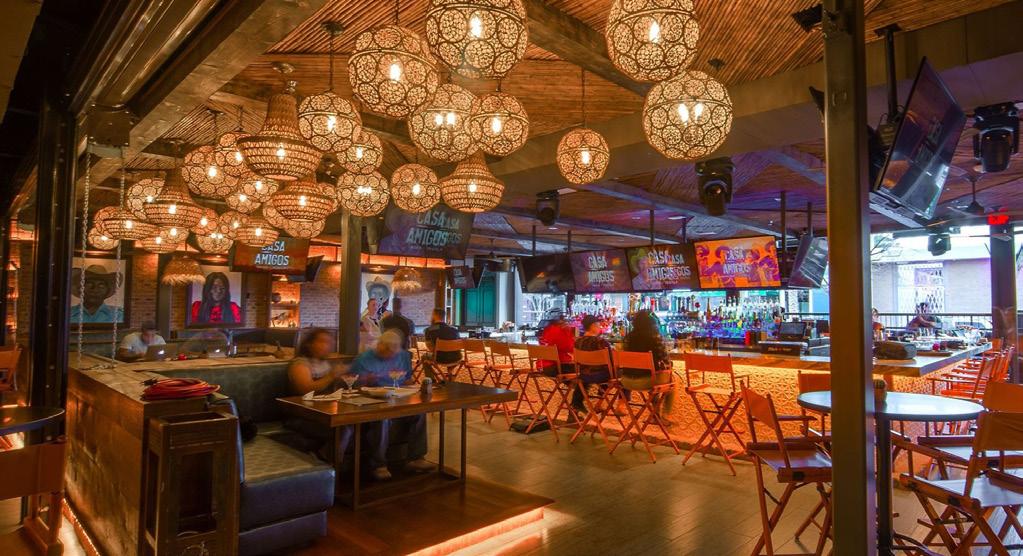


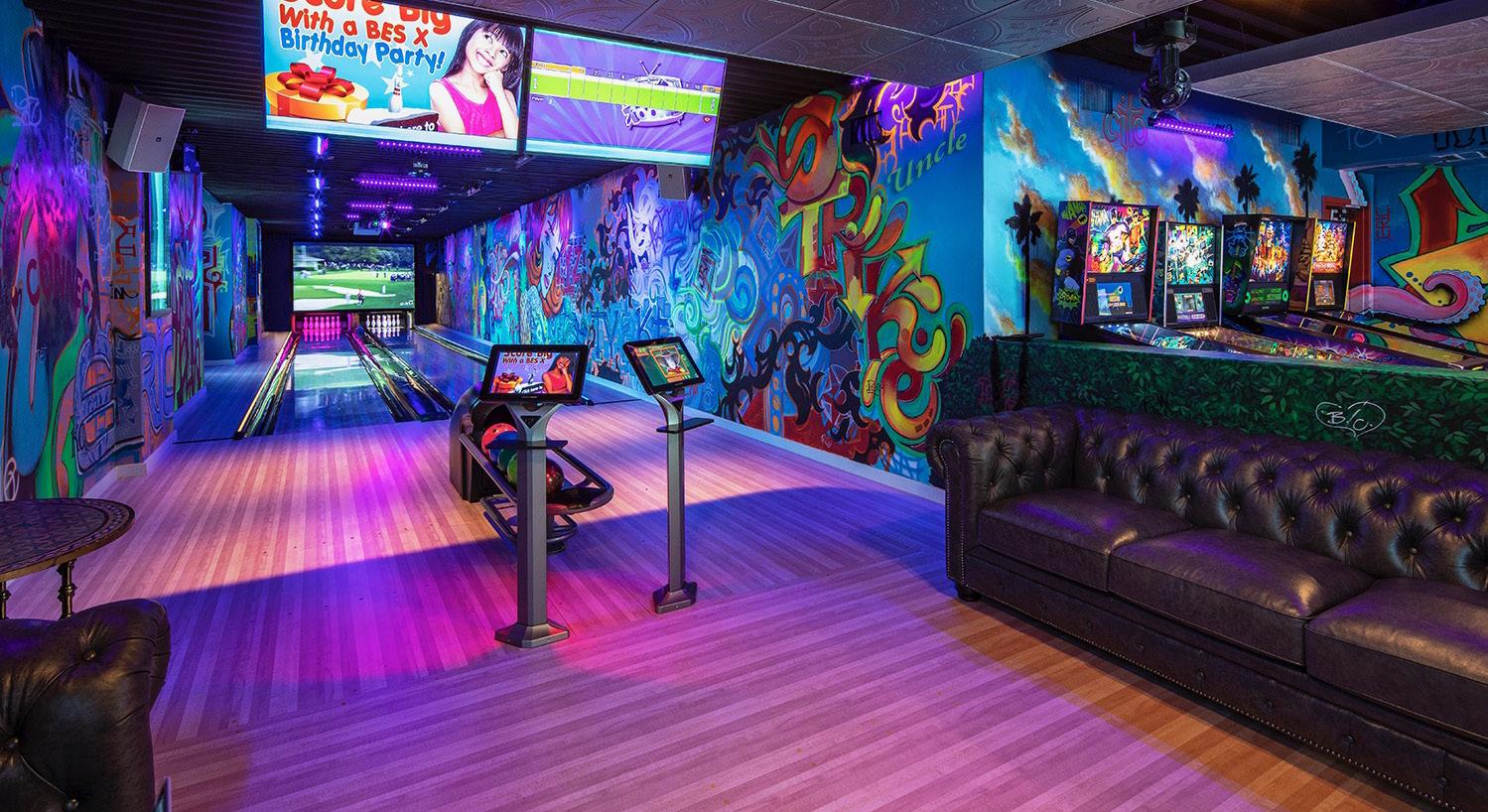
Keep guests captivated with seamless distribution.
Whether you’re running synchronized visuals throughout a theme park or displaying unique content on specific screens in different on-site restaurants, our system delivers a high-quality, immersive experience exactly where you need it.
Create a seamless visual experience with no visible cables or clutter.
Just Add Power devices ensure clean, organized installations. All video sources are neatly tucked away in a control room, out of sight, yet ready to stream to any screen across your venue. Effortlessly switch between live feeds, promotional videos, and entertainment content without guests noticing a thing.
Tiling technology allows you to showcase multiple video streams on a single screen.
With just one tiling transmitter, you can display up to four different sources at once, or even more by stacking transmitters, creating an engaging, multi-source visual experience perfect for lobbies, dining areas, or event spaces.Ideal for large displays or projection setups.
Distribute video anywhere, anytime, with complete flexibility.
Whether streaming to a single display in a line queue or delivering synchronized content to hundreds of screens across a theme park, Just Add Power systems provide reliable, perfectly synchronized video distribution, enhancing the guest experience across all areas.
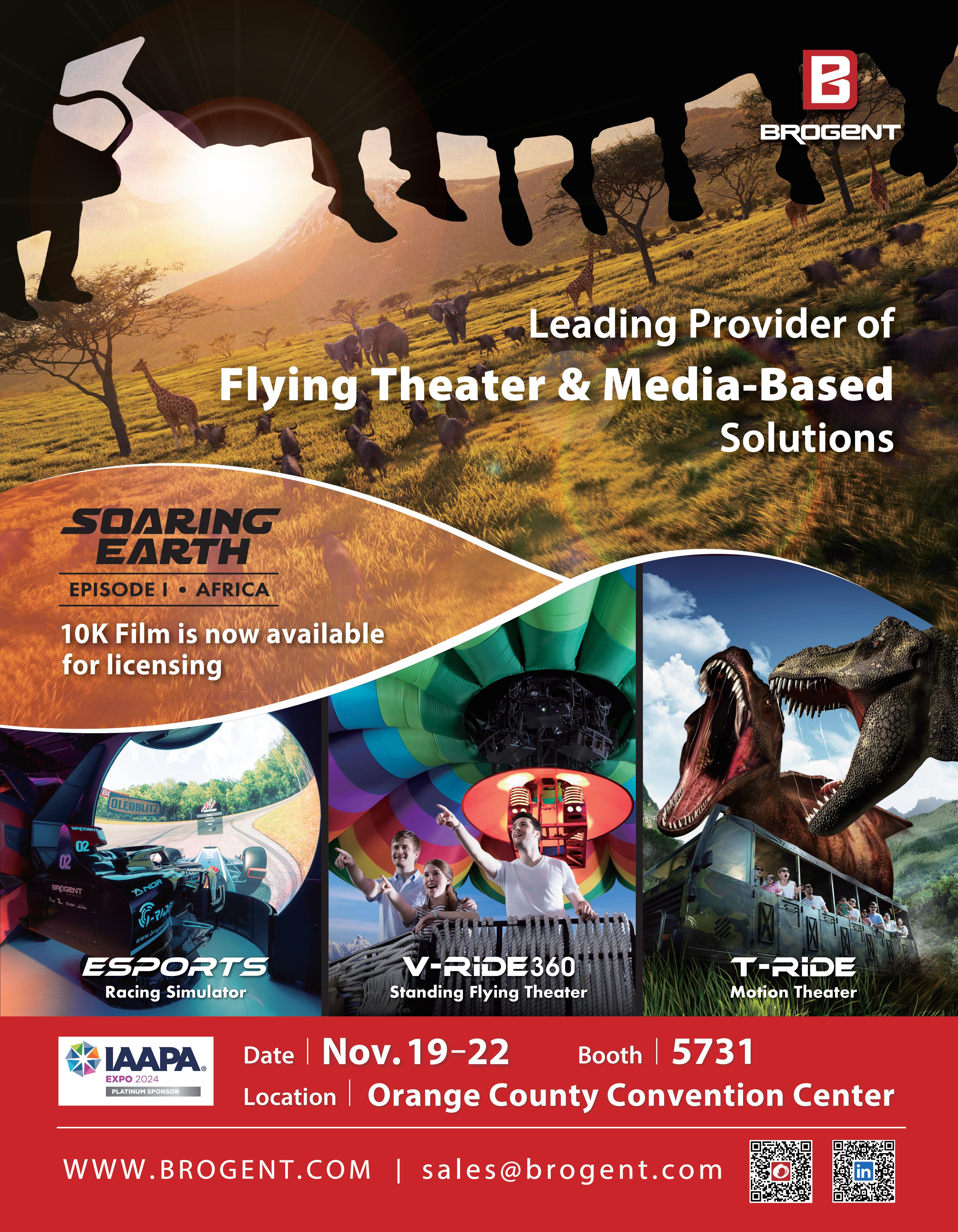

Visual
Lighting design firm Visual Terrain celebrates its 30th anniversary in January 2025. To mark the occasion, longtime InPark contributing writer David Green, who is co-owner of Visual Terrain, interviewed Visual Terrain founder, Lisa Passamonte Green, to whom he is also married.
What’s the predominant feeling you have about reaching 30 years in business?
I recently realized I’ll be 60 in 2025 and will have had the business half my life. It makes me feel proud I have been able to keep it going this long. It’s been such a focus of my life. I feel privileged to have done the projects we have worked on. I still get excited about opening a project, being creative, and doing my craft.
Has there ever been a moment where you wanted to quit?
There have been many moments where I wanted to quit, but I’m pretty stubborn about wanting to succeed. My desire to succeed, to do the projects, and to confirm that this was the right path, always won out over those moments where I wanted to quit.
What’s the best piece of advice anyone has given regarding the business?
The best piece of advice I received early on was to surround myself with advisors who had expertise in accounting, entrepreneurship, and business development, and all the things I didn’t naturally know until I became a business owner, and to really learn from them.
Who have your mentors been?
Early on I had two lawyers, Jeff Pugh and Steven Kramer, who were instrumental in teaching me how to read, understand, and write contracts. I still follow their teachings in how we approach contracts. Gary Hard and Ava Buzzelli, my two original accountants and accounting advisors, really helped me set up the business. They understood that I didn’t necessarily speak accounting, but they grasped the questions I was asking. They taught me how to read accounting reports, to understand the nuances in those reports, and how to forecast what our financial picture was at a given moment and how that informed how we did business. That was key.
What about mentors in lighting or themed entertainment?
Monty Lunde, Rock Hall, Peter Chernack, and Roberta Perry were early cheerleaders and mentors who have never wavered in counseling and supporting me. Cliff Warner also became a champion and a mentor on the business side of things. Pat McKay has been instrumental on the lighting portion of it. She was an inspiration in general, just because she was a woman in business, and everything she had done for the theater community and the live events community. To become a colleague and friend of hers was pretty spectacular.
Lighting designers Paula Dinkel and Dave Taylor, in the early days of my career, straight out of college, were so selfless in helping me to grow as a designer. Leslie Wheel, one of the founding members of the IALD (International Association of Lighting Designers) was a huge mentor to me. She was instrumental in how I became a businesswoman when I originally started my firm.
Have any clients had a role in your longevity?
Let’s name drop! Again, Monty Lunde and Rock Hall and the Bandit team, Joel House, Bob Shreve, Andy Westfall, Merrill Puckett Miller, Dale Mason, Phil Hettema, Cliff Warner, Seth Cover and the entire Mycotoo team, Adam Bezark, Susan Beth Smith, Marcus King and the folks at Legacy, Chip Largman, Paul Cuoco, Susan Bonds, Nancy Seruto, Bob Weis, Chris Lange, George Wade, Chris Conte, David Weiss, James Anderson, Rick Rothschild, Vijay Sehgal, Marc Herring, Wayne Hunt, Jen Bressler, Doug Yellin, Ken Reinhard, David Codiga, John Ahrens, Ruthie Embry, Mark Thomas, Louis Alfieri, John Kasperowicz, Geoff Woodward, Bhavna Mistry, and Chuck Bleck. All of them are people that when they call, we answer, and we go on great adventures together with their projects.
Which employees have had a role in your longevity?
Mike Mahlum and Steven Young have been here for more than half the life of the company. They have seen us in many different iterations and continue to do brilliant lighting design work. What’s great is they have the same attitude that I do: “Yeah, let’s go do it.” And I would say you have had the biggest role in the longevity. I know you’re not an employee, but you have been the biggest supporter... I mean, you came in 28 years ago. Your counsel and your wisdom, and your ability to help me navigate the business…
I can’t put this in the article. It violates journalistic ethics.
I know, but I will just say to you that I know I wouldn’t be here without that counsel.
What strategic partners have had a role in your longevity?
The most important strategic partner is Concept Lumiere which is owned by Jeff De Lamotte. Jeff has been with us for years and has been instrumental to us doing projects and
supplementing our team for bigger projects in Europe and the Middle East. We also have supplemented his team when he needs additional people.
Bruce Sachs from Mid-West Wholesale Lighting was critical in helping me re-navigate our approach to projects 17 years ago and developing ways to realize our lighting designs in a more cost-effective manner.
Bandit Lites out of Tennessee is a core strategic partner and amazing system integration company. We do so many projects with them every year and appreciate all that Chris Barbee, John Jenkinson and the rest of the Bandit team do.
Has having breast cancer affected your perspective on the business?
That’s a good question. I think the way it’s affected my perspective on the business is this: Prior to the breast cancer, I never minded working long weeks or long hours. It just was part of the thrill of being a lighting designer and doing the types of projects we did. Then, I had a very frank conversation with one of my doctors, who very plainly told me that breast cancer loves stress, and I had to cut back my hours and reduce stress for my own health. I asked her if my body knew whether I was doing something I loved, and did that somehow negate the stress, because the thought of cutting back was really terrifying to me. The doctor’s response was, “Stress is stress whether it occurs doing something you love or not.” So, I really had to think about the time I was spending, what I was spending that time on, and how I was participating in the business, differently than I did prior to the breast cancer.
What’s the role of charitable work at Visual Terrain?
In the early days, we didn’t always have time to do pro bono work. We just opened Mayor Clayton’s WonderLab at Give Kids the World Village, which is a great example of a pro bono client who really appreciates the partnership and our expertise. They allow us to be creative with their project and help them realize beautiful lighting for the kids there. We’re also working on a great project for Make-A-Wish with Susan Bonds and her team at Animal Repair Shop.
Maybe it’s a result of the breast cancer, where I just want to do projects that speak to my soul and the company’s soul. If we can’t get fully compensated, then we weigh that option and make sure it’s worth it.
You’ve worked on well over 1,200 projects and won many awards. What has the recognition you’ve received meant to you?
It’s great to have the recognition and the validation that we are doing good work, and that the projects are well-received and the lighting matters. But I’ve had other moments where clients have been so grateful about something we’ve done
in their project or delightfully surprised by our lighting, that matter as much, if not more, than any award. Those moments are so meaningful to me.
What guiding principles over the last 30 years have gotten you to this point?
Be curious! Be respectful of our clients’ time, budgets, and schedules. Try hard to understand what is going to happen to the design after opening day, and how the client is going to be able to maintain it. If we say the lighting is going to do X, Y, and Z, it does X, Y, and Z. Find moments of surprise and delight in a design. Every project has a story that the lighting can tell. Our clients and their projects benefit from our creativity and the diligence it takes to do great lighting design.
So, the guiding principle is to reach high and big, but also really understand the project and the client. And that is what allows you to do great design.
Where do you see the next 10 years going?
I see the next 10 years being exciting for Visual Terrain. I see us putting a succession plan in place. It’s super exciting to me, because, again, I used to think I was going to do this until I died or was very old. While I still want to do this for a lot longer,

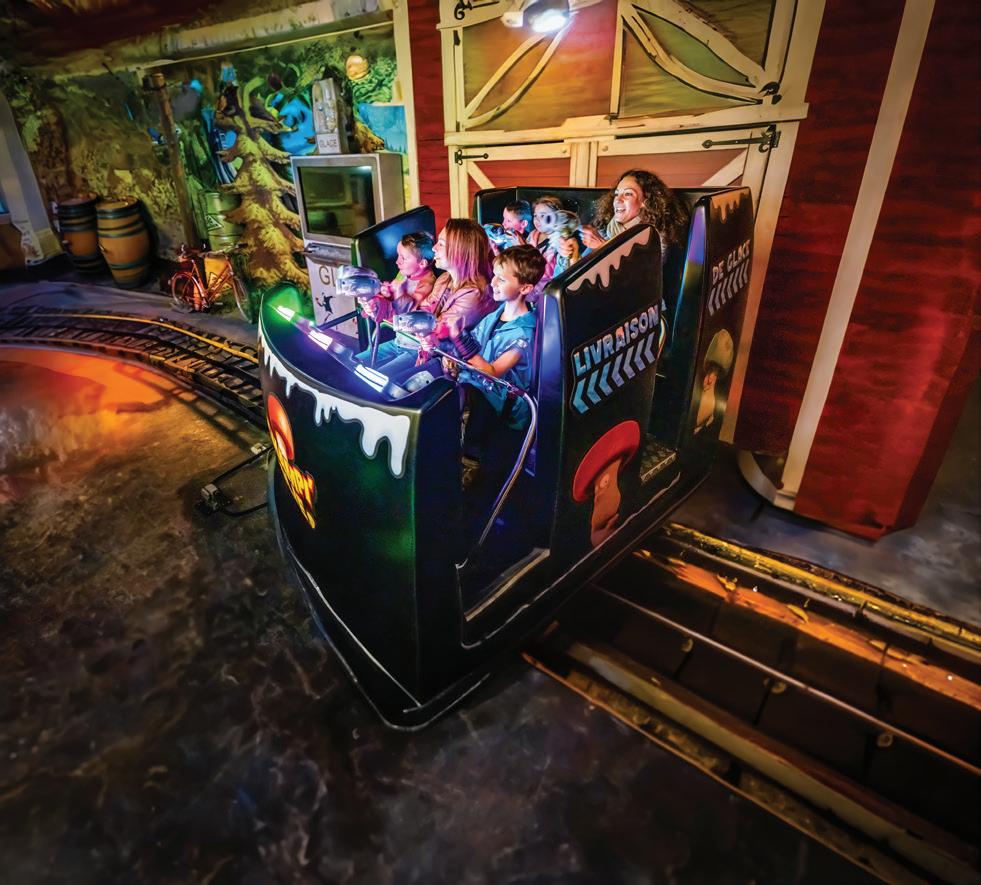

I would also like to go spend some time with my husband traveling and seeing more of the world than just the airports and the project sites that I’ve worked on.
My team gives me inspiration each day. Client reactions when we open a project give me inspiration. The biggest inspiration comes from the fact that I just don’t feel done. There’s still so much lighting design to be done. I like developing lighting solutions. I like trying to figure out how we’re going to tell the story with light. That gives me inspiration. Your constant support and making me laugh in the moments where I’m uninspired, and I want to give up, also gives me inspiration. Just the fact that you believe in me so completely. It is inspirational. •
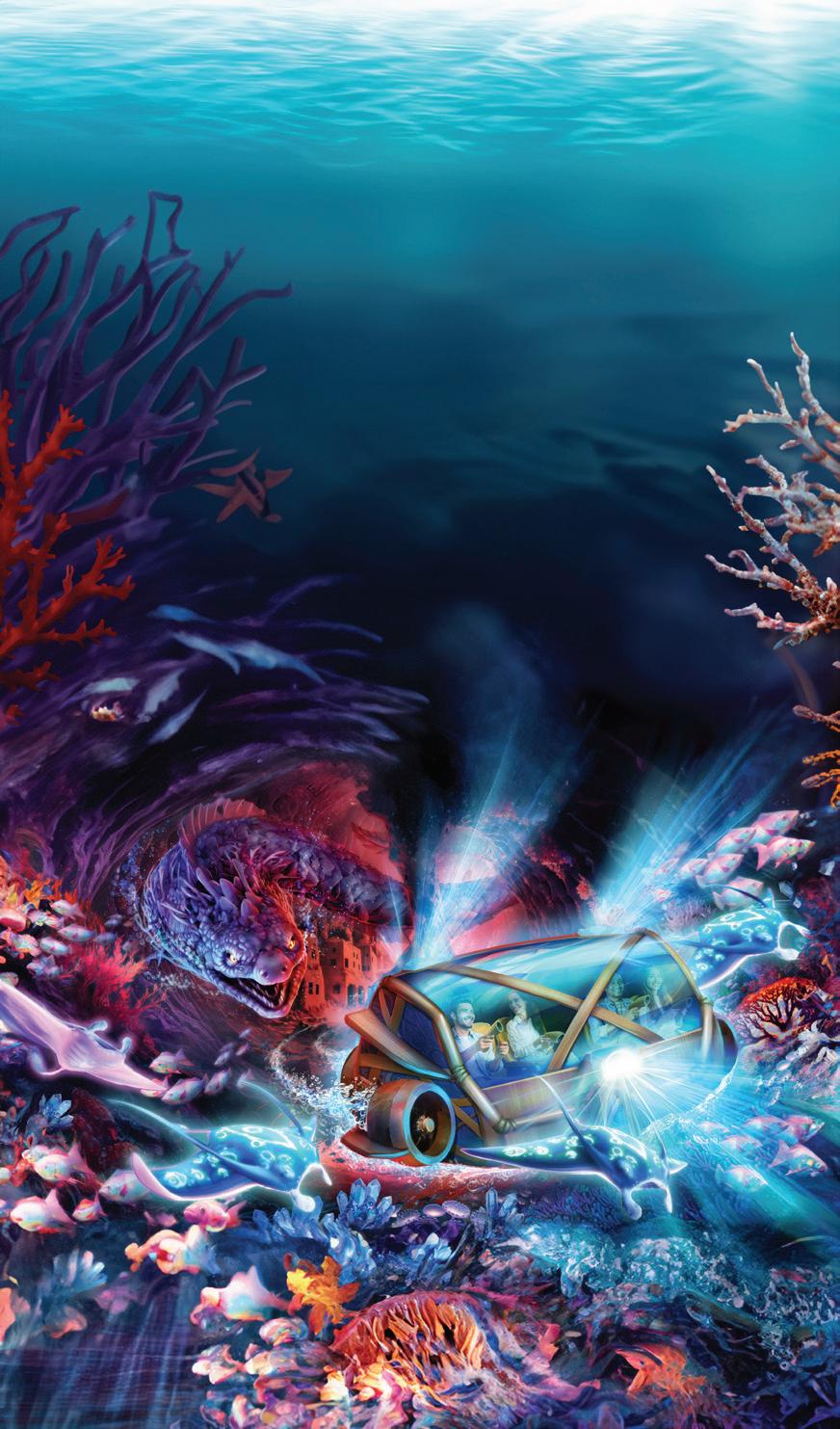
David Green is COO and President of lighting design firm Visual Terrain, Inc. He has over 40 years of experience in managing and delivering large and small development projects, including user experience design, creative and technical writing, theme parks, film, website producing, television and animation support, software development, information architecture, project management, public relations and photography. He was co-recipient of the 2024 TEA Peter Chernack Distinguished Service Award, and is an occasional contributor
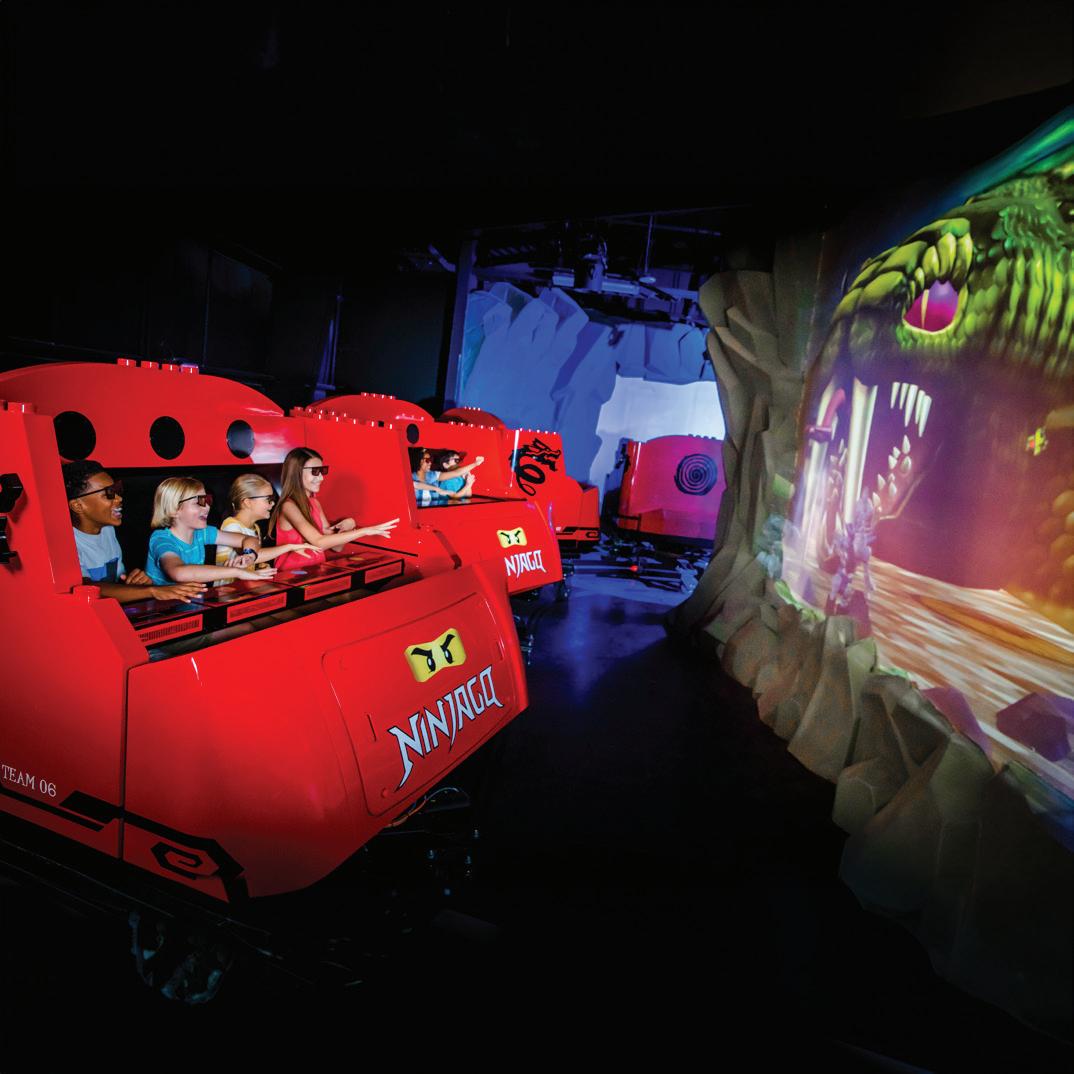

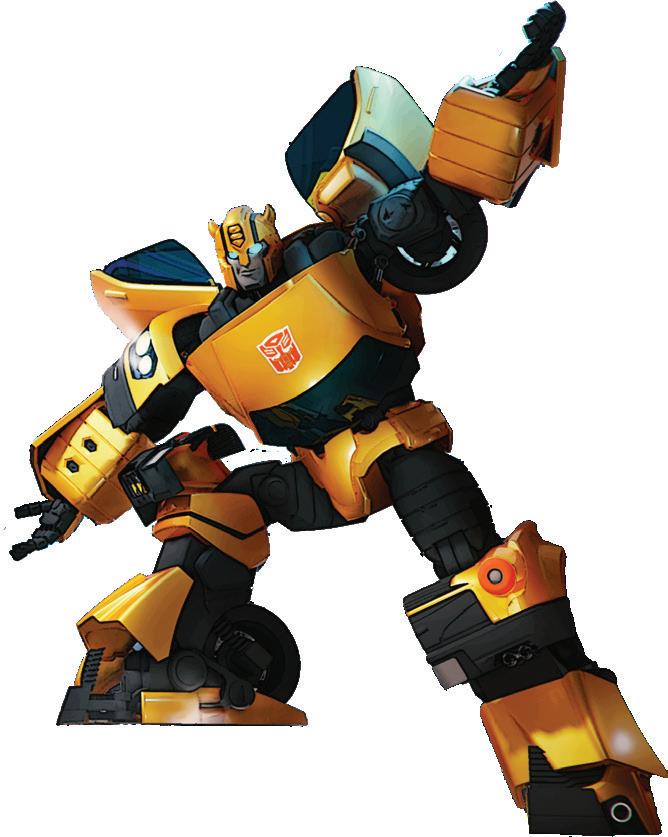


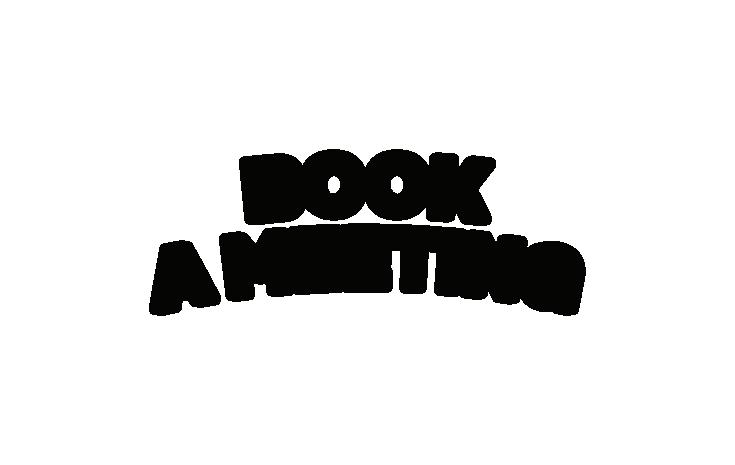



As one of the world’s largest producers of groundbreaking live entertainment, RWS Global creates meaningful connections and customized experiences spanning from theatrical productions to events, multimedia and more. In 2024, the entertainment leader expanded capabilities into live sporting events with the introduction of RWS Global Sports.
Headquartered in New York, London, Cincinnati and Sydney with dedicated RWS Studios in NYC and the U.K. to serve its vast talent pipeline and client base, RWS Global serves major brands and corporations, theaters, cruise lines, sports properties, live venues, parks, resorts and more. Offering end-to-end services from ideation to operations, RWS Global’s team of world-class designers, creators, producers and visionary talent provide unrivaled scale, producing “over one million live moments every day.”
RWS’s client roster includes Apple, The Coca-Cola Company, Crayola, Europa-Park Resort, Ferrari World Abu Dhabi, The FRIENDS Experience by Original X Productions, Hard Rock Resorts, Hershey Entertainment & Resorts, Lionsgate, The Louisville Slugger Museum & Factory, Marella Cruises, Six Flags, Space Center Houston, Warner Bros. Discovery, Disney’s The Lion King on Broadway and many more.
RWS welcomed powerhouse creative leaders Jason Sparks and Damien Gray to the team in 2022. An award-winning creative director, director and choreographer, Sparks has worked in a wide range of mediums, from Broadway musicals and independent short films to award shows and concert dance, while Gray is known for his boundary-breaking immersive work for top companies worldwide, including Universal Studios Japan, Universal Beijing Resort and the Ocean Flower Island Resort and theme park in Hainan, China.
Given the rapid evolution of technology, how do you envision immersive experiences shaping the future of the entertainment industry? What specific trends or innovations do you believe will have the most significant impact?
Jason Sparks (JS): Empowering audiences by granting them agency is a crucial element in the evolution of immersive entertainment. This can manifest through direct interactions with live performers or through app-based platforms that allow audience members to influence the direction of a performance. Today’s audiences increasingly seek to transition from passive observers to active participants in their entertainment experiences.

RWS Global Senior Executive Creative Directors Jason Sparks and Damien Gray discuss how technology is transforming the audience experience and enhancing artist performance interview by Becci Knowles Above: Step One Dance Company performances wow audiences across the Holland America Line using state-of-the-art projection to add new dimensions to dance. All photos courtesy RWS Global.

Damien Gray (DG): Innovation lies in making technology invisible, seamlessly blending digital and analog worlds. We can imagine a future where we are fully immersed in environments, interacting with them and experiencing their responses. Everything is at your fingertips in your phone and every aspect of the live space can be interacted with through your phone. The phone doesn’t become a distraction; it becomes a supercomputer that pulls you into the world that’s been designed just for you.
What sets RWS Global apart from other companies offering immersive experiences?
JS: RWS Global boasts a dedicated creative team that continuously monitors industry trends and developments. With extensive backgrounds in theme parks, cruise ships, leisure entertainment, as well as Broadway and commercial theater, our team’s deep connections within the industry enable us to provide clients with exceptional talent and innovative solutions.
DG: First and foremost, we are about live performance. We’re about bringing the best out of dancers, gymnasts, acrobats, actors and musicians. We start with building the shows and focus heavily on getting them right on the page before we take it to the stage. We consider the guest at every critical key point in their experience.
Can you elaborate on your company’s unique focus on cruise ships and how this differentiates you from competitors?
JS: Understanding the mindset of cruise passengers is essential. These individuals are on vacation, and it is important for us to engage with them in a meaningful way. Passengers select different


cruise lines for a variety of unique reasons, and we recognize this diversity. As a result, we customize our entertainment offerings to align with the specific preferences and expectations of these audience members.
DG: Cruise ships are perfect for the immersive world because everybody on the ship is there to simply have a good time and experience something. You have a captive audience and can create a varied number of experiences which involve them directly and which they feel are custom made for them. The variety can be vast. Even the ship itself, moving from one place to another, allows you to create immersive experiences connected to the location, so you don’t need to get off the ship – your experience continues.
When designing immersive experiences for cruise ships, what are the challenges and considerations? How do you ensure that the experience seamlessly integrates with the existing ship environment and itinerary?
JS: Creating any form of entertainment comes with its challenges. However, we believe that these challenges can serve as opportunities for innovation. At RWS Global, we take pride in being solution-oriented, viewing obstacles as chances to enhance our creativity rather than as setbacks.
DG: Craftsmen always must consider their tools. Often, we’re creating experiences where a technology might not exist and so we invent one. If we do that successfully, a patent is issued and then that experience is fueled by technology that was birthed by that experience, which is exciting on the innovation front. When someone says something’s impossible or “we’ve not done this before,” we say, “We have to do it, so let’s figure out how!”


Can you share some examples of recent onboard projects?
JS: The Exchange on Marella Voyager is a hidden, adults-only speakeasy, where guests enter through a pair of classic English red telephone boxes. Within the phone boxes, guests dial a specific number and must give a secret password to get in. Once inside, guests are greeted by characters who tell stories, sing songs and banter with the crowd.
DG: We recently launched the Bright Lights Society onboard Cunard’s Queen Anne. The Bright Lights Society hosts a variety of captivating immersive entertainment, transporting guests into multiple different worlds with an enticing array of daytime and nighttime experiences. Using industry-leading technology, custom visual elements, top-tier talent and unique food and beverage offerings, our team has transformed the space into different scenes, curated for each show.
JS: On MSC World Europa, we conceived an onboard guest experience by developing an elevated entertainment venue. Luna Park Arena comes to life each night with three interactive concerts, bringing together technology and stunning visuals to create unique experiences for guests.
How do you stay abreast of the latest technological advancements and incorporate them into your designs? What are some examples of innovative technologies you’ve used in previous projects?
JS: We recognize that consuming industry insights is as crucial as creating original content. Staying informed about our competitors’ work is essential for maintaining our competitive edge. This adaptability allows us to repurpose technology across different divisions; for example, innovations in our sports sector can be effectively applied to our immersive theater projects and vice versa. This interconnected approach fosters a dynamic exchange of ideas, distinguishing us in the industry.
DG: BlackTrax technology has been incredible in that we can follow people perfectly with lights and we can follow them with video and project on their bodies precisely. HOLOPLOT’s 3D Audio-Beamforming is incredible – we can bring one sound to one ear and an entirely different sound to another ear with beamforming. Innovations in sound now are becoming truly immersive and applicable across many disciplines.
How do you measure the success of an immersive experience?
JS: Success is defined by a satisfied client, the smiles on the faces of the audience, the fulfillment performers experience while sharing their art, and the lasting emotional impressions everyone carries with them for years to come.
DG: I measure the success of an immersive experience by asking myself the following questions: Could the performance have happened without the audience? For a truly immersive experience, the audience must be an active participant. Their interactions should have consequences that influence the outcome. These experiences are reciprocal: not only do we see them, but they also see us. A truly immersive experience could not happen unless that audience was there. The fundamental core of immersion lies in creating mystery and rewarding curiosity. •

Becci Knowles is a UK-based writer and editor with 20 years’ experience in trade and consumer press. Becci’s first taste of the themed attractions industry came in 2015 with a visit to Gothenberg, Sweden, for IAAPA to support the Park World and GlobalAmusements & Play team. She went on to edit Park World from 2018-2022. Today, Becci writes for a range of industries and is a regular contributor to InPark.







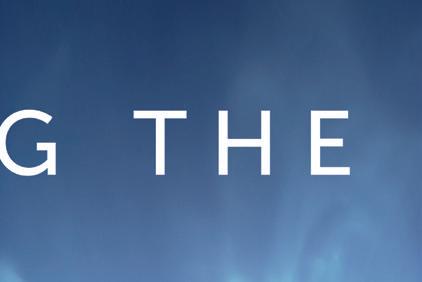










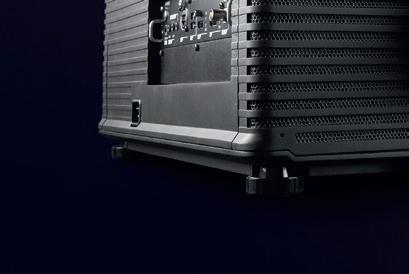
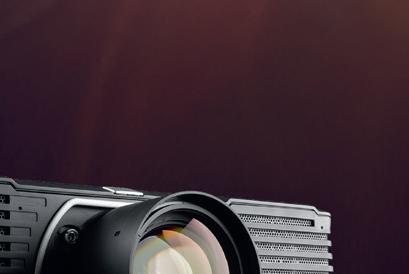

Barco’s new I600 is visioneered with your specific context in mind.
This single-chip projection platform has all your favorite features –exceptional color fidelity, high resolution and a long lifetime – boxed into a smaller, lighter unit. The I600 is your perfect pick for a wide range of applications like artainment, dark rides, projection mapping, and more….

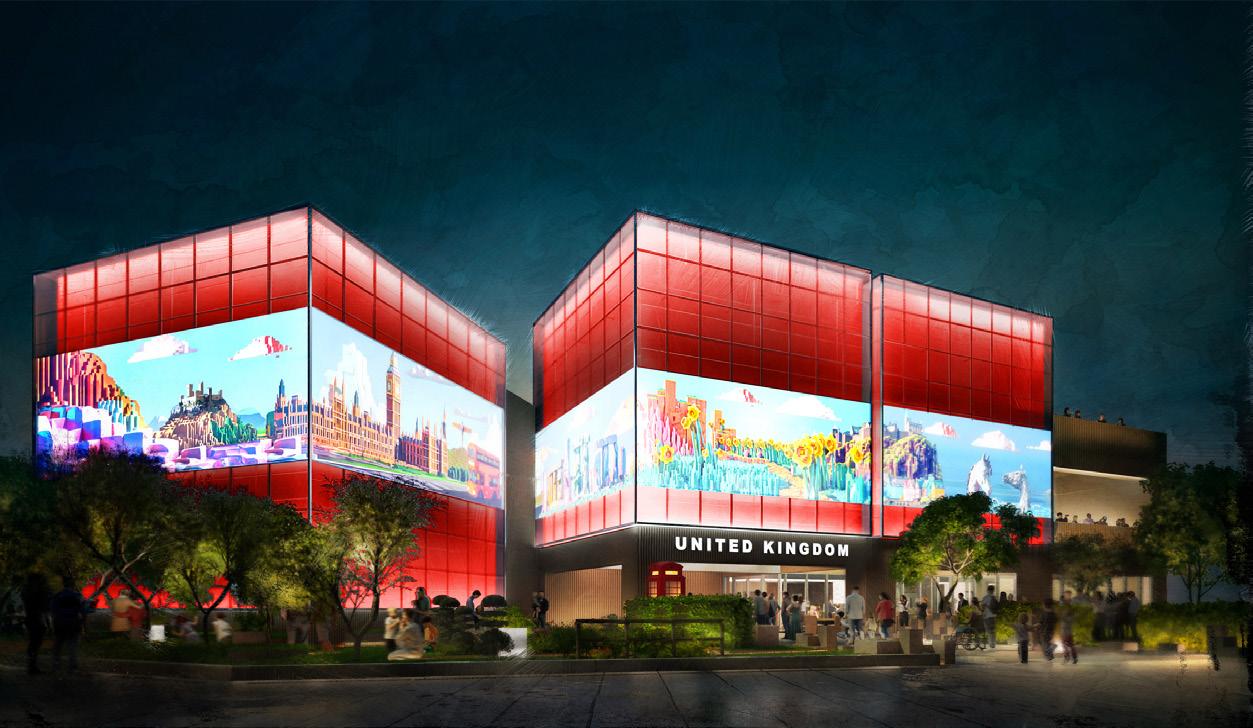
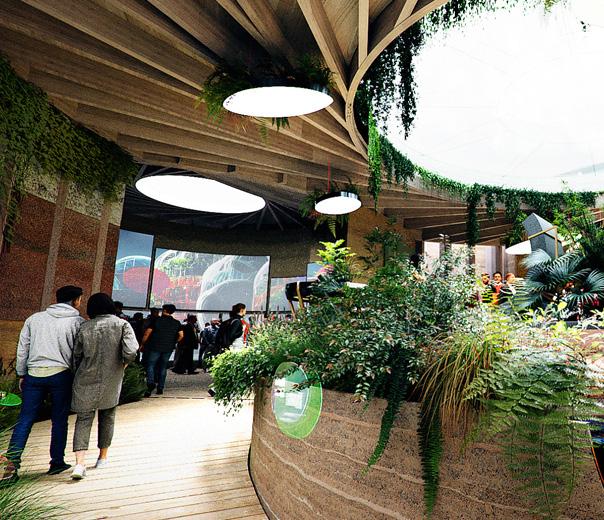
Expo 2025 Osaka nears its grand opening date in April, with additional expos in the pipeline by Jim Ogul
World’s Fairs and Specialized Expos are major attractions. In this century so far, there have been five World’s Fairs and three Specialized Expos. The combined investment by the countries hosting these events totals over $24 billion and the combined attendance totals more than 176 million visits. Looking ahead, two World’s Fairs and one Specialized Expo are on the docket.
Expo 2025 Osaka, Kansai
Scheduled to open April 13, 2025, Expo 2025 Osaka, Kansai, will bring 170 national pavilions and international organizations together under the theme “Designing Future Society for Our Lives.” The Expo site is a busy place at this time with pavilions at various stages of construction. Spanning a 2-kilometer (1.2-mile) circumference, the ring wall surrounding the site is completed.
Innovative pavilion designs
One of the standout features of all World’s Fairs is the innovative and sustainable designs of the pavilion.
The USA Pavilion, designed by Trahan Architects, will use structural components from temporary structures built for the 2020 Summer Olympics in Tokyo. At the end of Expo 2025, these same materials will move on to be used at future events. With its theme “Imagine What We Can Create Together,” the pavilion will feature exhibits designed by BRC Imagination Arts.
The UK Pavilion, designed by WOO architects, will emphasize sustainability with its easy to disassemble and relocatable structure. This modular design aligns with the theme “Come Build the Future,” showcasing the U.K.’s commitment to circular economy principles.
The France Pavilion, designed by Coldefy and Carlo Ratti Associati, will offer a journey through a garden that reveals itself during the visit. Titled “A Hymn to Love,” the pavilion will highlight France’s cultural, scientific, and sustainable contributions.
Germany’s Wa! Germany Pavilion, designed by LAVA Architects, will focus on the circular economy, featuring
interactive exhibits and cultural programs that inspire sustainable practices and innovation.
Corporate pavilions
Corporate pavilions will play a significant role at Expo 2025, showcasing cutting-edge technologies and innovations. Notable examples include the Blue Ocean Dome by Shigeru Ban, constructed from sustainable materials like paper tubes and bamboo. These pavilions will provide insights into the future of various industries, including technology, sustainability, and healthcare.
Projected attendance and demographics
Expo 2025 is expected to attract approximately 28.2 million visits with around 3.5 million coming from overseas. To date over 5 million advance tickets have been sold. The majority of domestic visitors are anticipated to come from within the Kansai region which includes the prefectures of Nara, Wakayama, Kyoto, Osaka, Hydogo and Shi.
Access to the Expo will utilize an extension of the Hokko Technoport Line from Cosmosquare Station on the Osaka Metro Chuo Line. Direct shuttle buses will operate from major railway stations like JR Yumesaki Line’s Sakurajima Station and Kansai International Airport. Private vehicles will park at lots outside the venue and transfer to buses using the “Park and Ride” system. Other access options, such as water transport via boat, are also being considered.
A look back and forward
The previous Expo, Expo 2020 Dubai, attracted 24 million visits and featured pavilions from 192 countries. It highlighted themes of sustainability, mobility, and opportunity, and set a high bar for future Expos with its unique architecture and residual use plan.
Looking ahead, the Bureau International des Expositions has designated Specialized Expo 2027 to be held in Belgrade, Serbia, and a World’s Fair, Expo 2030, in Riyadh, Saudi Arabia.
Expo 2027 Belgrade
This Specialized Expo will run from May 15 to August 15, 2027. The central theme “Play for Humanity” emphasizes the universal importance of play, sports, and music in fostering human connection and development. It’s a significant milestone for Serbia, being the first time a specialized expo is held in the country and the Western Balkan region. With over 120 countries expected to participate, Specialized Expo 2027 will feature a diverse array of pavilions and exhibits spread across a 25-hectare (61.8-acre) site.
Expo 2030 Riyadh, themed “The Era of Change: Together for a Foresighted Tomorrow,” is scheduled to run from October 1, 2030, to March 31, 2031. This World Expo will focus on three main subthemes: A Different Tomorrow, Climate Action, and Prosperity for All.

France Pavilion. Courtesy of Coldefy
The Expo will be held in the north of Riyadh, close to King Khalid International Airport. It’s expected to attract around 40 million site visits. Organizers hope to attract 246 participants, including country pavilions, international organizations, and non-official participants. The Expo will cover an area of 6 million square meters.
Global celebrations
World’s Fairs are not just about presenting innovations, they are about promoting global unity and understanding with their diverse range of pavilions and themes. World’s Fairs offer visitors a chance to explore different cultures, learn about new technologies, and get a glimpse of a sustainable future. Expo 2025 Osaka, Kansai; Expo 2027 Belgrade; and Expo 2030 Riyadh will each in their own way carry on this tradition dating back to the first World’s Fair that took place in London in 1851. •

Since retiring from the U.S. State Department in 2011 after a 30+ year career in world expos, James Ogul (jogul@comcast.net) has remained on the scene in an advisory and consulting role. He writes regularly for InPark Magazine about world’s fairs. See his free online book, Tales From the Expo.
Adirondack’s journey from the theater stage to the world stage
by Wendy M. Grant
Adirondack Studios (ADKS) is celebrating 50 years of transforming bold creative visions into exceptional experiences. Founded as a small scenic studio rooted in theater and stagecraft, ADKS has grown into a global leader in creative design and fabrication, with over 300 employees, multiple production facilities in New York, Orlando and Dubai, and offices in Pasadena, Singapore and Shanghai.
Their impressive client roster ranges from themed entertainment giants Disney, Universal Destinations & Experiences and Dubai Parks & Resorts to well-known brands Warner Bros. Discovery, Christian Dior and Google to cultural institutions such as Lincoln Center and the Franklin Institute. Known for their innovation, craftsmanship, and collaborative spirit, ADKS brings together cutting-edge technology and traditional artistry to create immersive experiences that captivate audiences around the world. As they kick off their 50th anniversary celebration, the company reflects on its incredible legacy, while looking ahead to an exciting future filled with even more groundbreaking projects and creative possibilities.
The early years: Foundations in theater and stagecraft
In 1975, three college friends, Tom Lloyd, Walter Blake, and the late Chris Detmer, started a company in Warrensburg, New York, focused on scenic design and fabrication for live theatrical productions. Lloyd, Founding Principal of ADKS, recalls that it was a combination of “operatic roots, the love of stagecraft, and good colleagues, combined with a dose of moderate insanity” that inspired them to create what was then known as Adirondack Scenic, named for the surrounding Adirondack Mountains.

The first few years are challenging for any new company. But in 1978, two big opportunities in live entertainment laid the groundwork for ADKS’s future success.
First came General Electric’s 100th Anniversary Celebration, which consisted of three concurrent six-week tours of 46 cities. Lloyd recalls, “We designed the show and provided all the sets, lighting, AV, audio equipment, supervision and local crews.”
This large-scale event showcased the company’s ability to handle high-profile, complex productions, and it led to ADKS handling most of GE’s major corporate events for the next three decades.
The other early pivotal project was Bugs Bunny Follies, an arena-touring kids’ show produced by Broadway producer Rodger Hess that featured costumed cartoon characters and voiceover tracks from Mel Blanc. The success of that tour led to ADKS being tapped for a string of touring productions over the next 10 years.
Growth into a global organization: Fostering talent worldwide
Based on both their theme park work – which began with Busch Gardens Williamsburg in 1978 – and their live performance work with clients like Ice Follies, ADKS was invited to provide show sets and scenic finishing for seven attractions at Universal Studios Florida.

Since that relationship began in 1989, they have worked on more than 75 attractions globally for Universal Destinations & Experiences. Lloyd says, “These high-profile projects gave us exposure to the global marketplace. In the 1990s, we expanded our repertoire to include resorts, casinos, restaurants, supermarkets, performance venues, museums and interactive attractions.”
ADKS was also engaged by the Totally Fun Company to design and build a series of outdoor stunt shows for every Six Flags park in the United States, along with several in Mexico. Lloyd notes that the attractions had rigorous requirements, and ADKS rose to the challenge, adopting new methodologies and processes to meet codes, weather and seismic conditions.
With the influx of work, ADKS quickly outgrew its facilities, and the company moved to its current global headquarters: a 126,000-square-foot facility in Argyle, New York. Then the company expanded into other countries. “As opportunities
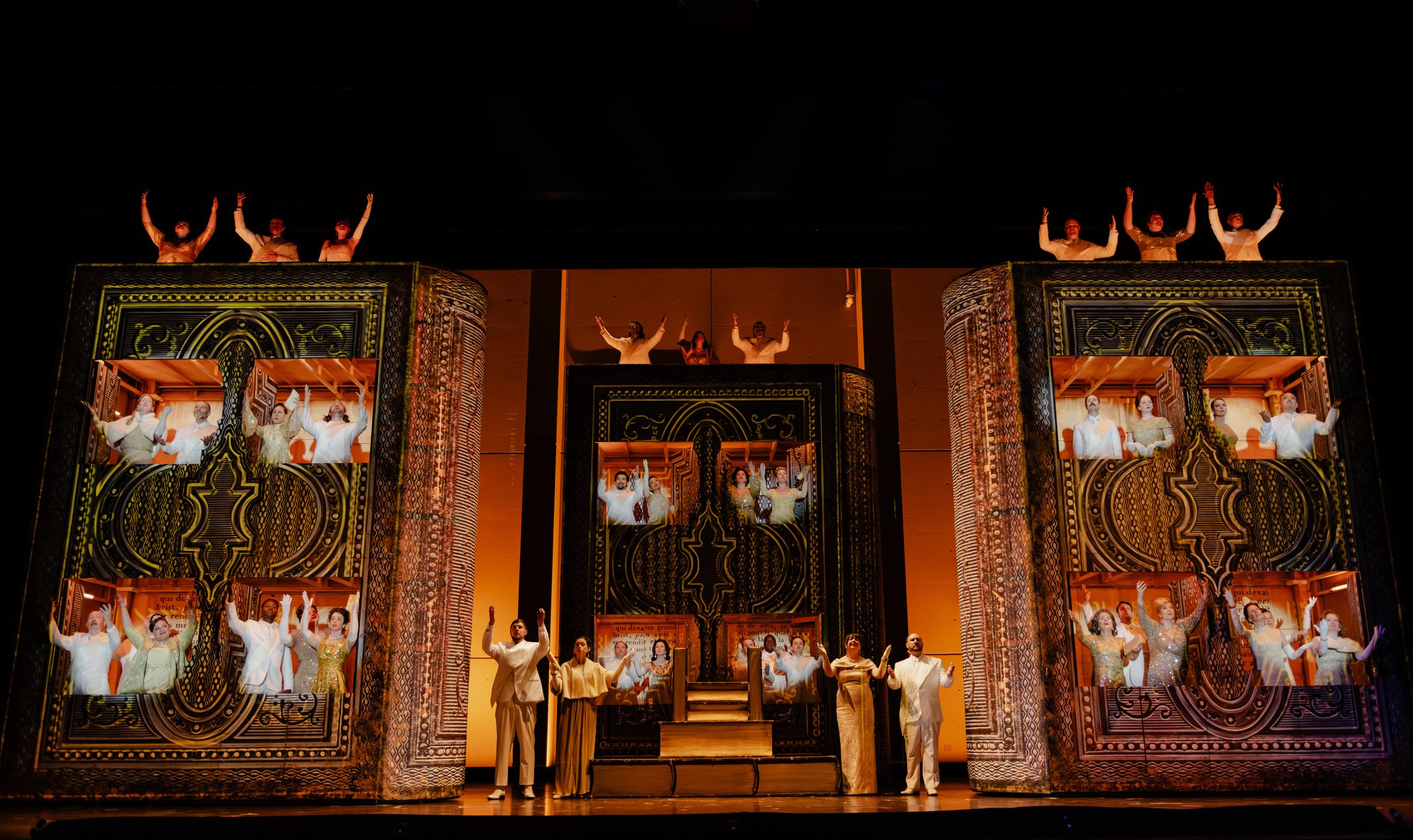
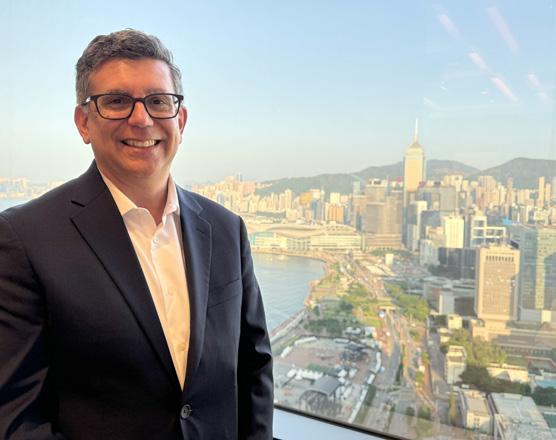
opened for us in the Middle East and Singapore, we chose to engage in those regions with localized offices,” explains Lloyd.
Through this global strategy,
ADKS created a network of regional partners while maintaining its commitment to quality and timely project delivery. Michael Blau, ADKS President and Principal, notes, “Fostering talent from around the world helps us on world-class projects, as does ensuring that we have artisans and craftspeople at each of our locations who are truly passionate about what they do.”
And even though ADKS team members are located around the world, they enjoy working together on projects. For instance, Blau explains, “Something may be designed in Pasadena, then fabricated in upstate New York or Orlando, then installed by our Dubai team, or any combination that makes the project better. Those kinds of projects really help us feel like a unified global community.”
An arsenal of skills for thoughtful artistry: The capabilities of ADKS
ADKS has built an arsenal of skills and services that cover every phase of a project. Whether it’s conceptual design, engineering, fabrication, or project management, ADKS has the in-house talent and resources to bring complex visions to life. Their ability to handle all stages of a project, from ideation to installation, sets them apart as one of the few companies capable of offering a full spectrum of creative services. But Blau says, “Our goal is to never take on too much work but always just the right amount to allow for thoughtful artistry.”
Before ADKS even bids on a project, they internally debate the best ways to solve the potential client’s design challenges. “Team makeup is also crucial. We want to make sure we have the right collective knowledge on every project,” Blau explains. “There are many projects that we would love to work on, but we disqualify them if we don’t have the right people available during the timeframe of the project.” Adds Florida Scenic Manager Jessie Shur, “Working together with the right team, we can better address problems efficiently and holistically.”
Turn the page to play Ready, SETS, Go! with ADKS (article continues on page 42)
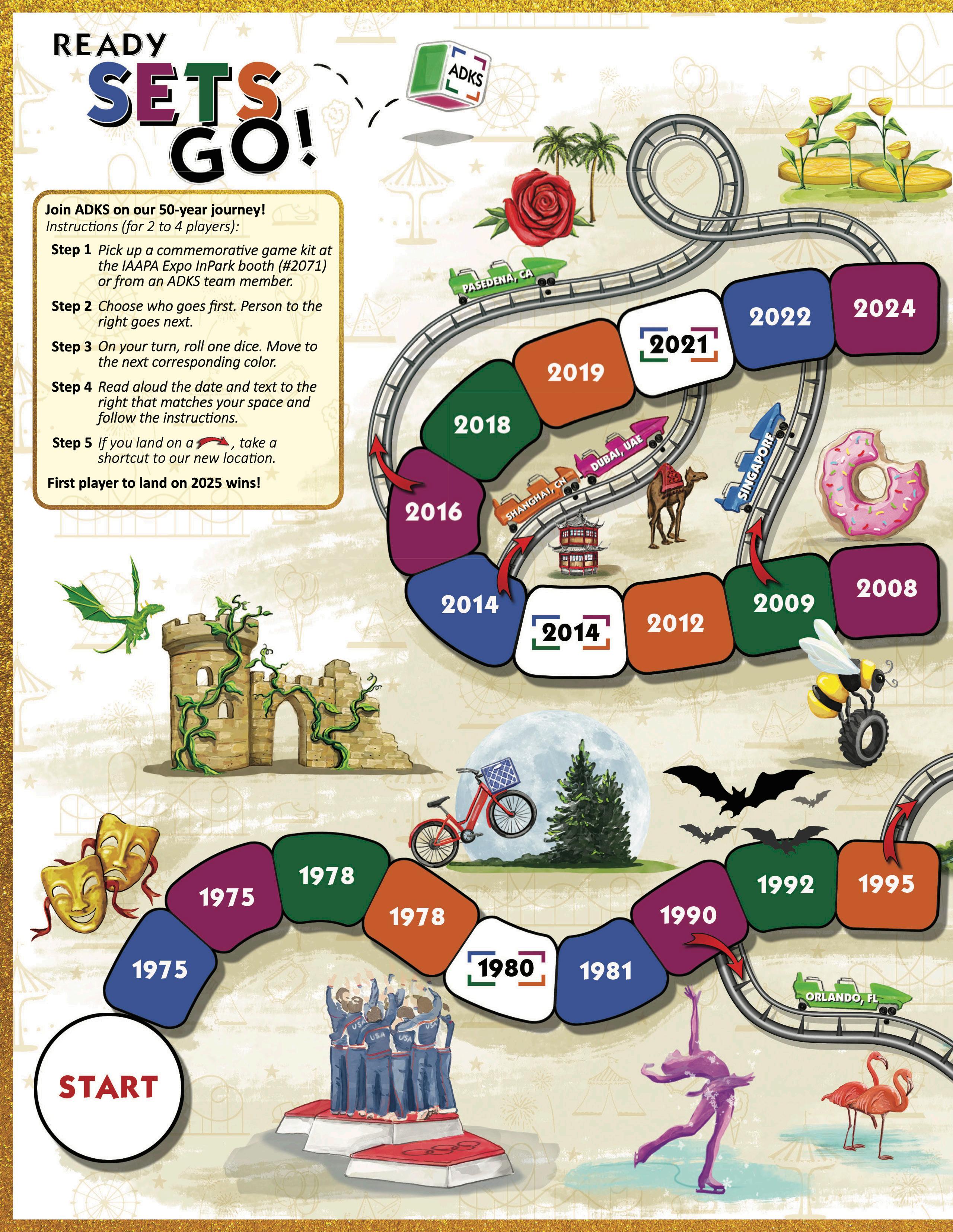


Another unique aspect to the ADKS ethos is their view of competitors as potential collaborators. Lloyd shares, “We recognize our strengths, and we also realize that many of our colleagues in this industry have different qualifications. Often, we are able to achieve better outcomes by joining forces.”
To date, ADKS has completed more than 4,800 projects worldwide, showcasing their expertise across diverse fields, including themed entertainment, cultural destinations, museums, and resorts. For example, ADKS brought Krustyland to life for The Simpsons Ride at Universal Studios Florida; designed the elegant Dr. Inks, Ph.D. bar for a Carnival Cruise Line ship; built a giant, stunning sevenfoot-tall pineapple clock for Dinner by Heston Blumenthal at Atlantis The Royal in Dubai, UAE; completed fabrication and installation for Meow Wolf’s Convergence Station in Denver, Colorado; and crafted a set featuring movable towers and bridges for Lyric Opera of Chicago’s Ring Cycle.

Jessie Shur, ADKS Florida Scenic Manager, enjoys the vendor preview of Mayor Clayton’s WonderLab at Give Kids The World Village. ADKS provided general contracting and fabrication services for the WonderLab, a one-of-a-kind STEAM activity center focused on creativity and exploration.
Photo credit: Adirondack Studios
When asked about a memorable project, Blau cites Citrovia, a 30,000-square-foot immersive pop-up lemon garden for Brookfield Properties’ Manhattan West development.
For the grove of 15-foot-tall fabricated lemon trees, ADKS handcrafted more than 700 resin lemons and nearly 4,000 leaves made from steel and foam. The New York Times hailed Citrovia as a “Seussian wonder” and Architectural Digest called it “a fantasyland of magical realism.”
Blau had seen the lemon grove in concept and in production. But the bright yellow trees on a lush green landscape still made him smile when he saw Citrovia in Manhattan. During his visit, he noticed art students on a field trip hand-sketching the original work ADKS had created. Blau said, “It really excited me to see that our work was influencing artists learning their craft.”
For Shur, it’s the individuals she’s worked with versus the individual projects that have proven to be the most memorable: “Laughing through a construction site together while getting drenched by a downpour that popped up with no warning because there is nothing to do at that point but laugh, having the same song stuck in your head for three years because your coworker did – those are the memories that I love to think back on.”
As ADKS approaches its 50th anniversary, the company has launched “Make A Scene,” a program designed to honor its legacy, celebrate its culture and position the company for continued growth. “Make A Scene” aims to highlight the diverse talents of the ADKS team and expand awareness of the company’s capabilities through initiatives such as two YouTube series that showcase the work and personalities of its project managers, designers and fabricators.
“Make A Scene” also emphasizes the core philosophy of ADKS, which hearkens back to the company’s roots in scenic design: Every project should tell a story and evoke a deep emotional response from the audience.
Blau says, “For years, we have prided ourselves on being the best-kept secret in the industry, working on quality projects and custom fabrication. ‘Make A Scene’ now gives us permission to let the world know who we really are, while reinforcing our culture and values to the next generation of ADKS employees.”
Additionally, ADKS is planning a series of announcements, events, activities and surprises throughout the coming year, so that colleagues, clients, vendors and supporters are all able to celebrate the company’s 50th anniversary.
Looking ahead: Fifty more years of creative solutions As ADKS embarks on its next 50 years, the company remains committed to evolving with the ever-changing landscape of the themed entertainment industry. Embracing new technology is at the forefront of their growth strategy, allowing ADKS to push the boundaries of what’s possible while staying true to their legacy of creativity and artistry.
“There has always been a belief that we can do it,” says Shur. “We might need to work to figure out exactly how, or who, but looking at anything with the mindset that it can be done with


the right ideas behind it has allowed the designers, managers, craftspeople, artists, fabricators, etc., to produce beautiful and interesting work that maybe none of us knew would finally come together.”
So, if you ask where ADKS is going in the future, Blau will tell you: “Wherever our creative industry collaborators need us to go.”
To learn more about ADKS and their 50th Anniversary plans, visit www.wemakeascene.com and follow them on LinkedIn, Instagram and YouTube. •

Wendy M. Grant has worked in marketing for more than 25 years. She served as Director of Marketing and Communications for San Diego’s Fleet Science Center, home to the world’s first IMAX Dome Theater, where she directed marketing for all exhibitions, films, shows and events for 13 years. She served on the Marketing Committee for the Giant Screen Cinema Association and she was a board member for the Giant Dome Theater Consortium. Prior to working in the museum field, she was Director of Marketing at Marine Corps Air Station Miramar where she helped to produce the annual Miramar Air Show. Since 2019, Grant has worked as a communications consultant, writer and editor, with clients in the education and entertainment fields.
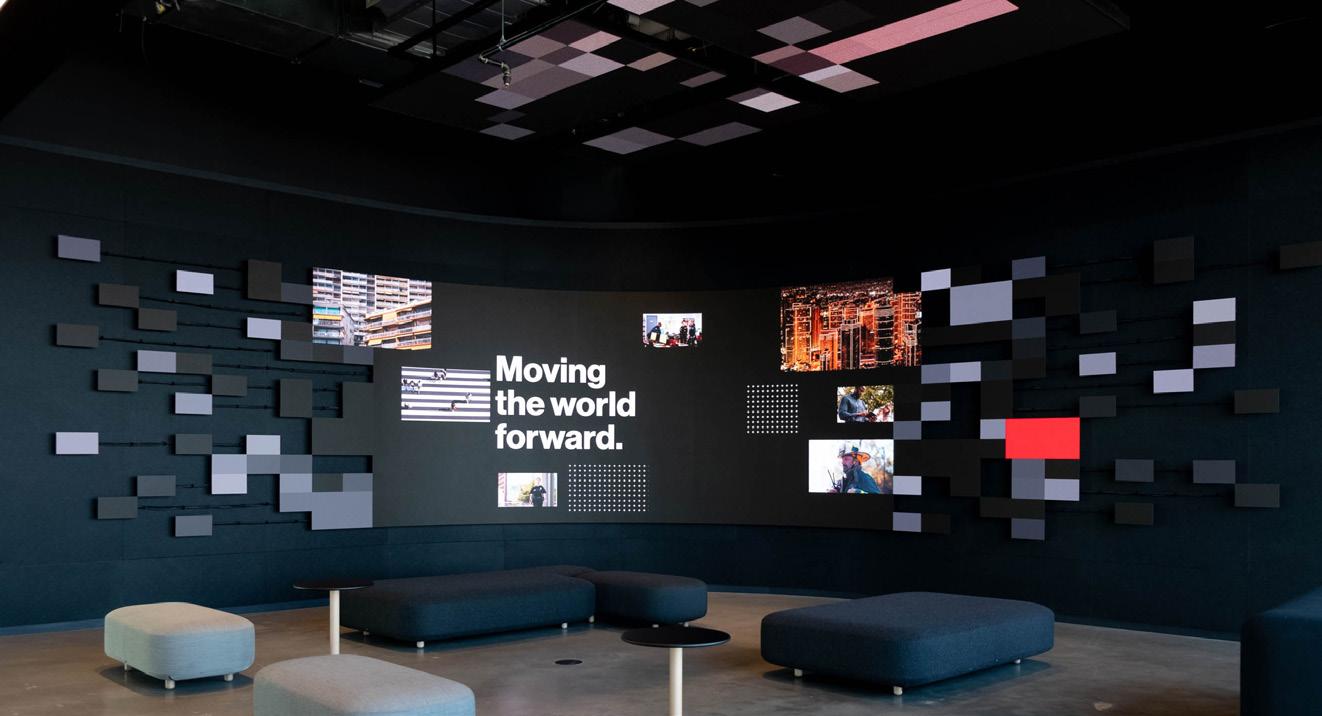



InPark Magazine celebrates its 20th anniversary
by Gabrielle Russon
Two decades ago, Martin Palicki, a young theme park professional from Chicago, had an idea. After years of working in and enjoying theme parks, he wanted to create his own business that supported and reflected the industry he loved. After a couple of years of planning and bouncing ideas off colleagues and friends, Palicki settled on a publication, and InPark Magazine was born.
“I was inspired by the experience of guests inside the park and wanted to represent that to the vendor and operator community,” Palicki explains. When Universal Orlando Resort offered InPark media credentials in early fall of 2004 to cover their Halloween Horror Nights event, Palicki knew the time had come to start publishing, and InPark Magazine had its first cover story.
The newly launched publication took some time to get its footing. Palicki relied on friends to write the first stories and design the magazine. “At the very beginning, I would invite folks over to my apartment and provide pizza and beer while we handlabeled and sorted magazines for mailing,” says Palicki. “There was something fun about doing that as a group, and it reminds me how lucky I’ve been to be surrounded by supportive friends and family.”
Palicki forged on. The stories evolved. So did the magazine. Instead of just focusing on theme parks, InPark grew to report on everything from museums to manufacturers, from world’s fairs to technology innovators. Much of that expansion was thanks to longtime business partner, Judith Rubin, who brought both a deep rolodex and wisdom of the market, and senior correspondent Joe Kleiman, a writer and industry professional with decades of experience in both the giant screen film and animal attractions sectors.
Now, 20 years later, InPark Magazine is celebrating its milestone anniversary. The respected trade publication is printing its 104th edition in time for the annual IAAPA Expo, with additional copies mailed around the globe.



InPark’s backstory starts in the Midwest where a young boy found escapism and joy in amusement parks. Palicki grew up near Chicago as the only child of educators who encouraged him to follow his dreams. In addition to playing the piano, ice skating, bowling and swimming, Palicki enjoyed the family’s annual trips to Santa’s Village Amusement & Water Park in East Dundee, Illinois, and Six Flags Great America in Gurnee, Illinois. “Unlike many people in the industry who first fell in love with Disneyland, I really grew up with the regional parks,” Palicki explains. Family road trips frequently included parks like Cedar Point, Kings Island and Busch Gardens Williamsburg.
His parents also took him to museums, and Palicki developed a particular love for the Museum of Science and Industry in Chicago with its highly themed Yesterday’s Main Street, Coal Mine experience and a long-gone dark ride about petroleum. “I think my upbringing helped me to see the breadth of the industry and the early stages of experiential storytelling outside of the Orlando and California parks,” he says.
But there was also something to be said for a good old fashioned roller coaster. Palicki and his dad joined the American Coaster Enthusiasts (ACE) club, and Martin consumed every piece of media he could find about parks and coasters. One PBS documentary in the ‘90s featured Arrow Dynamic’s Ron Toomer, a celebrated roller coaster designer. Inspired, Palicki wrote a letter to Toomer and confided he wanted to design roller coasters someday too.
Toomer kindly wrote back. The master offered advice: get a mechanical engineering degree and work hard at math.






“That pretty much squashed that dream for me,” Palicki says when he realized the educational commitment required for his dream job. “Even though my dad was a math teacher and I always scored well in those classes, my passion was really more with words and writing.”
Palicki attended Drake University in Des Moines, Iowa, majoring in English and minoring in Business, though the value of those choices for InPark wasn’t known to him at the time. “I still wasn’t totally sure what I wanted to do,” confesses Palicki. “I think I still wanted to design theme parks!” In fact, Palicki convinced a professor to allow his Senior Honors project to be a design and story treatment for a theme park attraction. “Lumberjack Lou’s Logging Adventure is the greatest flume ride that never was,” laughs Palicki.
Throughout college, Palicki worked at Six Flags Great America outside Chicago – first as an intern, and then as a ride training supervisor. For Palicki, there was something magical about working in that environment. “I loved walking out at the end of the night when the park was empty, and you could really take in the details of the theming, lighting and music,” he says.
It was also there that he realized one of the core elements that would later inform InPark. “The people that work at theme parks are unique and I love being around that energy,” Palicki says. “I realized that most park workers are there because they want to be there, and so many of the professionals in our industry are actually fans at heart. I try to make sure some of that enthusiasm gets into every issue of InPark.”
After college, several seasons at Six Flags, and a few years managing a family entertainment center, Palicki felt something was missing. “I loved the parks, but I had this sense that if I was going to be working nights and weekends and holidays, I wanted to do it for myself,” he says. That feeling led to the creation of the magazine.
Palicki relied on the support of his parents (Len and Rosemary Palicki), his partner at the time (Bill St. Yves), a close network of friends, and the Small Business Administration to help craft the business. “I found a job with very supportive and entrepreneurially-focused bosses at a technology consulting company (US Microdyne) that played a big role in the development of InPark,” he says. “It was all those people together that influenced the beginning of the magazine.”
In the fall of 2003, Palicki traveled to the IAAPA Expo with a stack of papers announcing the imminent launch of InPark. The following year, the first-ever InPark Magazine edition was printed and distributed at IAAPA Expo. That copy, with Halloween Horror Nights on the cover, still hangs framed above Palicki’s desk today.
Trade show distribution became a key part of the magazine’s growth with IAAPA Expos, TEA conferences, WWA Show and other industry events.
“I understood that themed entertainment is a global industry and soon started focusing on attending events around the world,” Palicki said, who realized he himself was becoming part of the brand associated with his B2B magazine. “I really attribute that to taking the magazine to the next level. You have to get out there to see and talk to people, and that’s how business gets done.”



His longtime collaborator, Judith Rubin, said Palicki has a way of making friends with his easy-going personality.
Palicki met Rubin, a veteran publicist with long ties to TEA, around 2006. That encounter changed InPark’s trajectory. Rubin gave Palicki a crash course on how themed entertainment extended beyond theme parks. She encouraged him to focus on vendors’ and the manufacturers’ point of view too. Later on, InPark expanded its coverage to zoos, museums and any place where theming plays a big role.
That meant gaining new advertisers for InPark, more trade shows for Palicki to network at and different editorial opportunities.
InPark’s stories “take people behind the scenes,” said Kleiman, the senior correspondent. “It’s a good way to introduce people that are designers or fabricators or vendors within the industry. It’s a good way to showcase what they do and introduce them to potential clients.”
Kleiman counted more than 300 stories he’s worked on since his InPark career began in 2011. That means over the years, Kleiman has interviewed a long and diverse list of experts in the themed entertainment industry, from composers, creators and fabricators to architects, lighting, sound and costume designers, and more.
“It really is a community,” Kleiman said. “These attractions are not put on by just one individual. It really takes people with expertise in different areas to have a successful operation.”
Rubin said she is proud of InPark’s high standards for stories.
“I think with a business magazine, you don’t need to pretend that you’re The New Yorker and that you have a division between editorial and advertising. You have to understand that you’re always working in that gray area,” Rubin said. “I think what makes us unique is that we see what the real story is, and we can tell it with real editorial integrity, but we can also promote and show off the subject of that article to great advantage while also telling the truth. We don’t have hot air.”
Setting it apart from its competitors and online industry bloggers, InPark prints a physical product, something you can hold in your hand and read on the airplane or wherever you go.


Ask the InPark team their favorite story, and you hear about a different memory.
Zauha recalls the thrill of covering the opening of Icebreaker at SeaWorld Orlando.
Palicki thinks back to one story he wrote after visiting with Shandong Huaxia Cultural Tourism Group’s chairman Xia Chunting and witnessing firsthand his vision for themed attractions in Weihai, China.
Rubin is proud of writing about technology and shining the light on companies doing innovative work that too often goes under the radar.
Kleiman, who grew up going to SeaWorld San Diego, traveled to Abu Dhabi last year to report on the company’s breathtaking new park. But he was equally proud of a story about his hometown zoo’s expansion and how it will impact Sacramento, a local story at its finest [see InPark issue #103, “Creating a new zoo from scratch”].

InPark celebrated its 40th issue in 2011 at IAAPA Expo by creating a backdrop of its first 40 issue covers.



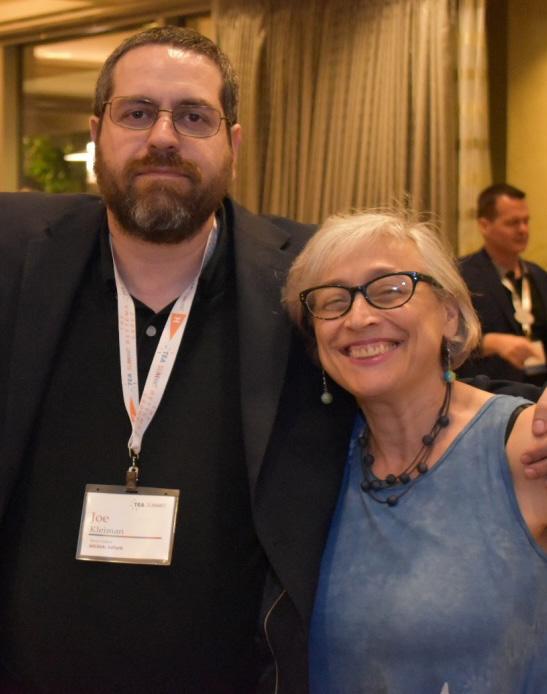


“It’s a testament to InPark’s commitment to the industry that we are one of the few trade publications still offering print subscriptions,” said Jordan Zauha, InPark’s managing editor.
Zauha points to a story where the College Football Hall of Fame is using AI to place guests in historic football moments [see InPark issue #103, “AI scores a win”]. “Stories like this are significant because InPark isn’t just focusing on the major attractions but the smaller venues that are often the testing ground for technology and new ideas,” he said.
“These small, mid-sized venues are almost more important, because they’re the practice ground for innovative technology so that they can then be distributed en masse at the larger venues,” Zauha said.
What can readers and clients expect from InPark in the future? Undoubtedly there will be more stories to tell as InPark’s team covers major theme park openings, groundbreaking technology launches, and global shifts in market share.
“We’re still growing and evolving as the industry grows and evolves, and so I honestly don’t know where we’re going to be five years from now,” Palicki said. “What I do know is that I’m incredibly appreciative of all the people that helped make the magazine what it is today,” Palicki said. “I certainly couldn’t have done it alone. It’s a team behind InPark – it always has been and always will be.” •



Hasbro continues its successful LBE ventures with a treasury of brands interview by Keith Miller
MattProulx, Hasbro’s senior vice president of global experiences, partnerships, and music, talks about where Hasbro is taking the world of location-based entertainment (LBE) by leveraging its wealth of renowned toy and game brands into multigenerational experiences.
Tell us about Hasbro’s goals in creating LBE venues based on Hasbro brands.
We’re in an experience economy, and social media has made it important to meet our consumers where they are. We must surround our consumers 360 degrees and then allow them to choose how they experience our brands, and these LBEs do that. It goes back to the roots of our businesses in toys and games. The reason Hasbro has been around for more than 100 years is that our brands move with people – from childhood to teens to young adulthood to being parents and grandparents. That legacy and that emotional connection passes to each generation. These experiences we’re building are a great way to further that emotional connection. The more customers experience our brands, the more likely they are to stay invested in them.

As we think about our business at Hasbro, we’re trying to develop concepts across the board and not just in theme parks. If you think about Monopoly Lifesized, it’s a new way to experience the brand in a way never done before, and it’s now in London and KSA. We’re expanding beyond theme parks, because these LBE sites don’t require quite the same time commitment, cost, travel, etc.
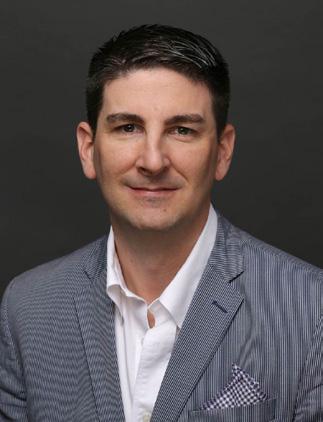
How are you using LBE platforms to reinvigorate legacy Hasbro brands such as Planet Playskool?
At Planet Playskool, the design intent is edutainment – a STEM/STEAM learning experience using our brands to deliver a cool, fun, unique learning experience. As mentioned, one of our superpowers is that we’re a multigenerational play company. We have legacy brands that have been around for decades and are cross-generational, so those LBE learning moments touch kids, parents, and grandparents as they enjoy the nostalgia of these legacy brands together. Then they’ll use our products at home to continue that edutainment.
What are the primary challenges of extending a Hasbro brand onto an LBE platform?
In every experience, we want to delight, surprise, and exceed our consumers’ expectations. If they say, “Oh, this is what I expected,” they’re not going to come back and won’t tell others to experience it. We always want to exceed expectations with experiences customers want to do over and over again.

With Nerf Action Xperience, for instance, we’re paying homage to the heritage of the brand. The appeal of Nerf products was that they made it possible to actually play sports like football and basketball indoors without breaking a window. Now, of course, we take it beyond that and expand the brands in these experiences and take them to places customers aren’t expecting.
The creative challenge is to remain authentic to the brand while building upon it – delivering a unique, compelling experience that’s different from what you can do at home. A successful experience will forge a strong emotional bond to the brand that motivates visitors to continue that connection, through return visits and product purchases.
Tell us more about how the retail component fuels the LBE business model.
We think people want to further these experiences with the toys and games when they return home. Everything we look to

do is on a global scale. Remember that in some international markets many of these brands may not be well known, so the location-based experience becomes an introduction to and a gateway for the customer purchasing the brand products. We’ve even seen that happen with Dungeons & Dragons: The TwentySided Tavern in New York City. It’s not just for hardcore D&D fans. We’re seeing the uninitiated coming in and understanding more about the game and having a great time. The likelihood of them getting more involved in D&D is actually greater. In essence, the LBE helps create advocates of the brands.
Tell us about Hasbro’s interest in waterparks and resorts.
One thing waterparks deliver well upon is what I call the “shampoo methodology” of rinse-and-repeat. You go down a slide or you go in a wave pool, and you already have expectations of what you’re going to do. It’s very programmatic. In the same way some brands transformed the theme park experience, we want to do that in waterparks. So how do we now create competitive gamification in waterparks? If we want to create a competitive element between friends of who went down the water slide the fastest, how do you score that? Some waterparks say, “Oh we’re going to create great theming.” But does it really pay off, and are they really leveraging that expense to create a better experience for the guests? Our parks will. But I’m not free to mention any specific projects yet.
In the hotel and resort space, there’s the business traveler and weekend traveler – the older adult who wants to have a higherend overall experience. Then there’s the family staycation within the drive radius of where they live. For the adult traveler, we thought about Monopoly and conceived a concept we call Monopoly Mansion – a five-star luxury boutique hotel. It’s a white-glove experience that’s lightly themed but highly inspired by the brand. For families, it’s the Hasbro Resort – a hotel and indoor waterpark – and other experiences within it.


The current indoor waterpark business model has been mostly built off non-IP brands. We are very excited about using our iconic brands in these resorts. Given the large number of brands in our portfolio, our ability to program waterpark resorts is just endless, and no one can really compete with us on that level.
What’s the secret of success for Hasbro’s Global Experiences Team?
My team is made up of consummate professionals willing to continually push the boundaries of where the industry is to where it can go. We’ve been able to open up theme parks, a hotel, restaurants, immersive theatrical experiences, and to identify partners excited to see where these experiences can go. These are people experienced in the industry and have learned from what others have done. While we push the boundaries, we still honor the past and our legacy. Our team also stands by our partners. Over the past five years, we’ve not lost one licensee, not even one partner. We’ve opened more than 125 experiences around the world in that time because we’re patient and focused on getting things built and keeping them open. •

Keith Miller has been mesmerized by theme parks and other attractions ever since his first visit to Walt Disney World as a child when he was afforded a visit to the utilidors beneath the Magic Kingdom. A communications major, he served as a freelance writer for Amusement Business weekly magazine for three years before writing for IAAPA’s Funworld Magazine and News Hub for 21 years, 17 of which as news editor. He’s been thrilled to have had the opportunity to travel across North America, Europe, and Asia visiting attractions and plans to spend the next few years traveling more than ever.

Projector
Show
Image
Extended

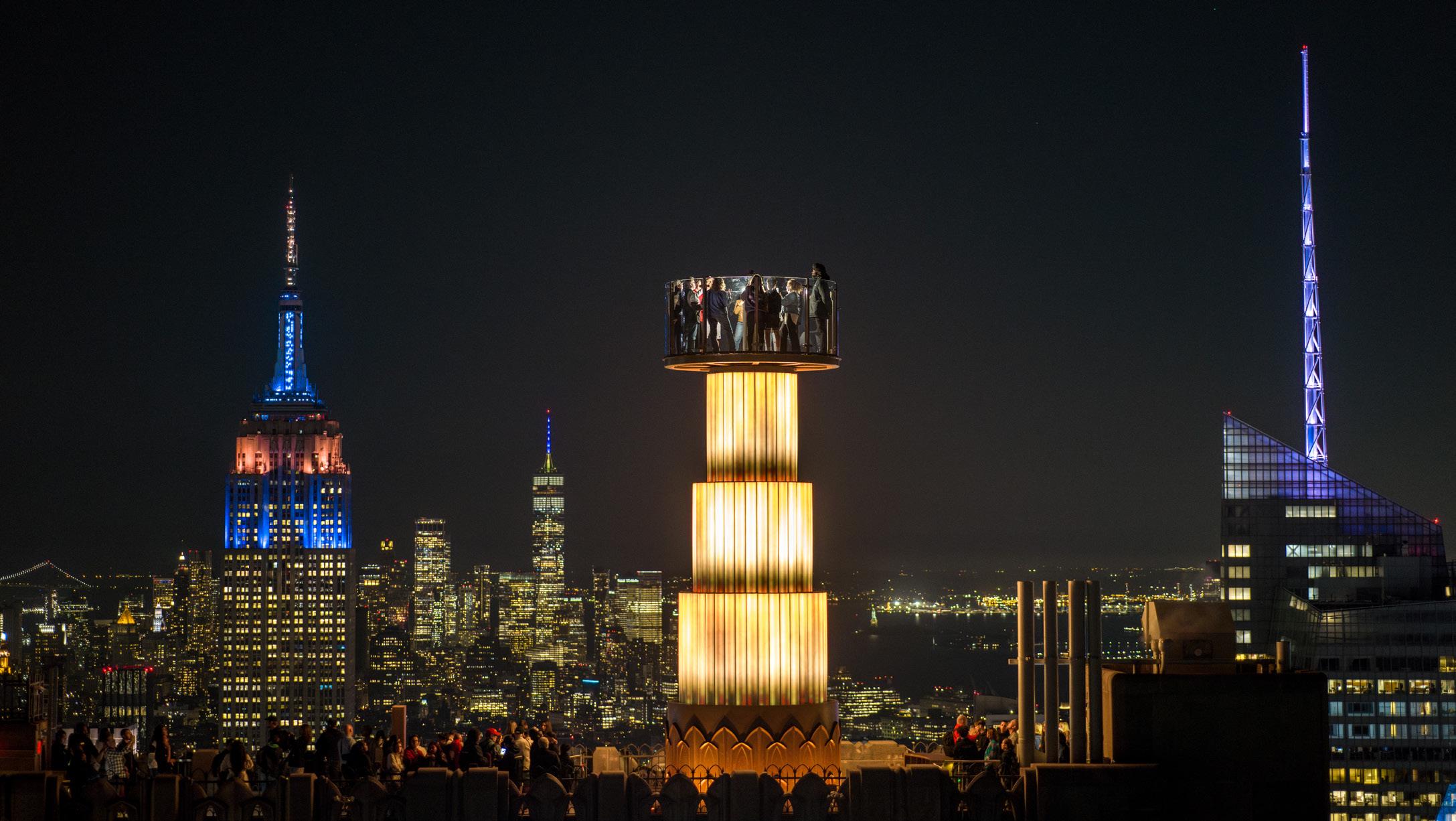
Creating a compelling guest experience within iconic Rockefeller Center by
Gene Jeffers
For more than 90 years, Rockefeller Center, with its 15 buildings serving multiple divisions, has been the beating heart of New York City. Since its opening in the 1930s, it has defined what a sophisticated urban center can be. For design firm THG Creative and their client Tishman Speyer, evoking that depth and richness in the newly completed Top of the Rock guest experience required nearly six years of concept development, design, engineering, fabrication and construction. “We set out to capture the essence of what Rockefeller Center has meant and continues to mean to New York, to the nation and to the world,” says Phil Hettema, Founder and CEO, THG Creative. “Working together with the client, our staff and a set of amazing specialty vendors, our team created a beautiful and unfettered experience in the midst of as-built, legacy structures that did not mitigate easily.”
The project began as a competition, with three design firms generating ideas and concepts with the client. Eventually THG Creative won the contract for concept design, schematic design, design development, construction drawing coordination & support, production, procurement, installation, construction administration, theory of operations, programming, operations training, and opening for the project. In short: do the project.
“Phil had a very clear vision to double down on the history of Rockefeller Center,” says Jared Peter, Senior Producer, THG. “The experience had to tell a nearly century-long cascade of narratives tied to the very fabric of America.” Stories of radio and TV shows and personalities, of romantic meetings while ice skating at The Rink or traversing Rockefeller Plaza, of children’s memories of the Christmas Tree’s splendor, of the energy and

excitement of boom and bust corporations, the glory of iconic art installations, and so much more. Any day of the year, season after season, year after year, there has always been something happening at the Center. “We set out to immerse guests in those stories and emotions and, at the same time, provide unexpected thrills,” says Peter. “The Top of the Rock is a new, dynamic experience that resonates with those memories and creates new ones for the visitors.”
Mezzanine preshow
As a space designed a century ago and adapted again and again, the mezzanine level that houses the welcome and preshow for the Top of the Rock presented a number of structural and infrastructure realities. “With such a vast collection of interwoven stories to tell, we had dozens of concepts that sought to expand the available area, but in the end, we had to carefully select the creative solutions to fit within the original 6,000-square-foot space and within the final project budget,” says Jodi Roberdes, Director of Architecture at THG. Like all projects there were challenges, from lowering the floor to increasing ceiling height and coordinating all HVAC equipment, lighting, and cable routing paths with the existing and new building systems, but all were overcome. “We worked closely with the Gilbane team, the construction manager, to support and execute client design decisions in real time. It was a team effort,” says Roberdes. All of these adaptations had to be kept invisible and seamless to ensure an engaging entry experience would smoothly lead 1,200 guests per hour into and through the Top of the Rock experience.
Driven by Hettema’s vision to capture the essence of the place, THG turned to muralist Sally Wern Comport to create more than 300 linear feet of murals. “The whole idea is mimicking the existing murals in Rockefeller Center,” says Comport. Upon entering the mezzanine, guests are immediately immersed in
the style and feel of the murals and connect with the space. “There are symbols that help you see the universal idea: life at the center of the city where innovation begins and innovation radiates out.”
To further reinforce that sense of being an integral part of Rockefeller Center, a bold palette of materials and finishes was chosen throughout to match the look and feel of the overall complex. The guest journey adds historic photos and informative 75” video displays that highlight drone footage of Rockefeller Center, promote restaurants and retail shops, and display customized theater posters for the upcoming multimedia presentation. The path brings visitors to a 10-foot-high, 15-by-8-foot projectionmapped model, which offers a dynamic orientation to the Center and points out buildings and features of the complex. Eight short segments – each focusing on unique aspects of the historic campus –include Welcome to the Top of the Rock, A City within a City, A Legend Arises, Art Deco Masterpieces, Heart of New York, Center of Commerce and Communication, Mecca for the Arts, and Center of Romance & Glamour. Twelve ceiling projectors, multiple cameras, custom choreographed music, a platoon of speakers and a subwoofer drive a narrative that provides wayfinding information as well as details about the historical and cultural happenings in this village within a city.
“The guest journey then leads to the second preshow attraction, a pulsed immersion theater show,” explains Roberdes. The five-minute immersive show, Spark of Imagination, highlights the colorful history of Rockefeller Center, from its conception to modern day, with archival footage, animation and projected media. As the presentation culminates with the famous Rockefeller Center Christmas Tree, snow begins to fall inside




the theater, surprising and delighting the guests. The theater has a capacity of 120 guests with a runtime that correlates with the elevator cycle time, optimizing the guests’ wait times to get to the upper levels and experience the dramatic views and rooftop attractions.
The 46-second elevator ride from the mezzanine to the Observation Decks on the 69th and 70th levels includes a media and light show on two transparent OLED display screens that reveal the shaft on the way up and down. The upward journey features animated media that brings to life Wisdom, one of the Center’s most iconic art pieces; the downward ride show connects guests to different levels of the building and their tenants. All add to the guests’ understanding of Rockefeller Center and its place in the city and in history.
Unique among New York City observation decks, the Top of the Rock puts guests in the midst of, rather than high above, New York City’s skyscraper forest. Unique views of the city and skyline offer the greatest view in the world. For guests wanting more, two upcharge attractions for the adventurous are available.
On the 69th level, The Beam gives guests a way to reproduce the iconic photo of iron workers eating lunch high above the ground while Rockefeller Center was under construction. They sit on an iron crossbeam and are lifted 12 feet above the floor and rotated 180 degrees by a two-stage hydraulic system. The height of the ride has been carefully calculated to ensure that passengers are far enough above the glass edge wall so photos replicate the immense height, the dangling feet and the Central Park background of the original ironworkers’ photo.
On the 70th level, Skylft rises from the roof deck and spirits thirteen guests and an operator 30 feet up. Designed by THG and fabricated and installed by TAIT, the lift has two induction motors mechanically linked to two SERAPID Rigid Chain units and vertically transports guests to a one-of-a-kind 360-degree view of New York City. The lift boasts a glass floor, which starts out opaque and, when the lift reaches the top, turns transparent and provides a thrilling sense of floating in air. It performs a full rotation during the ascent, during the dwell time at the top, and during the descent to give every passenger a complete panoramic view. The careful selection of finishes and fluting on the four stages of the lift again provide a visual effect compatible with Rockefeller Center architecture. Programmable LED lighting makes for endless possibilities as a viewing platform for guests and as a spectacular sight for observers in nearby buildings.
Whatever was wanted, whatever was needed
As with any complex project, completing the Top of the Rock required THG Creative and their vendors to find
solutions and remain within budget. “Whatever was wanted, whatever needed to be changed, we figured out a way to do it,” says Roberdes. “This is one of THG’s strengths. We identify potential clashes and concerns before they occur, offer and implement solutions.”
Every detail designed and engineered for the project reflects and touches Hettema’s vision. “We pulled together an amazing team of staff and vendors and created something you want to look at, dive into deeply, or just stand back and admire for its beauty,” says Peter. “Top of the Rock is a one-of-a-kind, dynamic experience you don’t want to miss.”
With the final attraction – the Skylift – now open, the Top of the Rock has quickly become the “must-do” experience in New York City for tourists and locals. “Finding ways to portray this multidimensional, multigenerational Center was a complex task,” says Hettema. “We felt it was crucial for guests to see what made this such an iconic place. We wanted guests to create unforgettable memories of this place, of Rockefeller Center. I think we have done just that.”
THG Creative specializes in uniquely creative, impactful design and production in the world of experiential entertainment. Visit thgcreative.com. •


• TAIT (Skylift Engineering, Fabrication and Install)
• Electrosonic (AVC Integration)
• Adirondack Studios (Scenic Fabricator)
• Eos Lightmedia (Lighting Integration)
• Visual Terrain (Lighting Designer–Mezzanine & Elevators)
• David Finn Design (Skylift Lighting Designer)
• Supply&Demand (Media Designer)
• Yessian (Music & Sound Design)
• Cadmium Scénique (Model Maker/Show Set)
• Hunt Design (Signage)
• 5TEN (LED Consultant)
• Disguise (Servers/3D Calibration)


• Cimolai (Beam Fabricator and Install)
• TechMD (AVC Design)
• The Fury Studio (Media/ Projection Support)
• TWT (Ride/Attraction Consultant)
• 11:11 (Creative–Models/Mockups)
• Gilbane (Construction Management)
• MDA (Executive Architect)
• AMA Group (MEP Engineers)
• GMS (Structural Engineers)
• Schindler (Elevator)
• National Cab (Elevator Cab Interiors)
• The Andrus Group (Project Management Support)
Gene Jeffers, former (2001-2013) TEA Executive Director, writes in a variety of genres. Based in Pasadena, Gene and his wife Carol (also a writer) look forward to traveling and spending more time with their two daughters, son-in-law and three grandchildren.




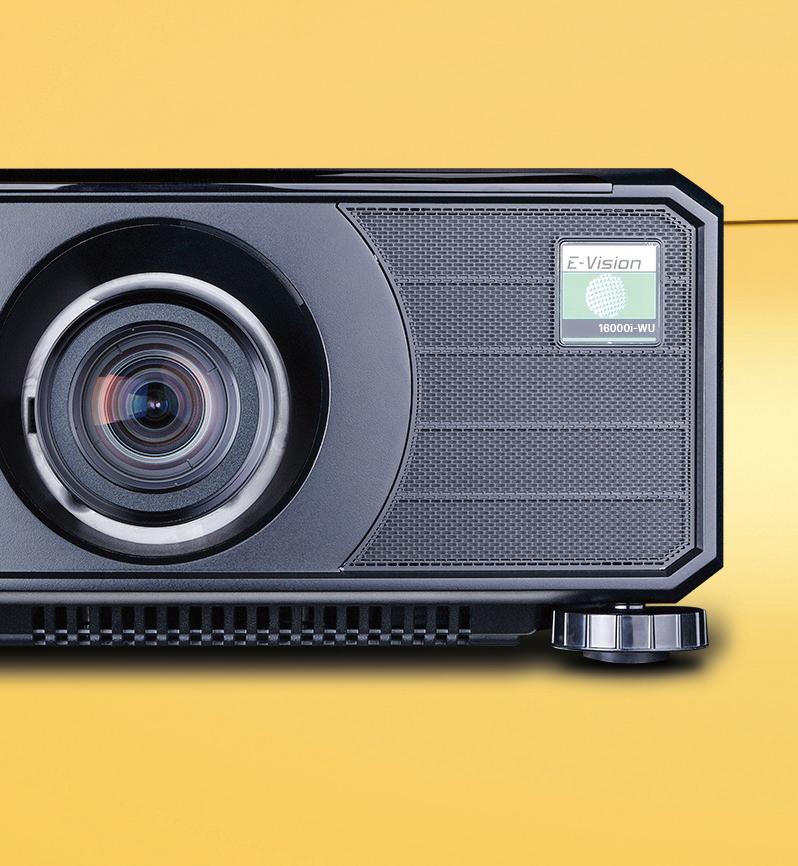






































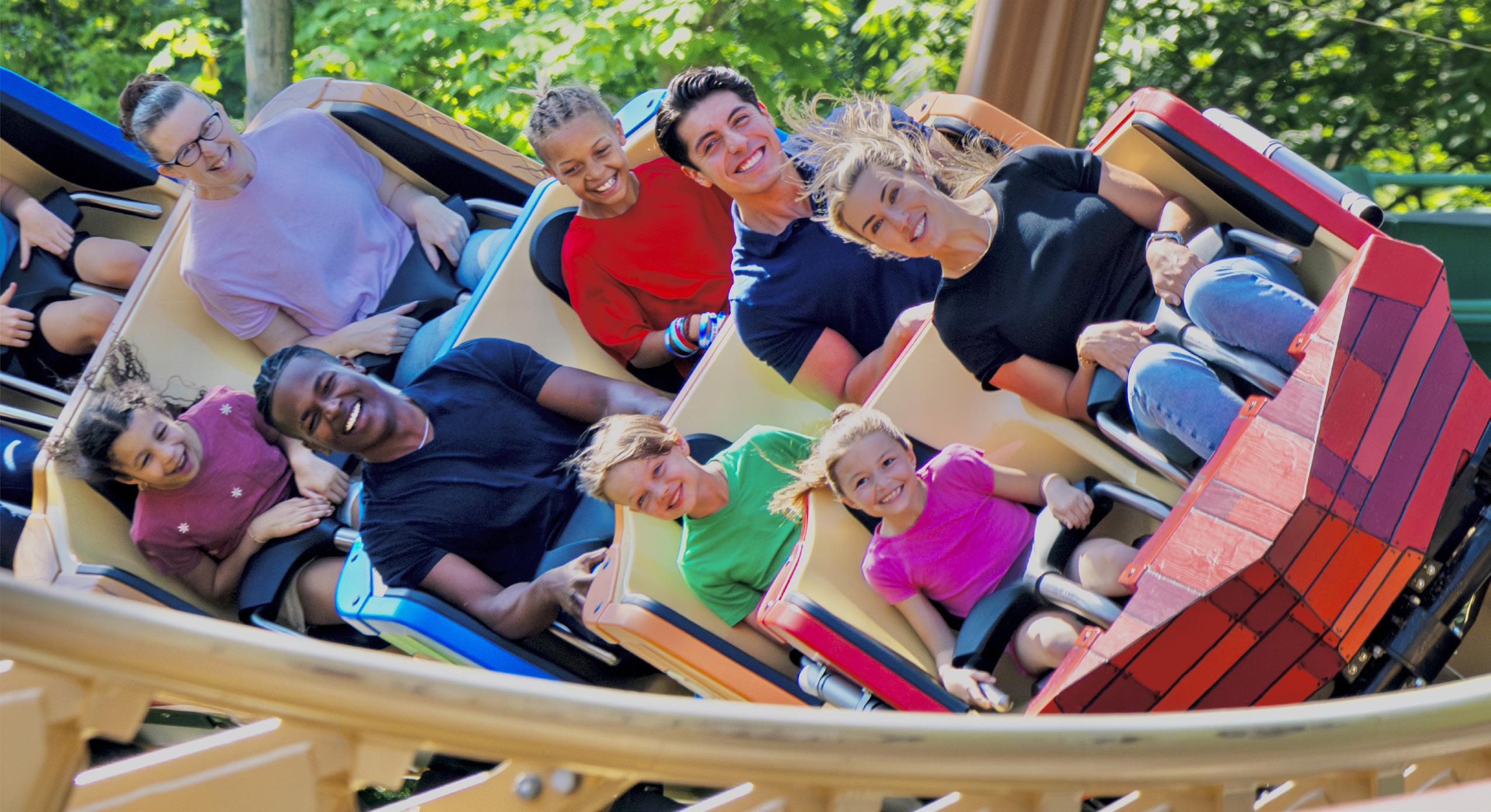
by Jordan Zauha
Based out of the Netherlands, Vekoma Rides is one of the largest manufacturers in the world of roller coasters and attractions, providing thrill and fun for all ages. Vekoma has everything under one roof – from creative design, highprecision engineering and manufacturing to service and after-sales. Over 300 experts dedicate their focus and passion for joy and fun, crafting quality innovations while meeting and exceeding stringent standards of safety, quality and comfort.
2024 represented a consistent series of Vekoma attraction openings at parks around the world, with more ready to open before the end of the year. In addition, Vekoma’s signature ride innovations continue into 2025, offering first-of-their-kind builds at several United States parks and even more across the globe.
Family coaster renaissance
While Vekoma never shies away from producing an intense high-thrill rush, one of the company’s most successful products continues to be its line of family coasters, satisfying both operators and the attractions’ wide guest demographic. Approachable for families with young children along with first-
time coaster riders, family coasters supply operators with rerideable favorites that make maintenance affordable. Standard part acquisition along with the ride’s basic technology functions ensure easy operation and care.
Similar to how park operators cater to the diverse needs of their guests, Vekoma has come equipped with different layouts and ride experiences to help park owners delight attendees. Inspired by its thrilling predecessor, the Family Boomerang Rebound recreates the popular forward-then-backward excitement typical of the compactly designed Boomerang coasters while providing an appropriate thrill level for a family audience. Guests experience low-to-the-ground, high speed movement topping out at 37 mph with only a 38” height restriction. Despite its appeal to young riders, these family friendly experiences prove enjoyable for older guests too, particularly for its high-speed feel and surprising backward-run sensation.
In May, Kings Island’s PEANUTS-themed extension – Camp Snoopy – opened to guests, featuring Snoopy’s Soap Box Racers, a Family Boomerang Rebound coaster. In ride vehicles looking like painted soap box race cars inspired by the iconic

looks of PEANUTS characters, riders climb up a 70-foot hill to the race starting line. They then launch forward, twisting and turning down the 672-foot-long track to the finish line. But that’s not the end. Riders then make the same journey, this time backwards. Individual lap restraints ensure riders both small and tall can easily and securely ride side-by-side.
Vekoma’s standard Family Boomerang has delighted audiences in Europe for over a decade, but 2024 marked the premiere of this modern classic in the United States. Good Gravy!, the Thanksgiving-inspired attraction at Holiday World, marked the park’s first family roller coaster. A highly themed queue sets the table for guests’ arrival at Grandma Gracy’s home before boarding gravy boat-inspired ride vehicles. The 1,500-foot-long, cranberry-colored track twists through the park’s Thanksgiving-themed area, which includes a highspeed dash through a jar of cranberry sauce.
Along with iterating on past favorites, Vekoma continues to innovate, delivering new coaster experiences, such as the Family Coaster Horus. This sit-down family coaster is the company’s longest layout and features a 41-foot-tall lift. Riffing off the company’s Family Coaster range, this latest offering delivers fastpaced movement and airtime enjoyed by young and old alike. With 1,060 feet of track, the delight from guests is more than just a brief rush.
As the first U.S. installation of the Family Coaster Horus, Midnight Flyer at Santa’s Village (Jefferson, NH) boards guests in its bold navyblue ride vehicles where, after climbing the lift hill, they soar down the striking green track as if flying through the night air like reindeer.
The kinetic atmosphere provided by coasters is irresistibly palpable. The fast motion and joyful shouts of guests naturally enlivens park areas; bolstered by the large audience potential of family coasters, these attractions become staples for guests to enjoy again and again not only through multiple visits but in a single day. Some parks, such as Energylandia in Zator, Poland, and Emerald Park in Kilbrew, Ireland, have opted to double the fun.
Twice as nice
This year, Poland’s Energylandia added an entirely new seventh themed land: Sweet Valley. The brightly colored family friendly area boasts two Vekoma family coasters. Fluff Choco Chip Creek pulls from the ever-popular Mine Train coaster style, boasting a track length of over 3,900 feet with three heart-pumping lift hills. Its top speed of 34 mph provides a thrilling rush appropriate for all ages.
Located just across from Fluff Choco Chip Creek, Nacomi Honey Harbour delivers an even more approachable train-themed coaster experience. This Kalypso Family Coaster embraces young first-time riders and the young-at-heart with its sunshine orange train cars gently speeding along its teal track. Measuring a length of 833 feet, the graceful swoops top out at a speed of 28.5 mph.
Emerald Park elevated its attraction programming to the next degree by intertwining its coasters for an even more integrated experience that enlivens its Tír Na nÓg themed area. This newly opened region of Emerald Park has accomplished a sense of immersive environmental design not achieved by the park prior, due in part to the master planning and design consultants at Jora Vision [see InPark issue #102, “Brainstorming, blueprints and buildings”].

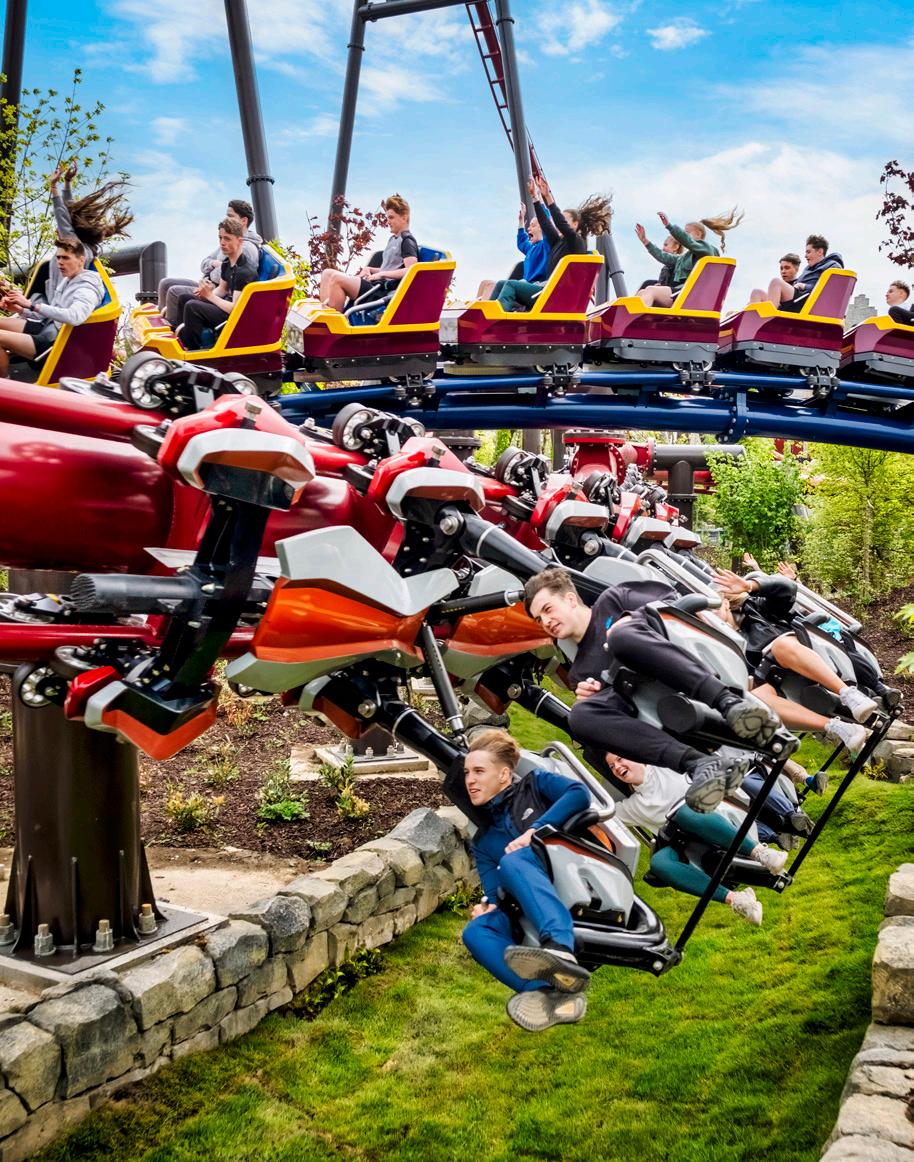
Intertwining coasters The Quest (Family Boomerang) and Na Fianna Force (Suspended Thrill Coaster) infuse Emerald Park’s new Tír Na nÓg area with a heightened sense of thrill and adventure.
“€22 million has been invested,” said Emerald Park Managing Director Charles Coyle, “so it’s a huge, proud and exciting moment and the culmination of seven years of hard work.” Coyle noted that the Tír Na nÓg expansion marked the largest investment in tourism for Ireland in the past five years. The crowned jewels of the “Land of Eternal Youth” themed land are its interwoven family coasters: The Quest and Na Fianna Force.
The Quest, also a Family Boomerang, blends the ride with the storytelling of the Land of Eternal Youth as riders race forward and climb up a ruined castle tower before making their backwards return trip.
Along the path, The Quest swoops alongside Na Fianna Force, the land’s Suspended Thrill Coaster. Providing a more intense thrill, Na Fianna Force soars up to nearly 105 feet in height and provides three inversions along its smooth-riding 2,460 feet of track. Still, for the adventurous family, the suspended coaster allows guests 48” and taller to flip, soar, and rush through the highly-detailed new land.
Welcoming more great attractions in 2024 Before 2024 ends, Vekoma will deliver two more attention-grabbing thrillers, both located Down Under. Warner Bros. Movie World in Queensland, Australia, will open the world’s first dedicated Wizard
of Oz themed land with two Vekoma coasters. Flight of the Wicked Witch, a Suspended Family Coaster, will rise up 62 feet before rushing alongside the iconic film’s Winged Monkeys, reaching speeds of 41.5 mph along the 1,486-foot track. The Family Boomerang Racer coaster Kansas Twister will take guests 72 feet in the air, before dropping and speeding along the 721-foot track at 36 mph through the Land of Oz and back to home again, just like Dorothy herself. This dueling coaster supplies guests with two tracks to adventure on, with multiple crossing effects during the ride experience.
Just down the road at Dreamworld, Vekoma will give riders an unexpected coaster experience with multiple different cycle paths. Jungle Rush, located in the park’s Rivertown zone, will be the first Switchback Coaster from Vekoma. This family thrill coaster features an inclined turntable hurling families into 12 airtime elements, unique show set moments, and a thrilling ride backwards as well as forwards.
Looking ahead
“We are working hard on and gearing up for a successful 2025 with a variety of new rides opening next year,” said Ricardo Tonding Etges, Vice President Sales & Marketing - Americas.
Next year, Six Flags Great Adventure will be the host of North America’s first Super Boomerang when THE FLASH: Vertical Velocity opens. Reaching speeds up to 59 mph, this enhanced version of a Vekoma classic raises guests almost 100 feet off the ground and has them experience a zero-g roll back to its vertical tower.
Vekoma’s list for 2025 is already packed with delights for riders around the world. Cedar Point will feature a Tilt Coaster entitled Siren’s Curse. Santa’s Village (Bracebridge, Canada) will open the custom Family Coaster Yeti Trek, which will surge guests through the property’s pine tree dotted landscape and over the Muskoka River. Poland’s Mandoria will see the opening of an indoor Family Launch Coaster entitled Aquila. The coaster will perform a double pass on the 1,476-foot track for a total ride experience of 2,952 feet and two launches. Aquila also carries the unique distinctions of a height restriction of only 38 inches and an acceleration of 0 to 43.5 mph in only 3 seconds. Additionally, an indoor Family Coaster will open at Bommelwereld in the Netherlands, and a Kalypso Family Coaster will soon make its home at Winnoland in France.
Whether creating a new family coaster that appeals to children, teens, parents and grandparents; designing a heart-pounding experience to delight thrill seekers; or developing groundbreaking attractions, Vekoma Rides is ready to assist operators and owners in delighting their guests. The company plans to announce additional openings during IAAPA Expo in Orlando, FL. Vekoma will be exhibiting at Booth #5124 from November 19-22 at the Orange County Convention Center. •

Jordan is a freelance writer and narrative designer in the themed entertainment industry. In 2022, he graduated from the University of Central Florida as a member of the inaugural cohort of the Themed Experience graduate program. Jordan enjoys the continual conversation around the future of guest experiences and their creative formation.

Creatives, keep being creative. We’re here to help you plan it, print it, frame it, stage it, illuminate it, dimensionally create it, custom fabricate it, dye-sub a background for it, package it, wrap it, deliver it, and then... custom install it.
Brian Paiva’s Octopus Design Studio extends its tentacles into new markets and innovations by
Becci Knowles

Brian Paiva’s career is a testament to the power of passion and innovation. Starting from humble beginnings as a junior high stage crew member, he has carved a niche in the entertainment industry, pioneering new technologies and redefining immersive experiences. Today, Brian stands at the forefront of cutting-edge entertainment with his company, Octopus Design Studio. Designed for extreme wet locations, his latest product, FluidLED, is revolutionizing the way guests interact with visual displays.
BrianPaiva’s career, marked by innovation and a knack for seizing opportunities, has taken him from the vibrant discotheque scene of the early ‘80s to the forefront of immersive experiences in the cruise industry and beyond. His love affair with entertainment started back in junior high, where he was a regular member of the school’s theatrical stage crew. He later founded a mobile DJ company with his friends, playing all the proms, parties and homecomings. In college, he met Mark Rowlands, who started a company importing discotheque equipment to the U.S.
“We were about a decade behind Europe in the mobile DJ scene,” says Paiva. He started working with Rowlands’s company, Towards 2000, in the early ‘80s. The equipment he used there was newer and more advanced and where his interests in tech really developed. “We provided high-end mobile DJ services for Hollywood and Beverly Hills events,” says Paiva. “Towards 2000 was the go-to company for all the celebrity special events and the TV and movie wrap parties.”
In 1987, Paiva founded Fashion Media, focusing on music programming, curation, and DJing for fashion shows. He eventually sold Fashion Media and moved to The Omnis Company, a boutique project management and consulting firm. From Omnis, he moved to Landmark Entertainment Group, then the world’s largest independently owned theme park design and production company.
Next stop was Thomas Gregor Associates (TGA), an AV/IT integration company where he would eventually become an equity partner and CEO. His work there included developing theaters and local entertainment systems for Princess Cruises. “Princess Cruises initially lacked Broadway-style theaters, so we worked on designing and integrating these features,” he says. Particularly noteworthy is the “Movies Under the Stars” project, an interactive outdoor cinema venue which started with the Caribbean Princess in 2004. The success of “Movies Under the Stars” led to its implementation on all Princess cruise ships and inspired similar features on other ships.
After leading a successful effort to sell TGA, Paiva stayed on for the transition and then accepted a position as Global Vice President, Business Development and Strategy for FUNA International. FUNA was an AV integration company with over 200 employees and offices in several countries. During his time there Paiva was responsible for establishing an office and large fabrication facility in China as well as leading the effort to expand the company’s portfolio through the acquisition of two smaller integration companies specializing in themed entertainment and superyachts. FUNA was acquired by Wärtsilä in 2014.
Paiva started Enigma in 2015, a business development and marketing consulting agency. Enigma had offices in Shanghai and Dubai in addition to its Austin, Texas, location. Due to
the COVID-19 pandemic, he had to adapt his business. In late 2022, he formed Octopus Design Studio, focusing on creative work and design. “I think that’s the value proposition I bring to the table. I have the business background, the technical background and the creative background,” he says.
Early cruise projects and the perfect Princess Richard Parker, Director of Newbuild Guest Experience & Product Development at Princess Cruises, has known Paiva since his days at TGA. They have been working on the design of the latest class of Princess ship, Project Sphere. The first ship of the new class, Sun Princess, was introduced in February of this year. Sun Princess will be followed by a sister ship, Star Princess, debuting in October 2025. Sun Princess and Star Princess are the largest ships in the Princess fleet and an evolution of the brand. The ships introduce unique first-of-a-kind experiences, and The Dome is one of them. Located on Deck 17 & 18, during the day, The Dome is the perfect spot to relax and enjoy the views. In the evening, it becomes a dynamic entertainment venue, with multiple shows, including those of Cirque Éloize.
Parker explains more. “We knew from an early phase that we wanted a large LED screen to be a key feature. The screen would be used for atmospheric images during the day to complement the natural views from The Dome, but in the evening the LED screen would form an important backdrop to the shows.
“The challenge with having an LED screen in The Dome was its proximity to an indoor-outdoor swimming pool, a first for the cruise industry. The only available regulatory requirements for the application were intended for low voltage LED lighting that was submersed in the pool and not for a LED screen. The stringent regulatory requirements for a low voltage LED screen in a wet location almost seemed impossible to achieve, so we reached out to Brian to help find a solution.
“Fortunately, the FluidLED low voltage product was already in early development, and it proved to be the most hopeful solution to our challenge. Working closely with Brian, on a very tight delivery deadline, Brian was able to work with the manufacture team to develop and test the product to meet our exacting regulatory requirements and have the product certified for use in our application.”
The product is unique in that it can be used in extreme wet locations, such as near a guest swimming pool. The LED screen was installed during the build process with shipbuilding partners Fincantieri and AV systems integrator Videlio-HMS. “The screen looks fantastic and has become a central feature of The Dome. In addition to the venue ambience the screen supports during the day; it is an exciting star of the evening performances,” says Parker.

Another area in which Octopus Design Studio been actively involved is exploring and defining the limits of life-size hologram display boxes. Photo courtesy of Octopus Design Studio
Explaining why Octopus was perfectly placed to deliver on this project, Paiva says, “One of the projects we had been working on was a LED screen that we could submerge in the water for fountain show applications. That was the initial plan, but we were getting a lot of resistance to it from the governing bodies that approve electrical codes and installations, so the project stalled. We were fortunate in that we had a two-year R&D head start. When Princess came to us, I said, ‘We’ve been working on putting a screen in the water, not on top of the water, so that’s quite a bit easier for us, actually!’”
The FluidLED project now includes a floor and a box product, designed for interactive and dimensional video displays. The floor product can be used in playscapes and other interactive environments, while the box product can be used for dimensional video displays in front of existing LED walls. It has received interest from waterparks and fountain show companies. Octopus is continuing to develop and modify these products to meet various applications and customer needs under the FluidLED brand.
Another area Octopus Creative has been actively involved in is exploring and defining the limits of life-size hologram display boxes. There are several manufacturers offering various types of display boxes that allow you to create what can be best described as a volumetric video illusion like a hologram. The transparent LCD screen, when combined with the dimensional life-sized display box and specific lighting and videography, creates a convincing illusion that has many applications.
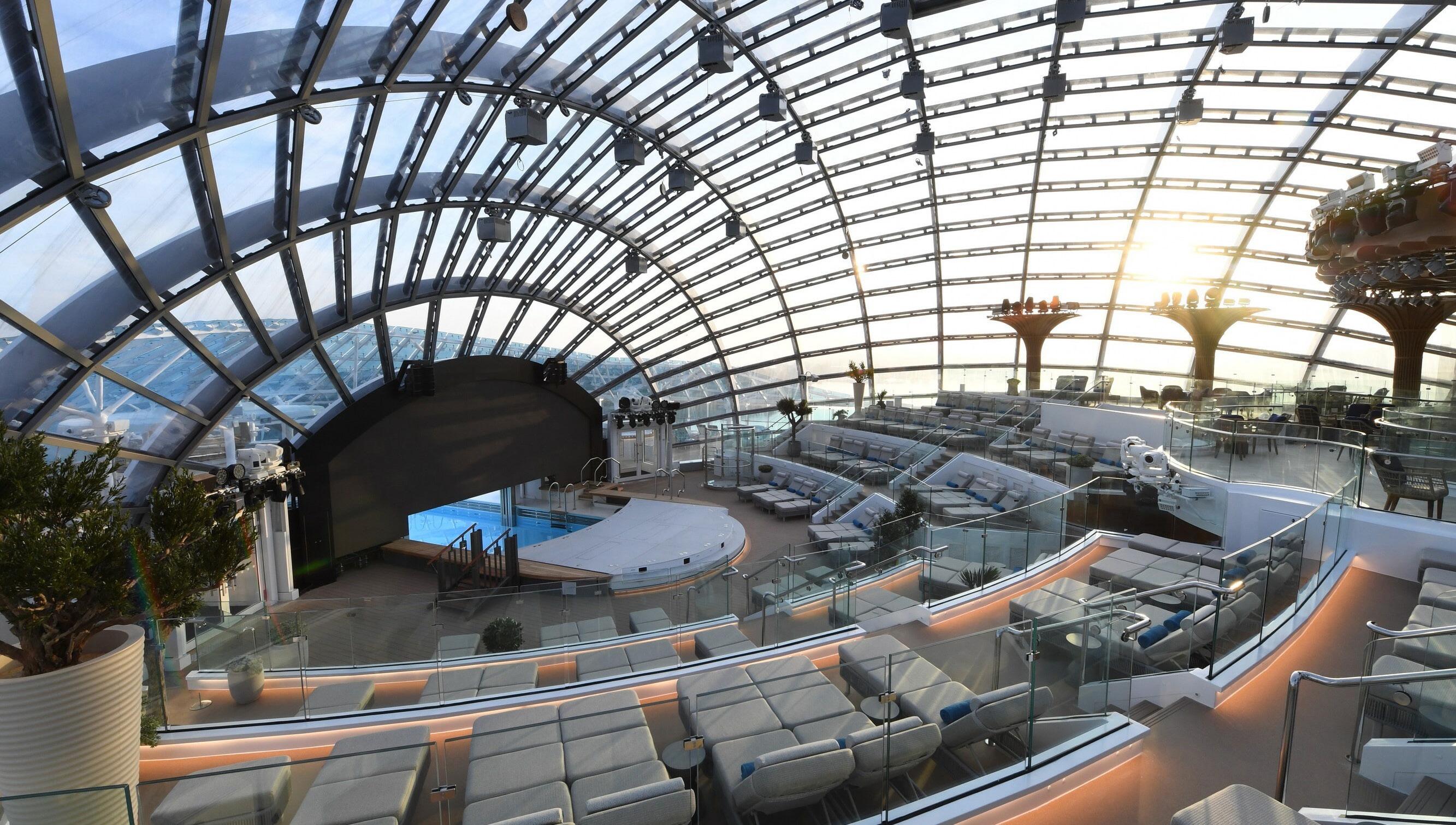
“Communications or ‘telepresence,’ retail and education are a few of the obvious markets,” says Paiva, adding that Octopus has been exploring several non-traditional uses in sports, entertainment, hospitality and wellness.
“We are currently working on a couple of projects utilizing this technology and have developed several proprietary concepts that we are currently pitching to potential clients. I have collaborated with several different companies including Clark, Blackburn Entertainment, iDENTITY and others, experimenting with different production techniques to maximize the effect and entertainment value of the technology.”

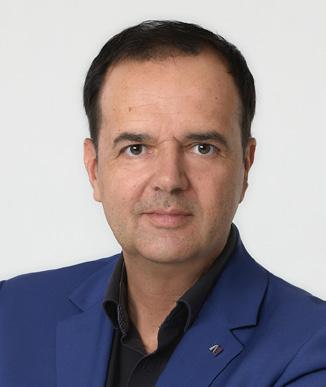
With the help of Octopus Creative, Attraktion! has recently developed an outdoor version of Cinesplash 5D, working with an LED screen for daylight use. “A motion cinema in a pool which moves while under water is unique and we are a world leader in this field with our Cinesplash 5D product,” says Attraktion! CEO Markus Beyr. “Traditionally, waterparks and leisure clients built a theater for it. Now with the outdoor version, it can be used under daylight with the LED screen. Brian and I have known each other for many years and his company is the exclusive screen supplier.” Attraktion! launched the outdoor Cinesplash 5D product at IAAPA Expo Asia earlier this year. As Beyr reveals, “we are finalizing the first venue and plan to open it next year in Asia.”


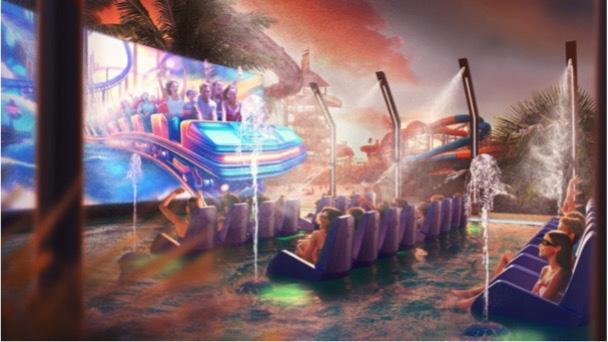
With Paiva’s experience in the cruise ship market, Octopus Design Studio will be the exclusive rep for the outdoor Cinesplash 5D product within the cruise vertical. And the addition of the attraction to his company’s lineup encouraged him to further develop the FluidLED screens to be compatible with 3D. “The appeal of the attraction is magnified when guests outside the attraction can see everything going on but cannot experience the film without the 3D glasses,” explains Paiva. “The addition of the 3D LED screen really draws in a crowd that then wants to have the full experience for themselves.”
Emphasizing his interest in the intersection of technology and content along with his company’s role in ideation and development, Paiva plans to modify the Cinesplash product for other applications. “One of the things that came out of my conversations with Markus was a reimagining of the indoor version as more of a meditative kind of experience. You go in and you have a 10-15-minute slow journey over beaches and a tropical island – you get the saltwater spray; you feel the water lapping at your feet. Experiencing very gentle movements in the simulator seats helps you to get into more of a relaxed state. You never know where these things are going to go. I have really enjoyed the creative collaboration.”
Where things go with Paiva and Octopus Design Studio is also a work in progress. “We are open to collaborations and partnerships across the industry and various markets,” he says.
For more information or to set up a meeting with Brian Paiva during IAAPA Expo or after, email Hello@OctopusVIP.com. •



DISCOVER MORE!
Our team of specialists in concept design, engineering and manufacturing can deliver the most thrilling experience for your guests!
Whether you want to create a new family coaster that appeals to children, teens, parents and grandparents, are looking for a new heart-pounding experience to delight thrill seekers or want to develop any other attraction that will make your venue a success, Vekoma will assist you to discover more!
We look forward to meeting you at IAAPA EXPO in Orlando!
WWW.VEKOMA.COM
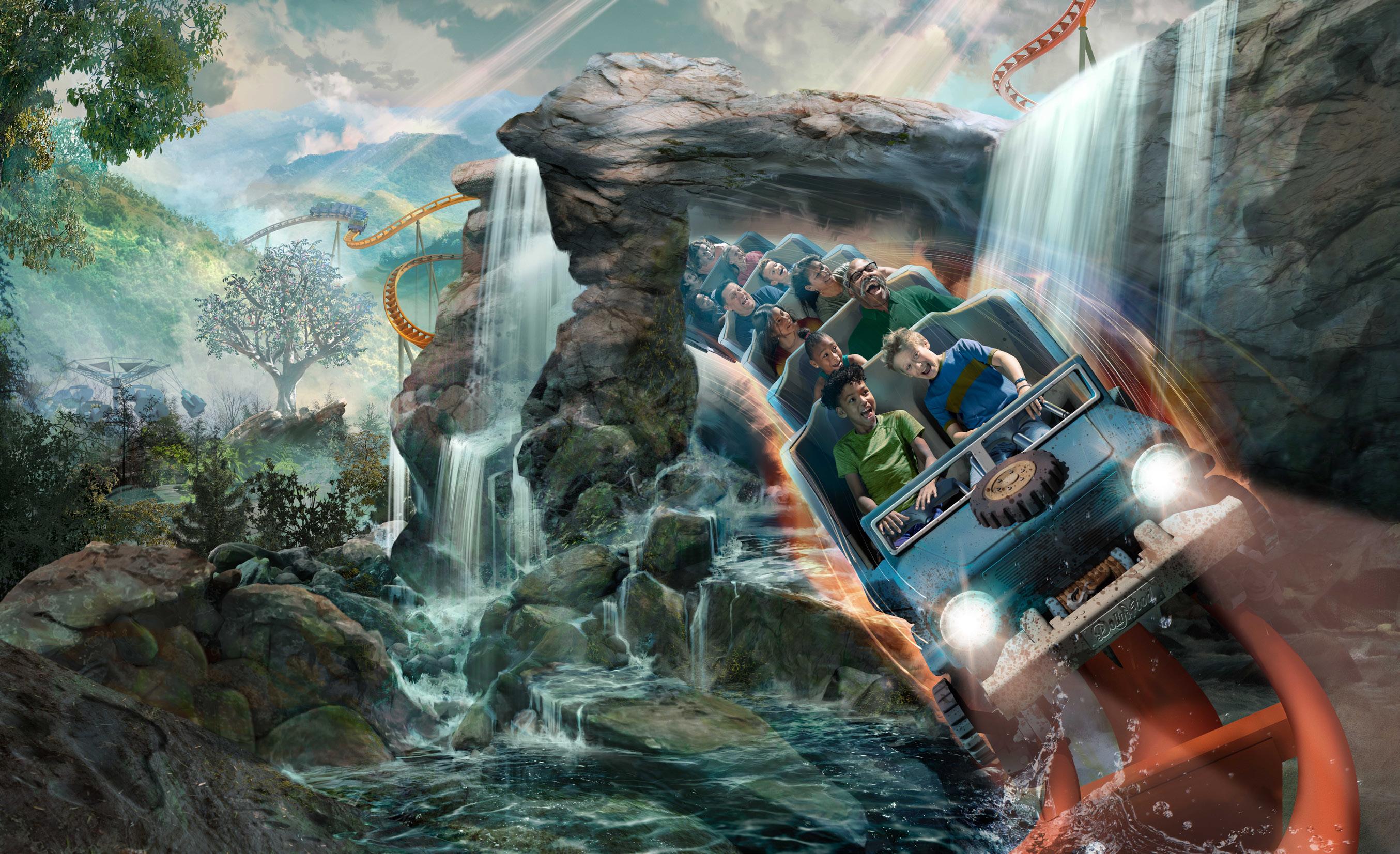
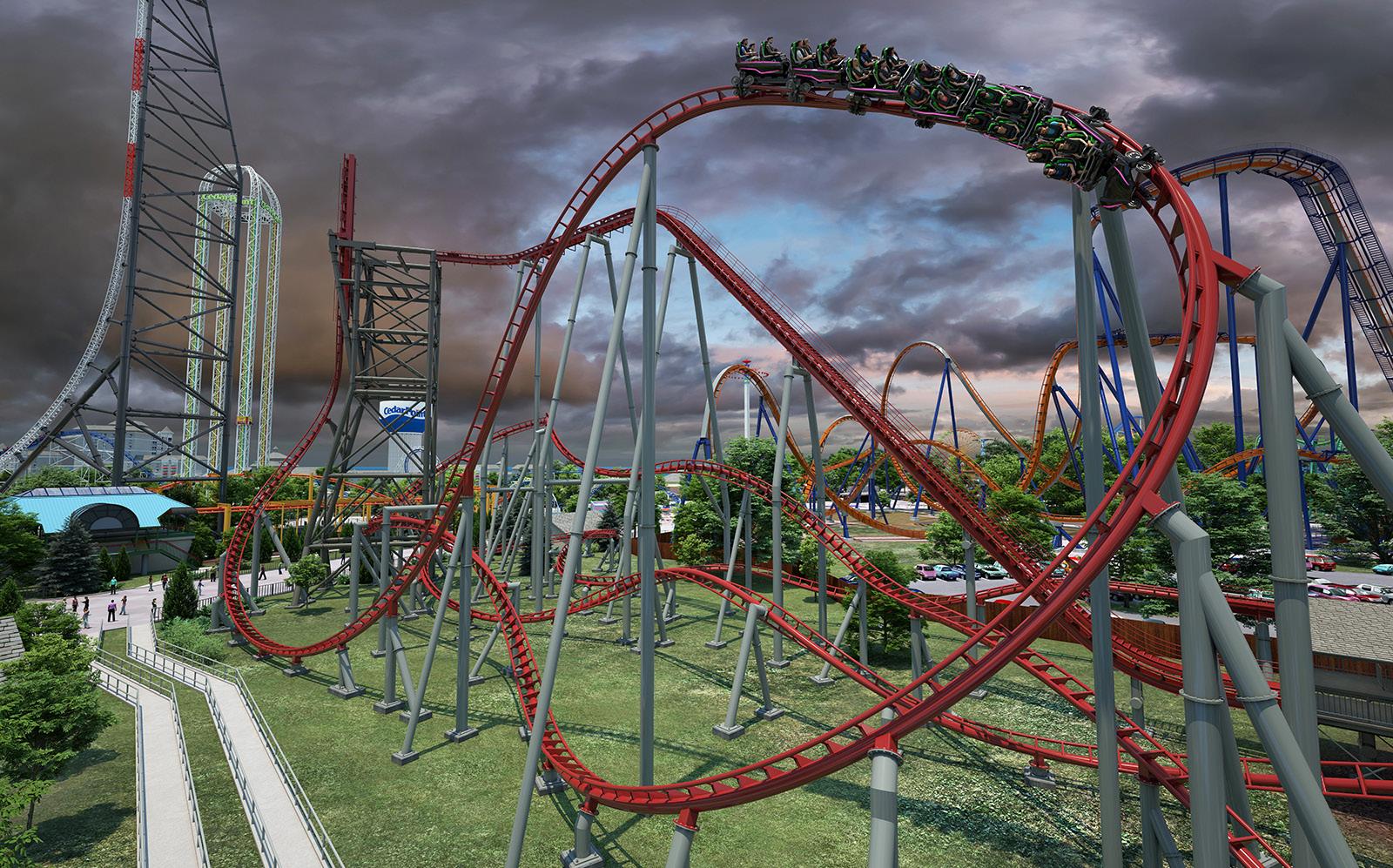

CEO Philip Hernandez’s focus on innovation helps guide the lighting manufacturer
by Jordan Zauha
“Ilike to say that we make very small things, but we have big ideas,” says Philip Hernandez. As CEO of Gantom Lighting & Controls, he understands the important role lighting equipment plays in creating the perfect environment for attractions, theme parks, museums and more. Gantom’s incredibly small, low-voltage lighting fixtures have become staples at Disney and Universal theme parks, and even earned a Thea Award for Six Flags Magic Mountain’s JUSTICE LEAGUE™: Battle for Metropolis.
The company’s success, in part, can be attributed to a focus on product development and innovation, based on direct feedback from their expanding roster of clients. “As a manufacturer, we don’t always know exactly where our product ends up,” explains Hernandez. “That’s why we work closely with distributors, integrators, and designers to understand how we can make things better and easier for them.” The current focus for Hernandez’s team is standardizing product lines – part of the larger effort
to ensure Gantom remains responsive to market needs. Hernandez’s forward-thinking approaches to running the business have been a source of strength for the company, keeping staff employed throughout the pandemic and setting Gantom up for continued growth.
Bringing a career into focus
Innovative entrepreneurship has been a theme of Hernandez’s entire career, which began to take shape after annual family visits to Disneyland. Among his favorite attractions was Haunted Mansion Holiday, an annual seasonal overlay introduced in 2001 that integrates stories from Tim Burton’s The Nightmare Before Christmas into the classic dark ride.
Inspired by this Halloween twisted classic and Universal Orlando Resort’s Halloween Horror Nights, Hernandez developed a love for experiential storytelling and, particularly, haunted attractions. “All my favorite memories were made in theme parks or in haunted houses,” he notes.
He started by creating elaborate home haunts, eventually growing to the point of filing city permits due to popularity. It was during this time that Hernandez noticed a lack of information regarding haunt suppliers, designers, and operators. Sensing an entrepreneurial opportunity, he founded the Haunted Attraction Network (HAN). As the production and its audience grew, Hernandez interviewed high profile and award-winning entities. This was how Hernandez first met Gantom in 2016.
HAN started as a podcast but swiftly expanded to a website, email newsletters, multiple social media channels, and print magazines. Today, the HAN podcast has over 1,000 episodes with over 10,000 monthly downloads and has expanded heavily into video with 50 million views in 2023.
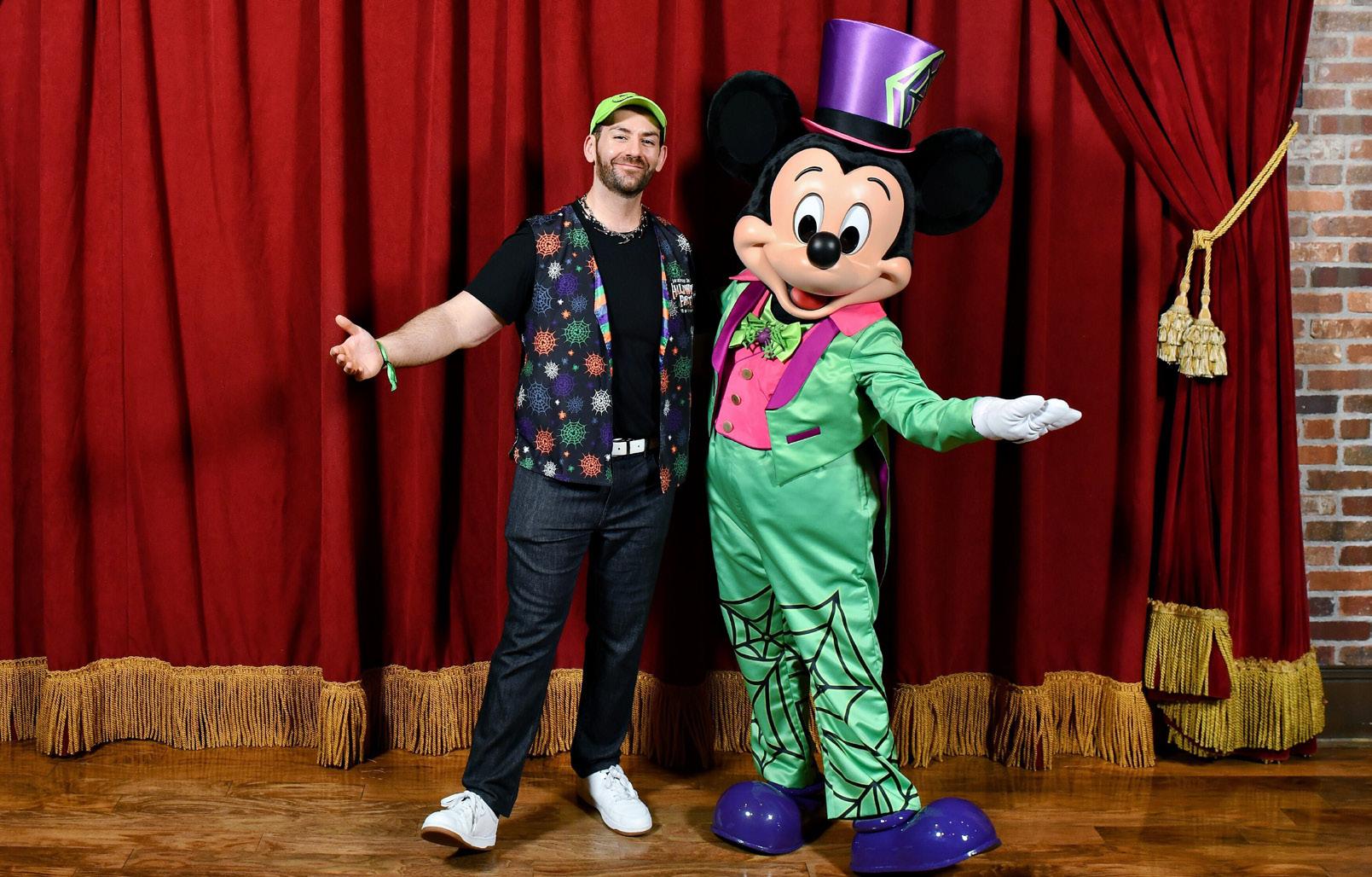
Founded in 2010 by Quan Gan and Jerry Dong, Gantom’s small intelligent spotlights, a must-have for spaceconstrained environments, had already become a favorite for haunts and Halloween attractions.
Hernandez hit it off with the fellow entrepreneurs and during a subsequent conversation, Gan floated an offer to Hernandez: become marketing chief promoting Gan’s latest offering: ZTAG – a gun-free laser tag product. As a parent Gan drew inspiration from his young children to develop a game without the use of screens or gun-based gameplay. ZTAG’s wearables provide tactile feedback for play and learning, all without the need for direct contact. Getting the word out on this latest venture was imperative. Hernandez had already done exactly that, promoting not only his own venture but an entire industry through HAN. That skill was precisely what Gan and ZTAG needed.

Hernandez started on a contract basis and then moved over to ZTAG full-time. He and Gan traveled to over two dozen trade shows during a single year, displaying ZTAG’s play capabilities. From there, Hernandez’s role expanded, first including marketing for Gantom and eventually taking on business development. “I just kept collecting hats,” Hernandez says.
Hernandez takes the helm
Eventually, Hernandez traded in all those hats for one big hat when Gan asked Hernandez to become Gantom’s chief executive officer. As co-founder, Gan would still be involved with major company decisions, but his focus would shift to growing his latest venture.
Hernandez now stood as the head of a small global team alongside Dong, its other co-founder and chief technology officer who led product development in China. For the company to continue its string of innovative product launches, Hernandez recognized how important it was to unite the company.
“I made the executive decision before COVID to shift into a remote company. It was an incredibly challenging process,” recalls Hernandez. Tackling the obstacles of time zones, translation and management software, he crafted a culture focused on efficiency and effective communication. Through trial and error along with reliable software, he aligned teams on both sides of the world. Hernandez drafted new KPIs for the company, developed norms and rules for the new communication structures, and built in a development-focused culture of regular check-ins.
In 2020, the company, now headquartered in Orlando, was in the middle of its conversion with fully remote meetings and an integrated management structure when suddenly the world came to a halt.
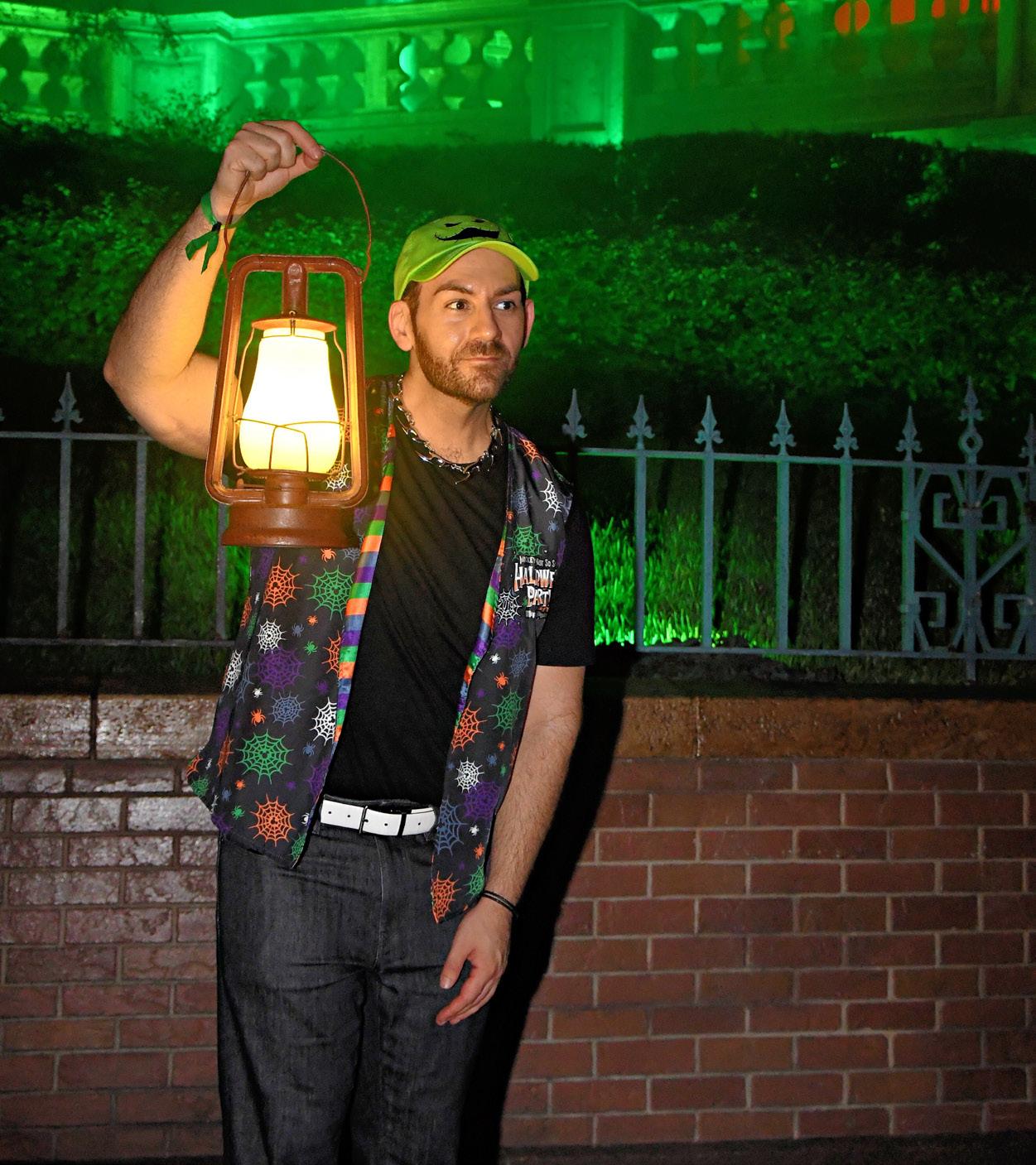
“Nothing could have prepared us for the pandemic. We had a bit of a leg up because we already had a remote culture,” says Hernandez. Despite the uncertainty and the unprecedented nature of the impact of COVID-19 on the attractions industry, Hernandez and Gantom leadership doubled down on their people.
A two-pronged approach was quickly adopted. For the human element, the company maintained high morale by way of remote “coffee chats” and social events. Meanwhile, executive leadership developed a crisis plan, ensuring the company’s sustainability. KPIs were updated, and weekly leadership strategy meetings ensured the company remained agile as it developed its long-term plan. The executive leadership team went so far as to forgo salary to guarantee staff retention.
Through proactive internal development, Hernandez laid the foundation for the company’s future. Gantom built out and refined its customer relations management plan. The sales team learned OBS, recorded product videos, and developed an entirely new method of virtual demos. Concurrently, the product development team in China continued its technological innovations. During the lockdown period, the team created the company’s smallest framing projector to date: Juni.
The remote culture of the company, championed and developed by Hernandez, was refined and solidified. The maximization of productivity and unification of the U.S. and Chinese halves blossomed significantly during this period.
Innovation is not a one-time event
Over the years, a new insight emerged for the compact lighting supplier. Originally, Gantom assumed that their products would not be used in place of regular fixtures. But through his contacts with designers and integrators, Hernandez noticed that its lights were often being hung right beside larger fixtures. That realization led to an effort to make Gantom simpler to integrate with other products. “Making installation easier is the goal,” says Hernandez.
“Our fixtures are low voltage and the ‘brains’ for our equipment are in the fixture itself,” explains Hernandez. “All it needs is power and data.” For 2024, Gantom’s proprietary cable system is being replaced with a standard CAT6 system, allowing for easier integration into lighting systems as well as reduced costs for buyers. This alignment with the industry standard showcases Gantom’s commitment to simplicity for its customers while underscoring its confident position in the field.
“This is an important shift for the company,” explains Hernandez. “We are implementing these changes as a direct result of customer feedback, while we continue to listen to our clients for ways to make our products even better.” The company has also developed an adapter for its products to connect with low voltage track, with a high voltage track adapter coming soon. Gantom will showcase the improved cable system and adapters at both LDI 2024 (December 8-10, Las Vegas) and IAAPA Expo (November 19-22, Orlando).
A foundation for the future Hernandez is proud of the work his team has done to grow Gantom’s footprint and reputation. “The culture of innovation and support that we’ve built will serve us well as we look to the future,” says Hernandez. Gantom products have become a themed entertainment industry staple. Because of this industry confidence in its products, the company now aims to reliably feed the growing number of attractions and renovations with its equipment.
As proof, Hernandez points to the increasingly varied and extensive list of new facilities utilizing Gantom’s products, including the Louvre, SeaWorld Abu Dhabi, Broadway shows, museums, zoos, and even the recently opened dark ride Spongebob’s Crazy Carnival Ride [see InPark issue #103, “Seven secrets behind SpongeBob’s Crazy Carnival Ride”].
“Our fixtures are so small they are often hard to see when installed,” says Hernandez. “But chances are if you’ve seen light coming from a small space, it’s a Gantom product.” The comparison to Hernandez’s own role is too obvious to not point out. As powerhouses of innovation working behind the scenes, both Gantom and Hernandez have a bright future ahead.
Visit Gantom’s booth at LDI (#2110) and IAAPA Expo (#2072) or schedule a meeting by emailing philip@gantom.com or sales@gantom.com. •
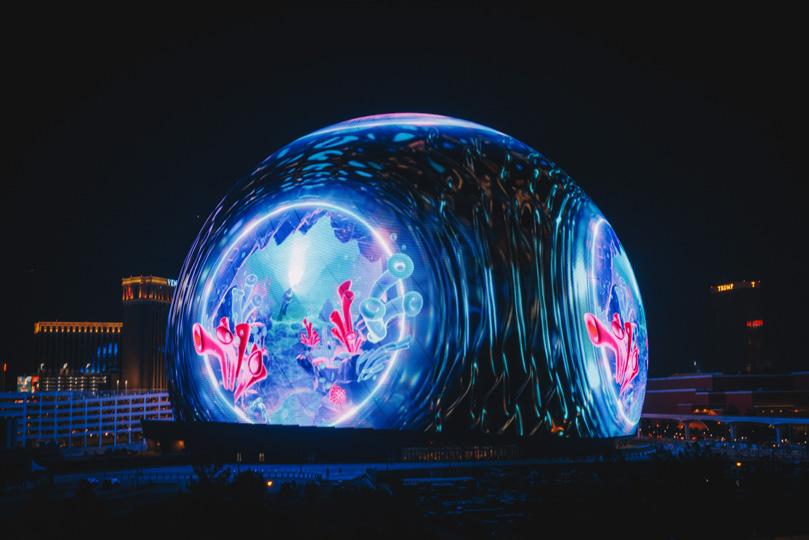

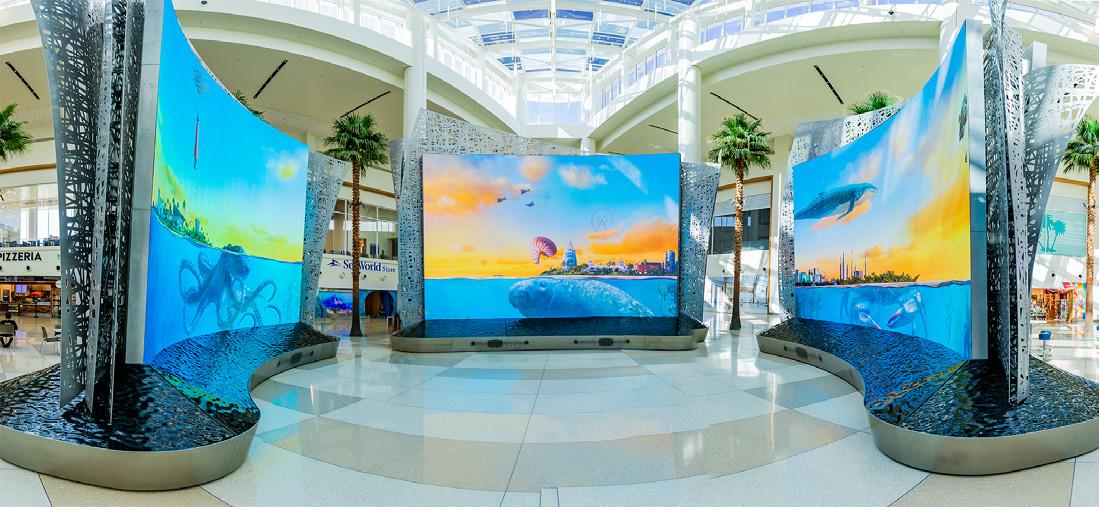

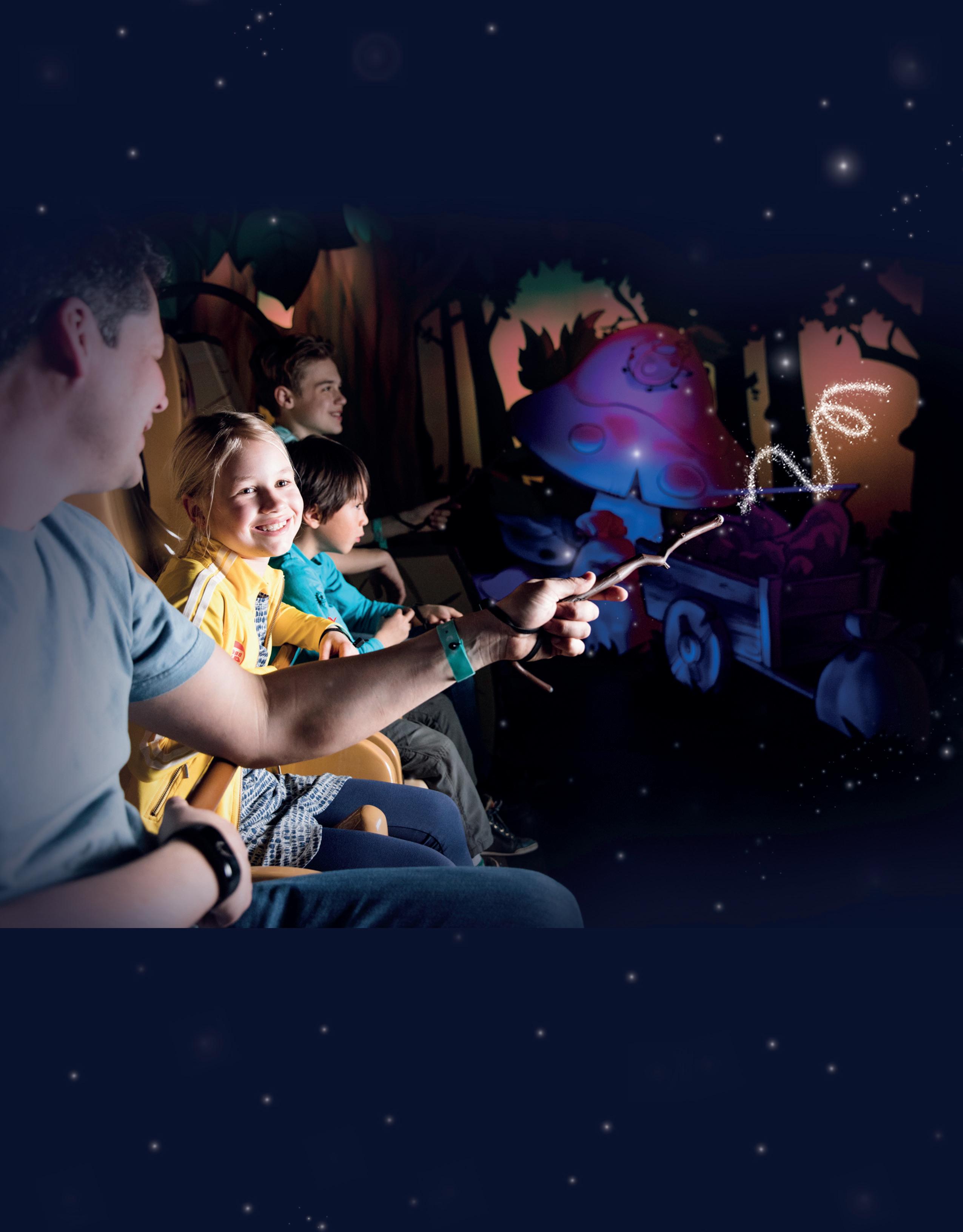
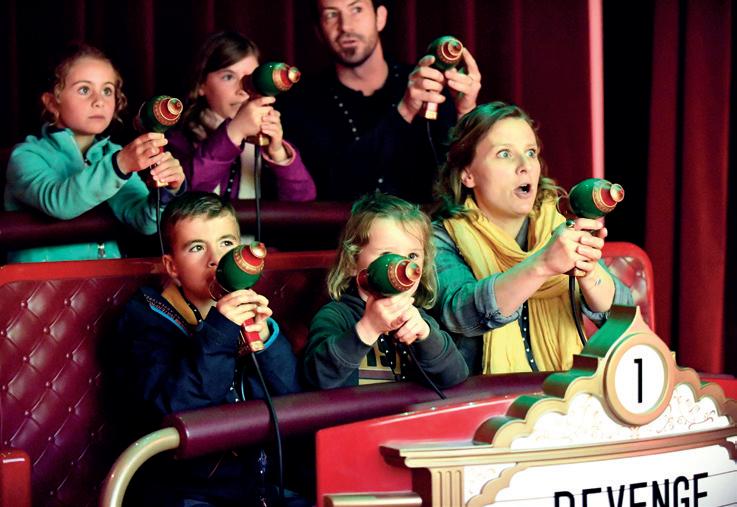

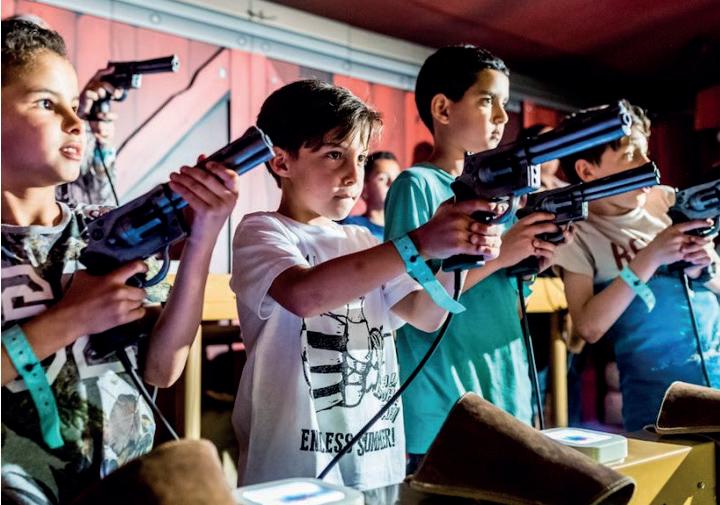

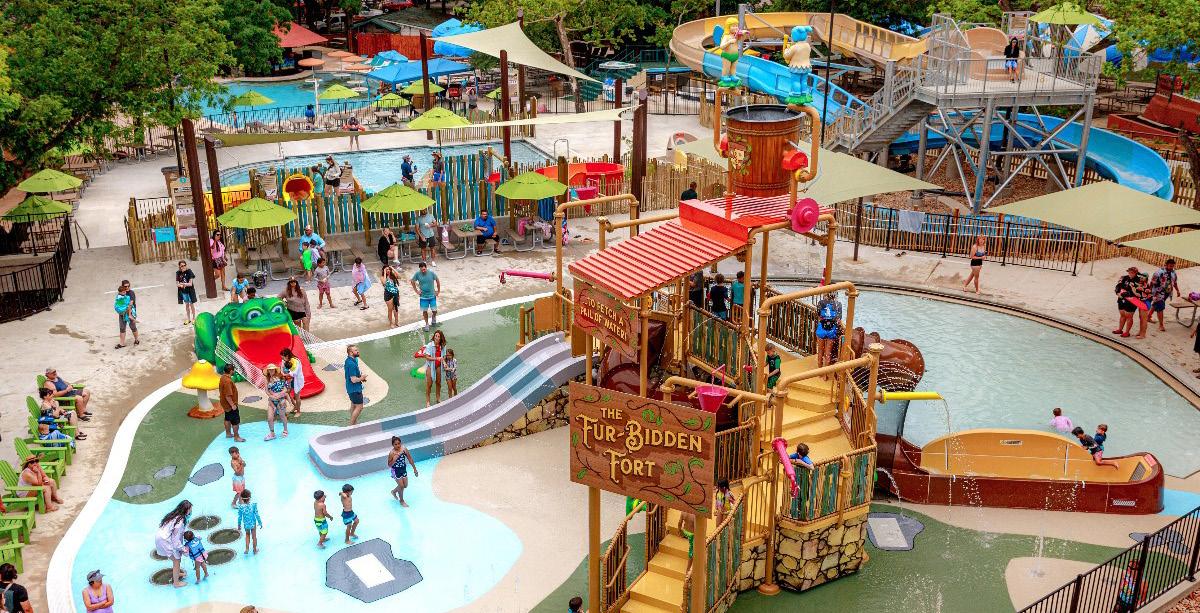
WhiteWater creates custom attractions for two leading waterparks
by Joe Kleiman
Waterparks, like theme parks, prosper by investing in new attractions and finding the proper balance between thrill rides and kids’ attractions. This year, two of North America’s largest and most innovative waterparks added new experiences targeting younger guests. Both Mt. Olympus Water & Theme Park Resort in Wisconsin Dells, Wisconsin, and Schlitterbahn Waterpark & Resort in New Braunfels, Texas, worked closely with their long-term supplier WhiteWater to create custom attractions.
Known as the “waterpark capital of the world,” Wisconsin Dells is home to dozens of small attractions and five major parks. One of the largest, Mt. Olympus, features a number of firsts for the attractions industry. A combination theme park and waterpark, Mt. Olympus is home to the world’s first multilevel go-kart track, the first modern wooden coaster to incorporate an inversion, and the Western Hemisphere’s first SlideWheel®.
Fotini Backhaus and Maria Laskaris are the third generation to run the family-owned resort, comprised of 1,500 hotel rooms and campsites, along with indoor and outdoor theme parks and waterparks. Fotini and Maria’s parents (and Mt. Olympus owners), Nick and Eva Laskaris, are at the forefront of the operation and help guide the development of new projects, including a new slide tower and children’s play area for 2024. “Our original concept was not to go tall – we just wanted to add more slides,” says Maria. “Then my father [Nick] went to the industry trade shows and he saw these new tower slides that were opening and that was it – we had to go tall.”
One such inspiration was the Daredevil’s Peak at Perfect Day at CocoCay, Royal Caribbean’s private island waterpark in the Caribbean, which stands at 135 feet [see InPark issue #79, “WhiteWater brings continuous innovation to parks”]. Now, five years later, Mt. Olympus’ newest attraction, The Rise of Icarus, stands three stories taller, at 165 feet, making it the tallest waterslide tower in North America.


The tower contains North America’s tallest waterslide, a WhiteWater enclosed High Speed AquaTube, which encircles the tower four times during its descent. Sixty feet below the tallest slide entrance are four other slides, three enclosed AquaTube slides that curve on their way down and an open Freefall slide.
The park pays tribute to the Laskaris family’s Greek heritage by theming new attractions to Greek mythology. The recently added SlideWheel is themed to the many snakes that made up Medusa’s hair. For the tower, the family turned to Icarus, the fabled son of Daedalus, who built wings of wax for the two to escape the prison of King Minos. Daedalus warned his son not to get too close to the sun, and when he did, Icarus’ wings melted and he plunged back to Earth.
“Our mother [Eva] picked the colors for the tower and the slides,” says Fotini. “It incorporates yellows and oranges towards the top to represent the sun and blues and greens towards the bottom for the ocean.”
“We had the support of the city and the community in bringing in the tower,” says Maria. “It’s so iconic and so tall that it can be seen for miles around.”
According to Doug Smith, WhiteWater’s Global Head of Sales, the tower was designed at WhiteWater. “We have ninety engineers on staff, whose expertise range from structural to electrical, so we’re able to design and build the structure in house, basing the design on local climate, including wind, other weather conditions, and seismic concerns,” Smith says.

While the tower went up in a formerly grassy area, construction did necessitate the removal of a children’s play area, which the Laskaris family decided to rebuild. The island where Icarus’ body washed ashore is known as Icaria and so the new play area located at the base of the tower now sports this name. Icaria features eight slides for kids and families, and an AquaSplash spray pad covered in Life Floor, a slip-resistant and soft flooring for the entire area.
“It’s very important for us to see multigenerational families visit Mt. Olympus,” says Maria. “We get a lot of pleasure out of that.” The sentiment mirrors the multigenerational family management of the park that the Laskaris family has provided for decades.
From the supplier side, the stability and leadership provided by the family also makes their role easier. “We enjoy working with Mt. Olympus, and with Fotini and Maria, who are the new leadership generation coming in,” says Smith. “The entire family has been partners. They want the park to be the biggest and best in the market. The visibility of the park, including the roller coasters, the Trojan Horse, and now Icarus tower,
have all proven very useful in marketing the park for them. Fotini and Maria were very smart in that in addition to the thrill slides, they pushed hard to add a larger kid’s area to expand their demographics.”
Preparing little ones for big rides
On the southern end of the U.S., Schlitterbahn has been a staple in New Braunfels, Texas, since it opened in 1979. In 2019, the park was acquired by Cedar Fair, which merged with Six Flags in 2024. The park is known for its innovation and clever implementation of rides. The commitment to ingenuity also applies to its kids areas.
For 2024, the park created a new children’s area themed to its mascot Schatze the dog and wanted something unique as its headliner. According to Chris Ozimek, Schlitterbahn New Braunfels’ Senior Manager, Brand Activation & Communications, “Rick Belhumeur, the Assistant General Manager at our Galveston waterpark, thought that it would be great to have a ride that would act like ‘training wheels’ for the bigger slides. We thought about it and decided to make that a key component of Schatze’s Storybrook Park.”
The new area is divided into four sections.


• Bow Wow Blaster is the “training wheels” attraction Belhumeur envisioned. It is the world’s first kids’ water coaster – a smaller, less intense version of the Master Blaster.
• Fairy Tail Trail is a re-theming of an existing area of the park. In the new version, classic fairy tale characters have been portrayed as Schatze’s canine friends (e.g., Little Red Riding Hound, Houndsel and Petzel, Rapawnzel and the Three Little Pugs).
• Schatze’s Paw’nd features three kid-sized waterslides, including one that seats four across, allowing family members big and small to slide down in unison.
• The Fur-Bidden Forest is home to a WhiteWater AquaPlay 550 structure called The Fur-Bidden Fort. The play area includes nearly 60 different water features.
The design team worked closely with Cedar Fair’s creative staff on the project. All of the creative decisions, including theming, color palette and style guide, involved Cedar Fair’s corporate offices, which approved decisions proposed by the Schlitterbahn team.
“We wanted to pay homage to the original children’s aquatic areas that we were replacing,” says Ozimek. To do so, they refurbished
Schlitterbahn is the birthplace of the Master Blaster, one of the first water coasters to shoot guests uphill with high pressure jets. The first one opened at Schlitterbahn’s New Braunfels, Texas, park in 1994 and Master Blasters can now be found around the world. According to WhiteWater’s Doug Smith, “Jeff Henry [son of Schlitterbahn founder Bob Henry] was inventing new waterpark attractions and manufacturing them through the company’s internal unit NBGS (short for New Braunfels General Store). WhiteWater licensed the right to manufacture and distribute Master Blaster. We’ve made improvements over the years and continued to be a licensee until the patents expired.”
Sir Hopsalot, a giant frog that kids can climb up the back of and then slide down his tongue. The team also created new versions of the park’s classic water-spouting mushrooms and holding the 1,200-gallon tipping bucket on top of the play structure are two fairies, similar to ones that formerly resided on the old Pollywog Pond attraction.
Bow Wow Blaster’s creation was a natural progression for WhiteWater. “I think the post-pandemic era was a turning point for how we approach attractions for younger guests,” says Smith. Children’s play areas were becoming prevalent at waterparks for many years, but the trend of finding more ways to share experiences together, particularly as families, really took off after COVID.” With that in mind, the next step was to take a page from the theme park playbook. “Like a kiddie roller coaster, Mini Blaster helps excite kids for a taste of the larger attractions and also provides a great opportunity for families to enjoy a slide together,” he says.
When creating a water coaster for younger guests, concerns were addressed over the lower weight load and distribution of riders on the two-person rafts. “WhiteWater has an R&D

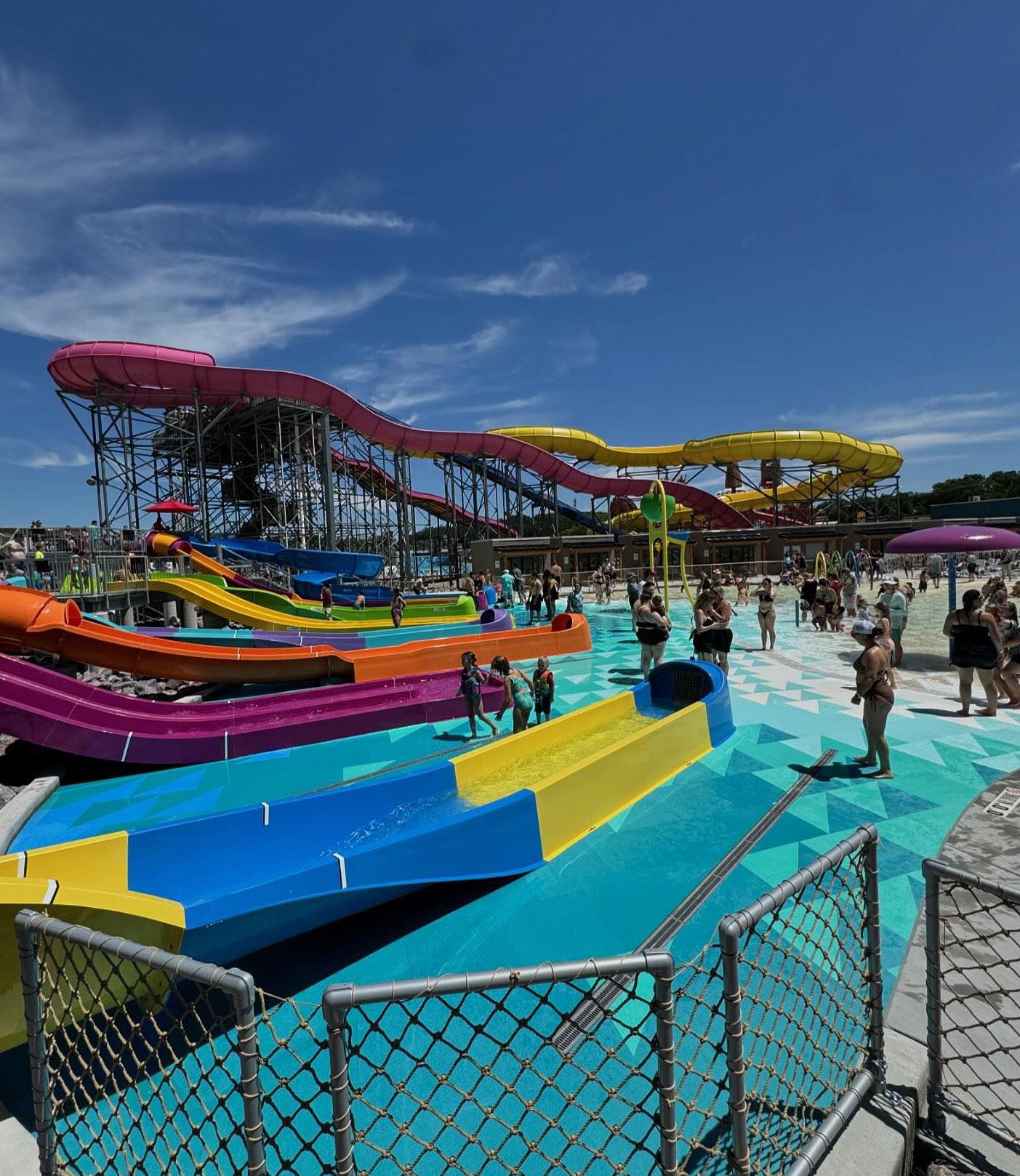
department that just focuses on slides,” explains Smith. “We’ve developed proprietary in-house software that allows us to create 3D ride simulations on a computer. Using this software, our engineers can modify the weight of the riders, the amount of water in the flume, and can even speed up the water coaster in certain sections or slow it down in others.” Bow Wow Blaster uses smaller drop hills and lifts than the conventional Master Blaster to reduce impact on riders. “It is such a unique ride,” shared Ozimek. “It is that perfect pint-sized blend of fun and thrill that is appealing to so many guests.”
For both projects at Mt. Olympus and Schlitterbahn, a lot of the success comes down to teamwork. “We’ve worked with Cedar Fair and Six Flags and Schlitterbahn for decades,” says Smith. “Each park in the chain is looking for something different, and they know their individual markets. By coming up with the Mini Blaster for Schlitterbahn, we helped them bring in something uniquely wonderful for that specific area – but I have a feeling it’s going to be popular everywhere.”
At Mt. Olympus, all the waterpark equipment comes exclusively from WhiteWater. “The team at WhiteWater is strongly committed to deep relationships,” shares Maria. “Because of that, we have a fantastic partnership with them. We love working with them on concepts and look forward to a strong future together.” •
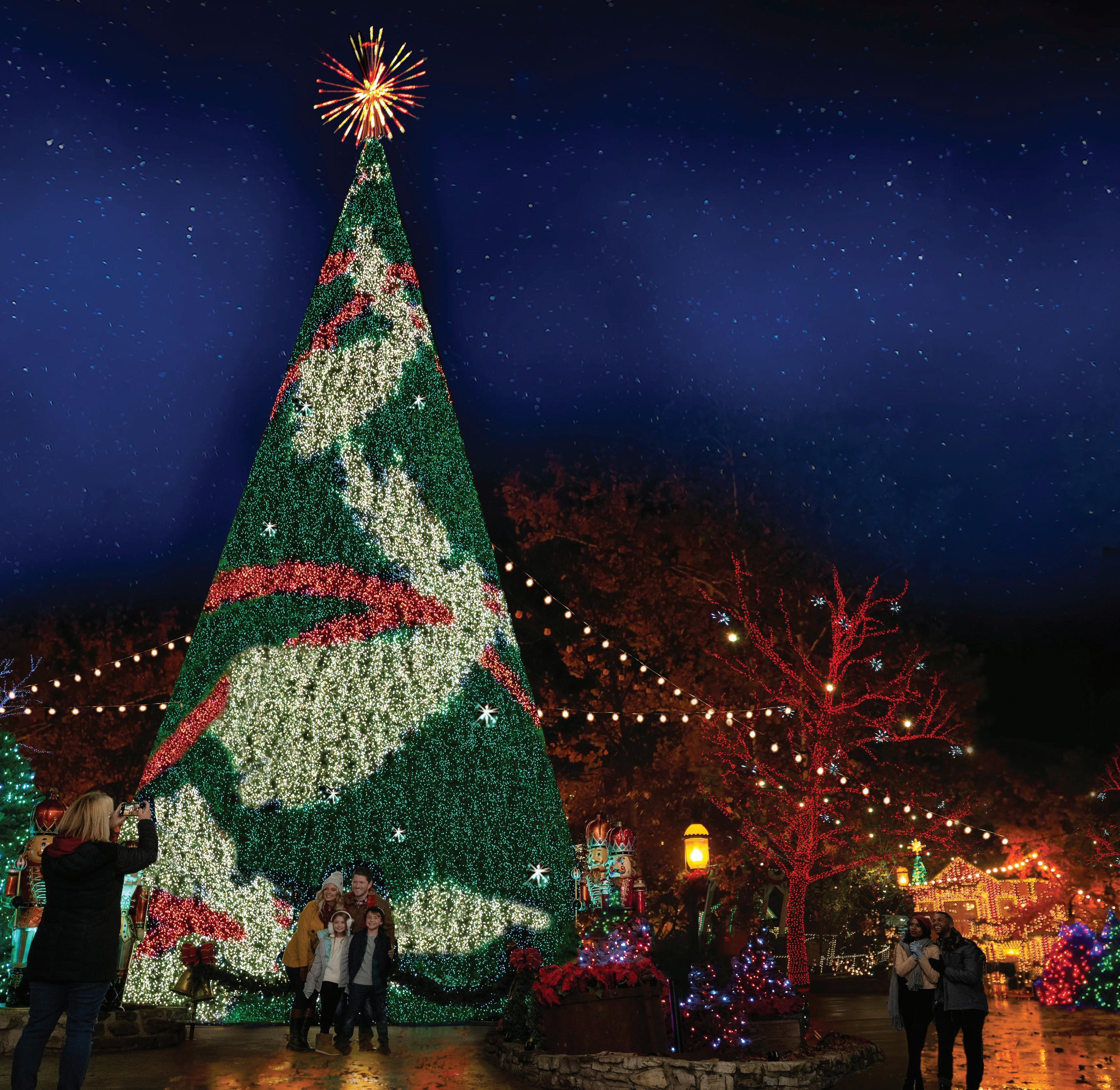


by Judith Rubin
Alarge, colorful butterfly marks the portal to Songteller, a multifaceted walkthrough museum exploring Dolly Parton’s life, work and career. Songteller is one of three facilities that make up the new Dolly Parton Experience at Dollywood park in Pigeon Forge, Tennessee. Located near the park entrance and open since May 2024, the Dolly Parton Experience, one of the theme park’s 11 themed zones, is a reimagining of the former “Adventures in Imagination” area. Guests pass through a series of rooms with exhibits presenting costumes, posters, artifacts, and other objects.
A highlight of the walkthrough museum is a sixminute, state-of-the-art, 360-degree multimedia encounter in a customized 40’ x 40’ x 20’ space. Guests are immersed and enveloped in a digital projection-mapped, curated montage of historic clips and images. The seamless integration of cutting-edge lighting, audio, and video elements creates a dynamic environment to engage the audience at every moment of the playback.
Quince Imaging was contracted directly by Dollywood Parks & Resorts operator Herschend Family Entertainment (HFE) to provide AV technology and services to create this immersive space. Quince Imaging’s services included technical design and integration. The key technology specified was state-of-the-art RGB pure laser projection supporting the Rec. 2020 expanded color gamut, in the form of five Christie M 4K25 RGB projectors. After evaluating it against other options, the client approved the Christie product in a projector shootout at Quince Imaging’s studio.
Larry Howard, Vice President of Business Development at Quince Imaging, said, “The RGB technology is one of the biggest advancements in projector technology in quite a while. It provides about 100% more color volume than laser phosphor projectors can produce. In a side-by-side demo, there’s a real difference that even a novice can see.”
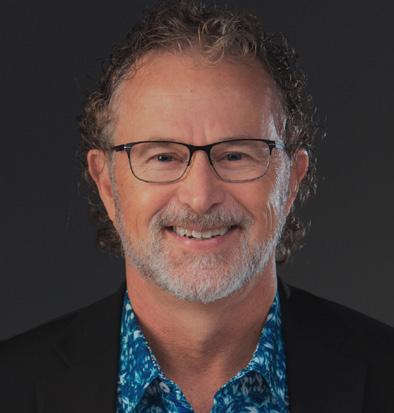


That difference is the Rec. 2020 color space – as opposed to Rec. 709 (HDTV) and DCI-P3 (the standard for cinema). Rec. 2020 is touted for enabling precise color matching, realistic skin tones, and – in general – dramatically expanding the range of what’s possible in media production. It is a key feature of what makes Christie’s RGB pure laser technology highly competitive, disruptive, and enthusiastically received. Having more colors also means it’s possible to reproduce exact brand or IP character colors (see sidebar).
“This room in the Dolly Parton Experience is all about immersion, and the more color we have available, the more real everything looks,” said Howard. “Facial tones, scenic environments, the hills of Tennessee, fall shots with leaves – most importantly, we could show Dolly looking her very best.”
Quince and the Christie M 4K RGB Series
In addition to permanent installations, Quince is active in the live events business, with a sizable in-house supply of AV equipment from various manufacturers. This enabled them to readily organize the projector shootout on their soundstage in Sterling, Virginia. “Various models, including laser phosphor and RGB projectors, were set up, allowing the HFE and Dollywood teams to assess each model’s performance, comparing capabilities, image quality, brightness levels, and color reproduction,” said Howard. Those present at the shootout included HFE’s Joel House (Project Manager, HFE Creative Studios) and Stephen Byrne (Technical Operations Specialist), as well as Cyndi McCormack (Vice President, Guest Experience at Dollywood Parks & Resorts).
In addition to color accuracy, Christie RGB projectors are known for their ability to interface readily with the other system components and deliver the brightness and resolution, ease of
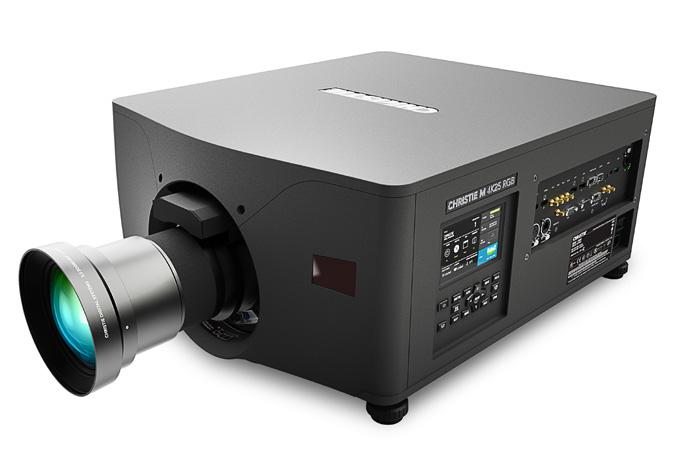

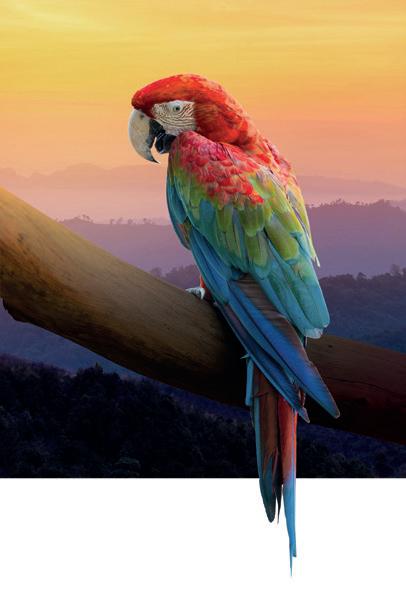
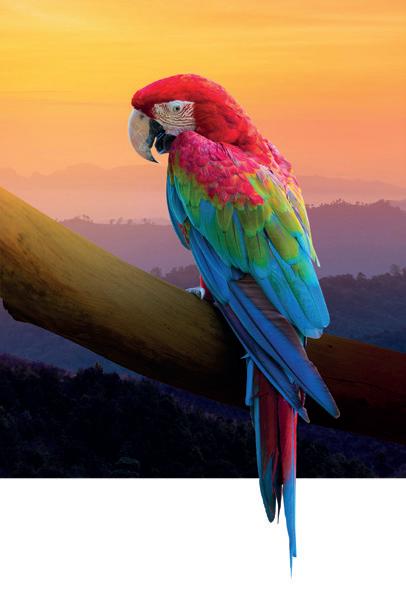
Since we can’t see Rec. 2020 colors without a compatible projector and Rec. 2020 content, this illustration represents the difference between the three color standards. From left to right: Rec. 709, DCI-P3, and Rec. 2020. Images courtesy of Christie
RGB pure laser projection technology uses individual red, green, and blue laser diodes to create pure colors. The Rec. 709 color gamut is the most-used standard today. It defines picture characteristics as having an aspect ratio of 16:9, 1080 active lines per picture, 1920 samples per line, and a square pixel aspect ratio. Rec. 709 was developed for camera encoding and signal characteristics of high-definition television (HDTV).
With a larger color gamut than Rec. 709, DCI-P3 is the standard for mainstream cinema. It has more greens and reds than the Rec. 709 color space, which enables cinema projectors to reproduce more realistic and lifelike colors onscreen.
In 2012, the International Telecommunication Union (ITU) published ITU-R Recommendation BT.2020 (Rec. 2020) for ultra-high-definition television (UHDTV). This recommendation covers various image parameters, including definitions for resolution, frame rates, bit depths, and color space.
The Rec. 2020 recommendation addresses an expanded color gamut. The development of this gamut helped capture realworld colors in a 3-primary system. The standards committee for Rec. 2020 chose color primary coordinates at the extreme edge of the visible color space.
As the only projection technology that can reach 98% of Rec. 2020, RGB pure laser blows open the color palette and gives creatives free rein to bring a vision to life. Rec. 2020 produces 75.8% of all the colors the human eye can see in comparison to DCI-P3’s 53.6% and Rec. 709’s 35.9%.
In other words, Rec. 2020 offers more than twice the color of Rec. 709 and 41% more than DCI-P3. More lifelike colors make the audience experience more immersive, helping creatives and filmmakers tell their stories and bring their visions to life.

installation, small form factor, quiet operation, longevity, and low maintenance requirements that benefit a project like the Dolly Parton Experience.
“The Christie M 4K25 RGB is the lightest and most compact RGB pure laser projector in the market today,” said Ernest Bakenie, Senior Director of Sales, Themed Entertainment at Christie.
The previous M Series was a lamp-based workhorse, popular and widely installed in its day. The new M 4K RGB Series –which includes the M 4K25 RGB now running in the Dolly Parton Experience – was designed to simplify upgrades from one to the other. It uses the same lenses as its predecessor and conforms to the existing installation space. It also delivers all the modern features and built-in software such as Christie® LiteLOC™ (to automatically maintain color balance and brightness over time, regardless of fluctuations in ambient temperature) and Christie Mystique™ (an automated camerabased alignment and recalibration solution for multiple projector installations).
Bakenie also noted the low-brightness mode that the Christie M 4K RGB Series now includes. “The low-brightness mode is ideal for certain attractions, such as dark rides, where Rec. 2020 color performance is needed, but where intense illumination would break the illusion. Conversely, our line of RGB projectors also perform well outdoors as in projection mapping applications,” he said.
More about the system and team
Quince designed and installed a video system with rich color space and an 8.1-channel audio system. Howard reported that each wall was discreetly processed at 4K60 4:4:4 and audio was configured in an 8.1 channel setup. Show control was provided by Q-SYS, as a closed subsystem tied into the parkwide network. Quince provided a single turnkey service spanning
immersive audio systems, a high-resolution video system, and rigging and control systems.
Howard said, “The company does extensive business in live events, so Quince and its team members understand what it takes to have the show open on time. We prep for an installation like a live event – we think about everything.”
In addition to the Christie projectors, key products included JBL AM Series speakers, which, paired with Q-SYS Core 110f & CX-Q 4K4, are touted for bringing crystalclear sound quality to Dolly Parton’s musical narratives; and the Dataton Watchout Version 7 media server to facilitate synchronized, high-resolution media playback. The media producer was Roto. “For any truly immersive environment, full collaboration with the partners designing and supplying the media is critical,” said Howard.
A popular advantage for operators is the versatility potential of media-based systems – the ability to refresh and update them helps keep the presentation relevant and offers something new for returning guests. “Eugene Naughton, [Dollywood Parks & Resorts President], was very keen on their ability to update that system with new media – to enable Dollywood to reflect the scale of the legend Dolly Parton has become and the brand she has built,” said Howard.
“It allows us to update our story because Dolly Parton is always going to continue to grow,” stated Naughton at the grand opening in May.
Bakenie said, “The projectors can handle whatever content comes in and work with whatever other equipment is in the room. They can make changes on the fly, dial in the specifics of what the creative people want.”
“Everything associated with immersive environments just keeps getting better and more realistic,” said Howard. He noted that a great guest experience also depends on what happens outside the buildings. “At Dollywood, guests go into an immersive dark ride or walkthrough and then emerge into a beautiful park, nestled into the terrain. It’s a great combination; as an industry, we’re seeing more of that kind of placemaking vision. Designers and operators understand that it’s important for an attraction or ride to fit into the environment and that everything should support the narrative and the full experience of the place. You’re not just going into a room for a story – the story is everywhere.” •
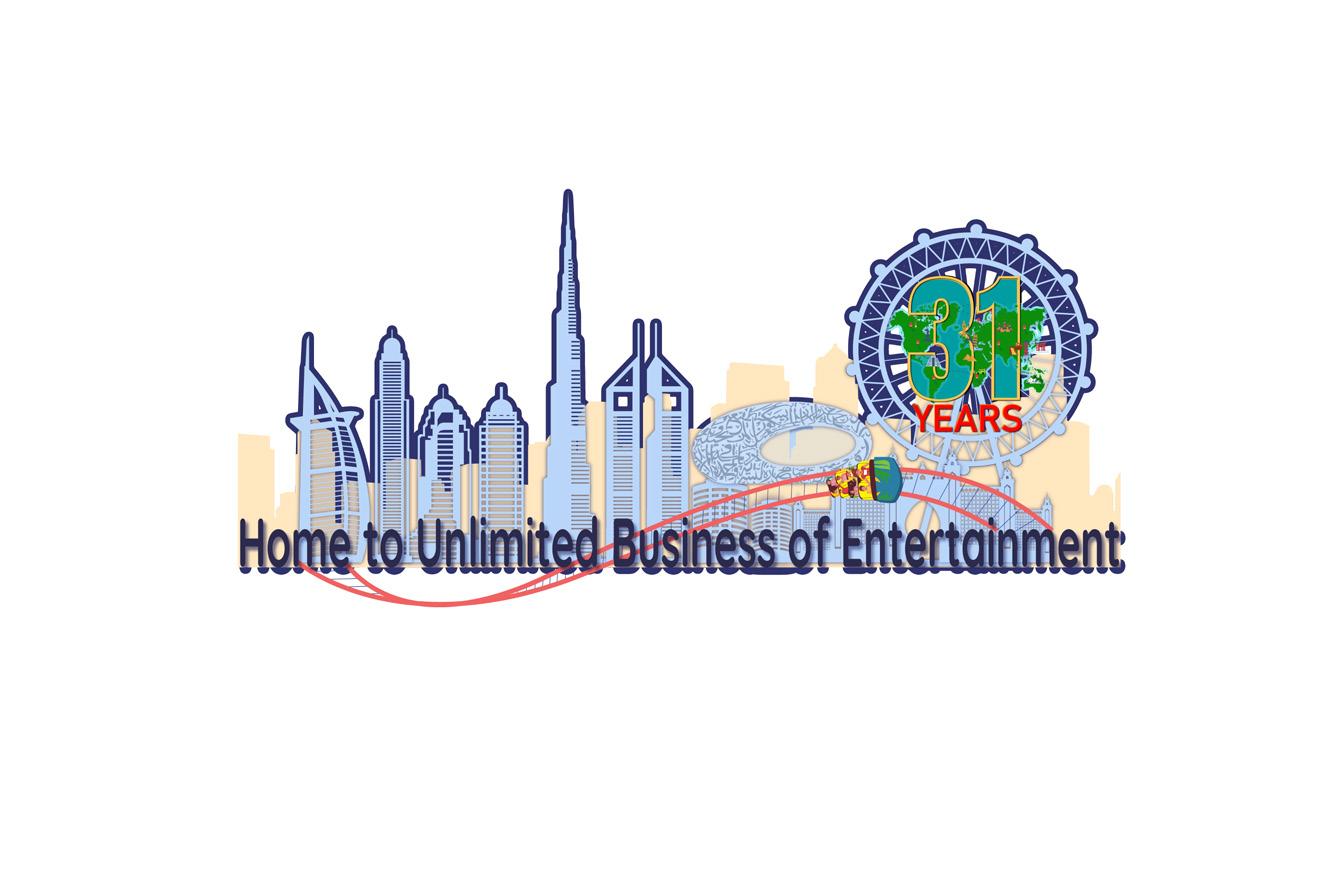
Connect with thousands of potential clients from across the Middle East, Africa, and Asia.
Present your latest products and services to an audience eager for cutting-edge solutions.
Grow your business with key players from around the world.
Stand out among competitors and position your brand as a leader in the industry.
Discover the latest market insights and emerging technologies to keep your business at the forefront of innovation.
Engage directly with decision makers and buyers and expand your market presence.
Admission Systems
Amusement Rides
Amusement & Entertainment
Brand Owners & Franchisors
Augmented Reality/Virtual Reality
Coin Operated Machines
Computer Services & Software
Consultants
Entertainment
Facilities & Ground Products
Food & Beverage
Games & Devices
E-Gaming
Gifts & Souvenirs
High-tech Equipment & Effects
Leisure Products & Services
Museum & Gallery
Participatory Play Equipment
People Moving Equipment
Photography
Top level management who can make on the spot decisions
Security & Safety
Show Productions
Soft Toys
Theatrical Equipment & Supplies
Themed Retail & Entertainment
Tourist Attractions
Trade Publications & Associations
Vending Machines
Water Related Products & Services



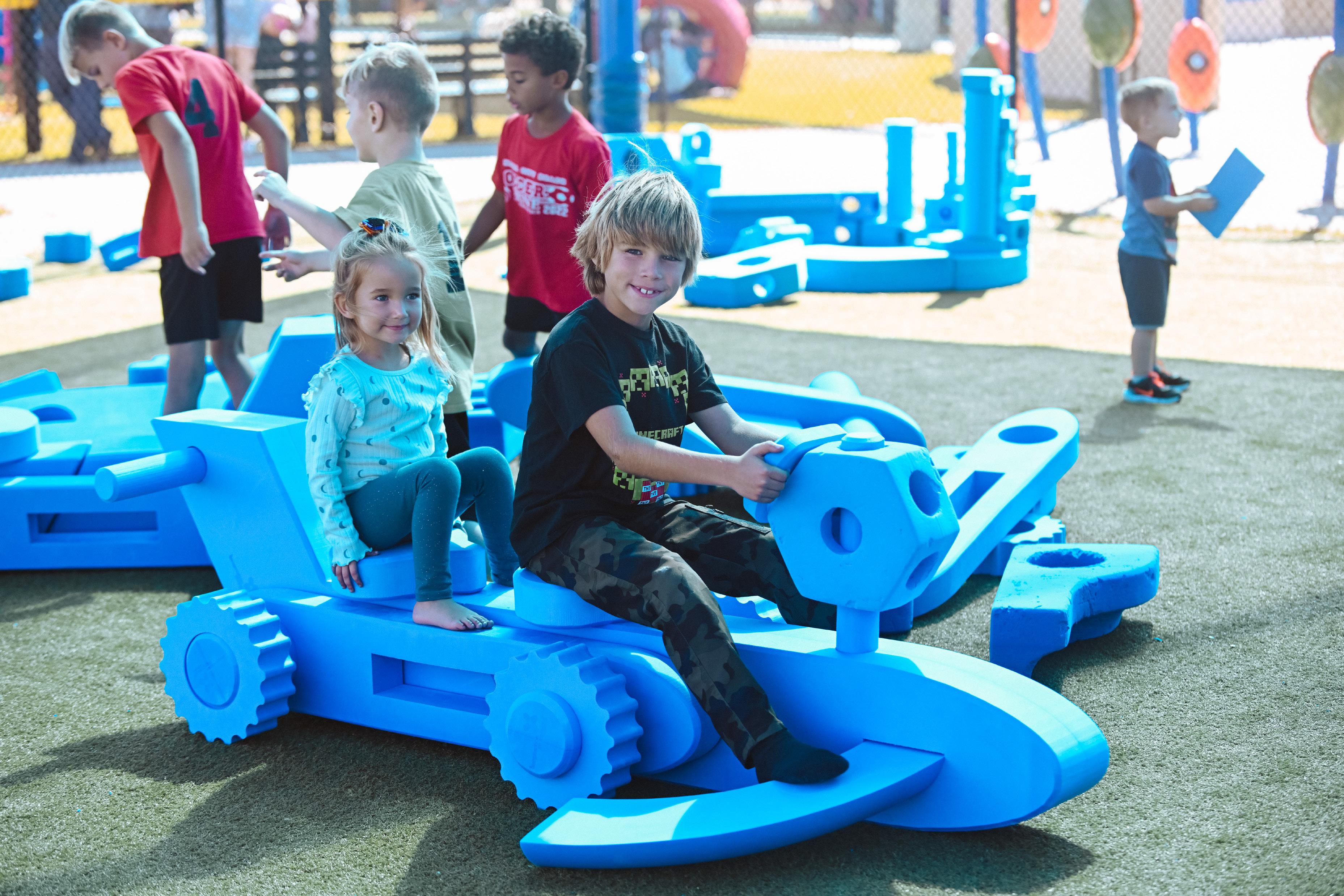





We can’t show your next dream attraction. Because if we did,
it wouldn’t be yours.
Talk to us about your ambitions. Book a meeting at IAAPA Expo here:
The future is ours to create.
